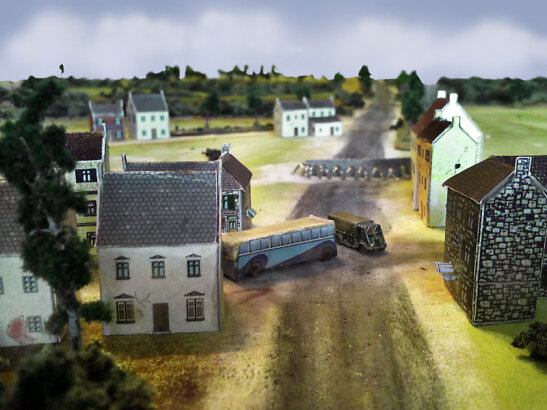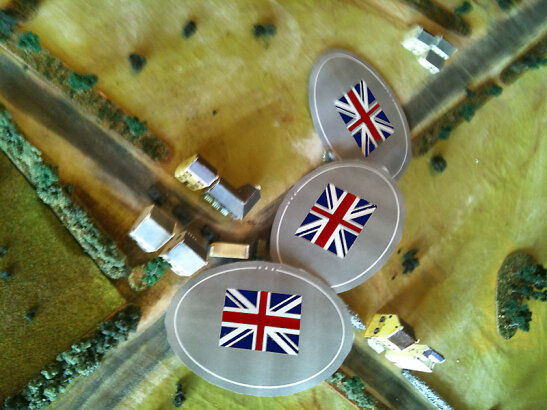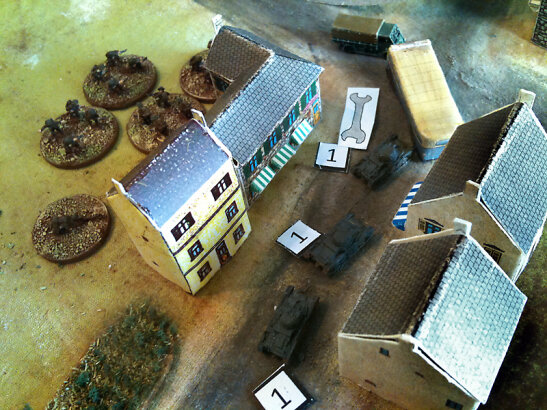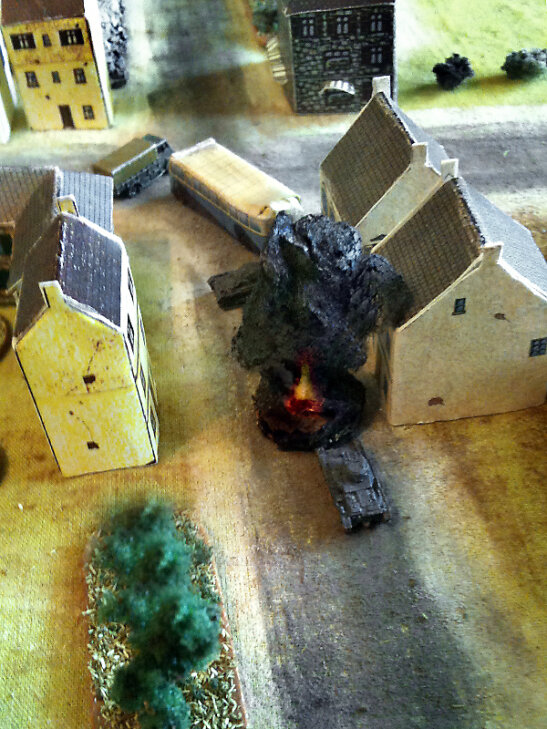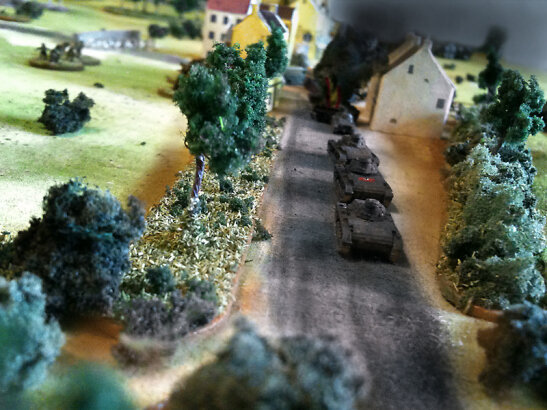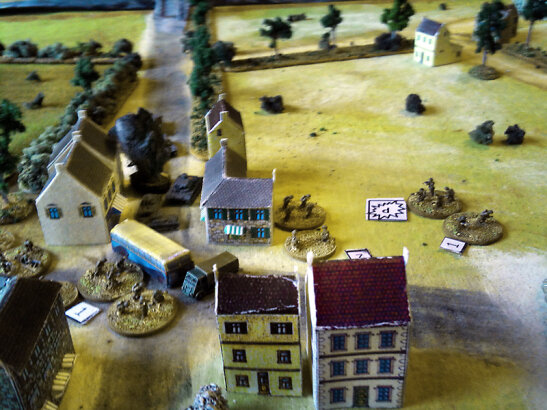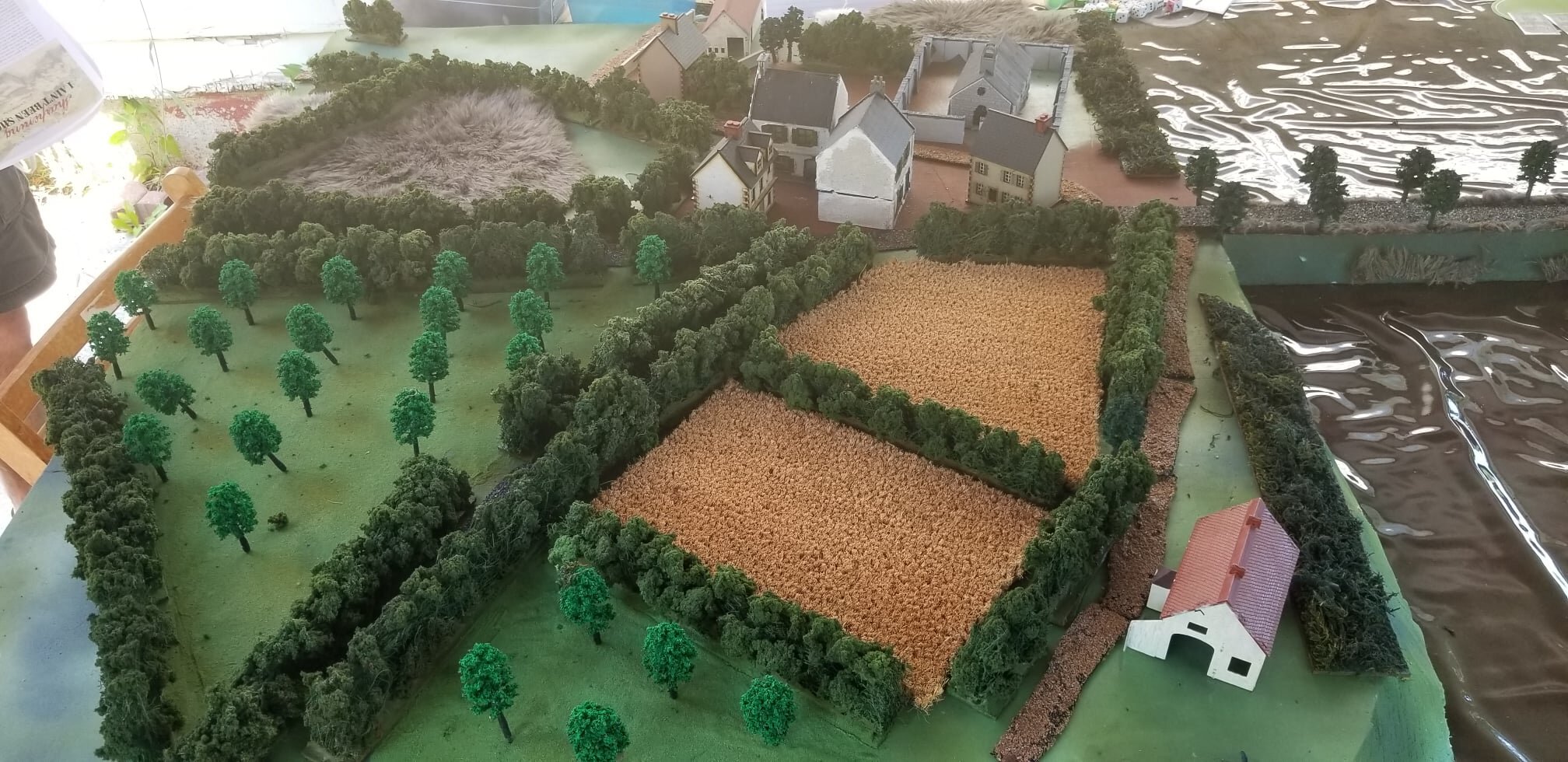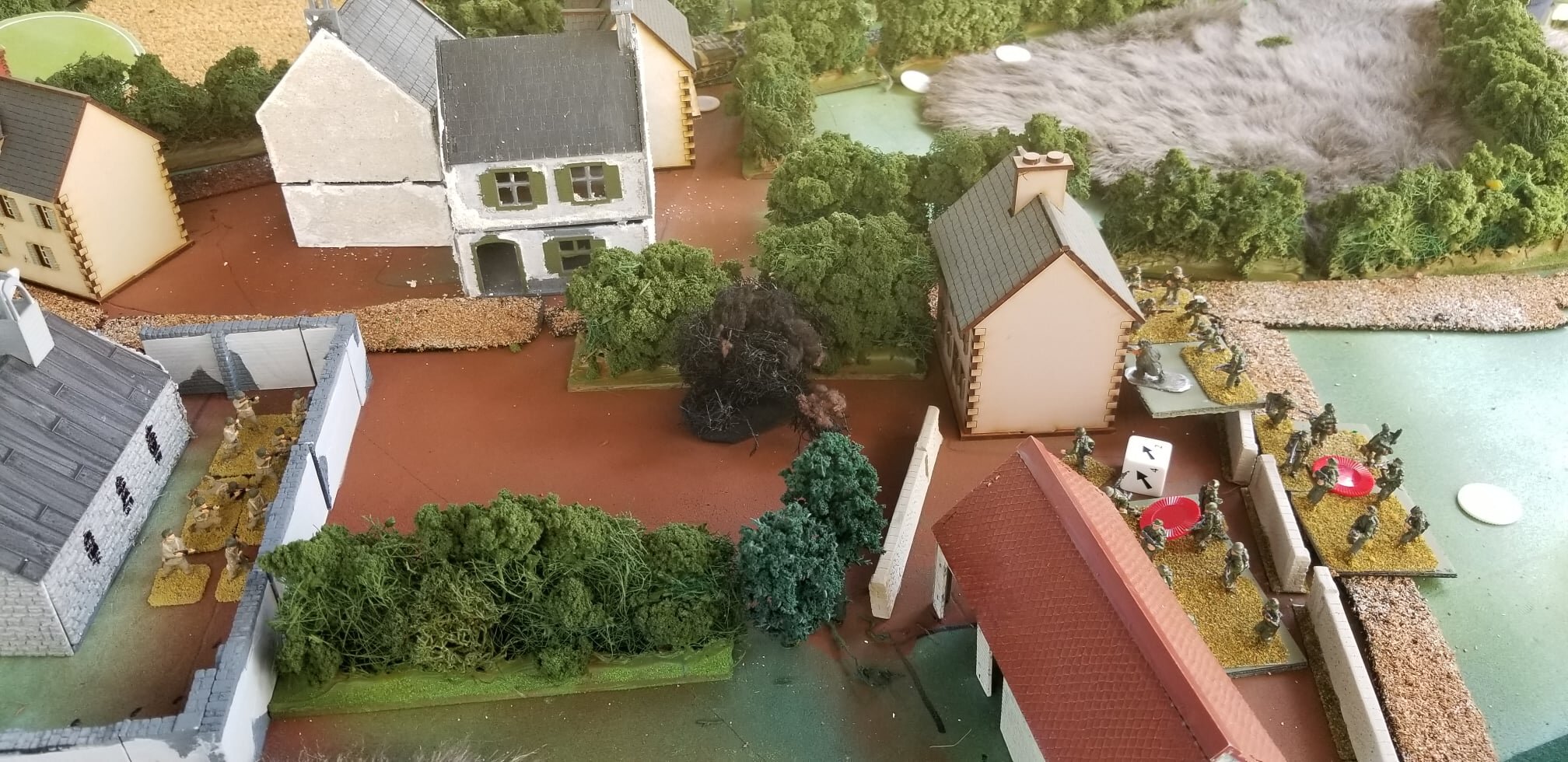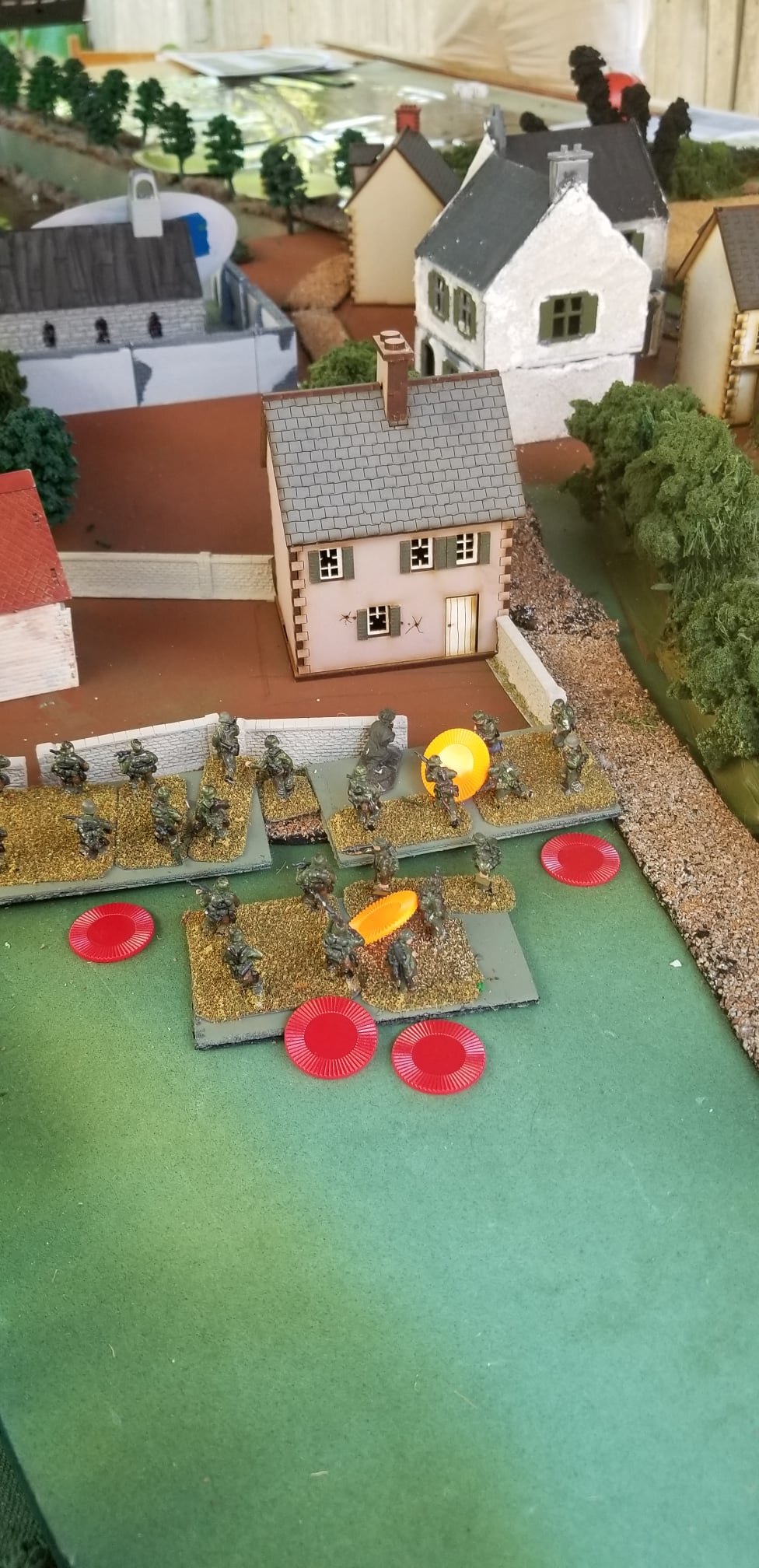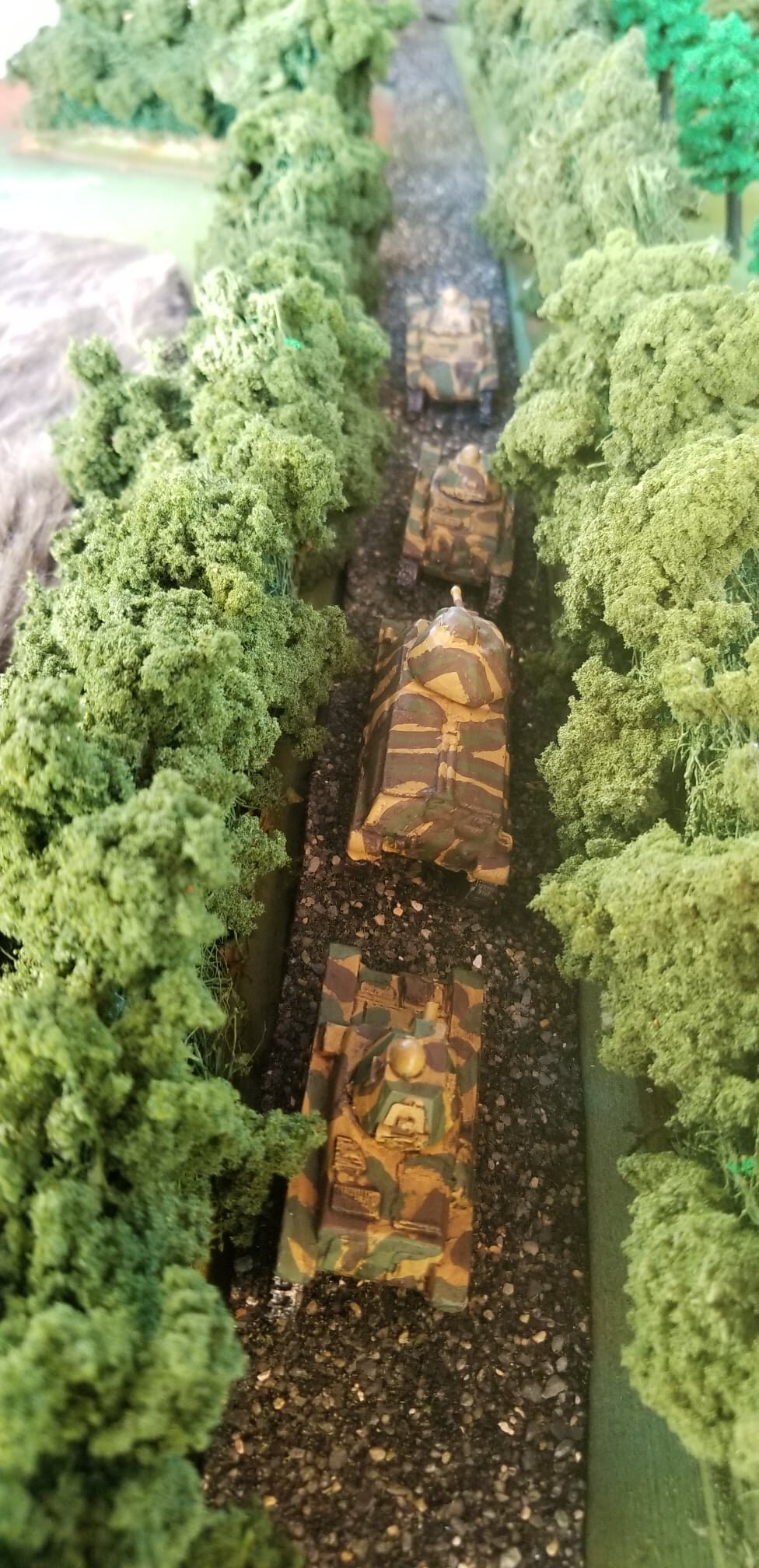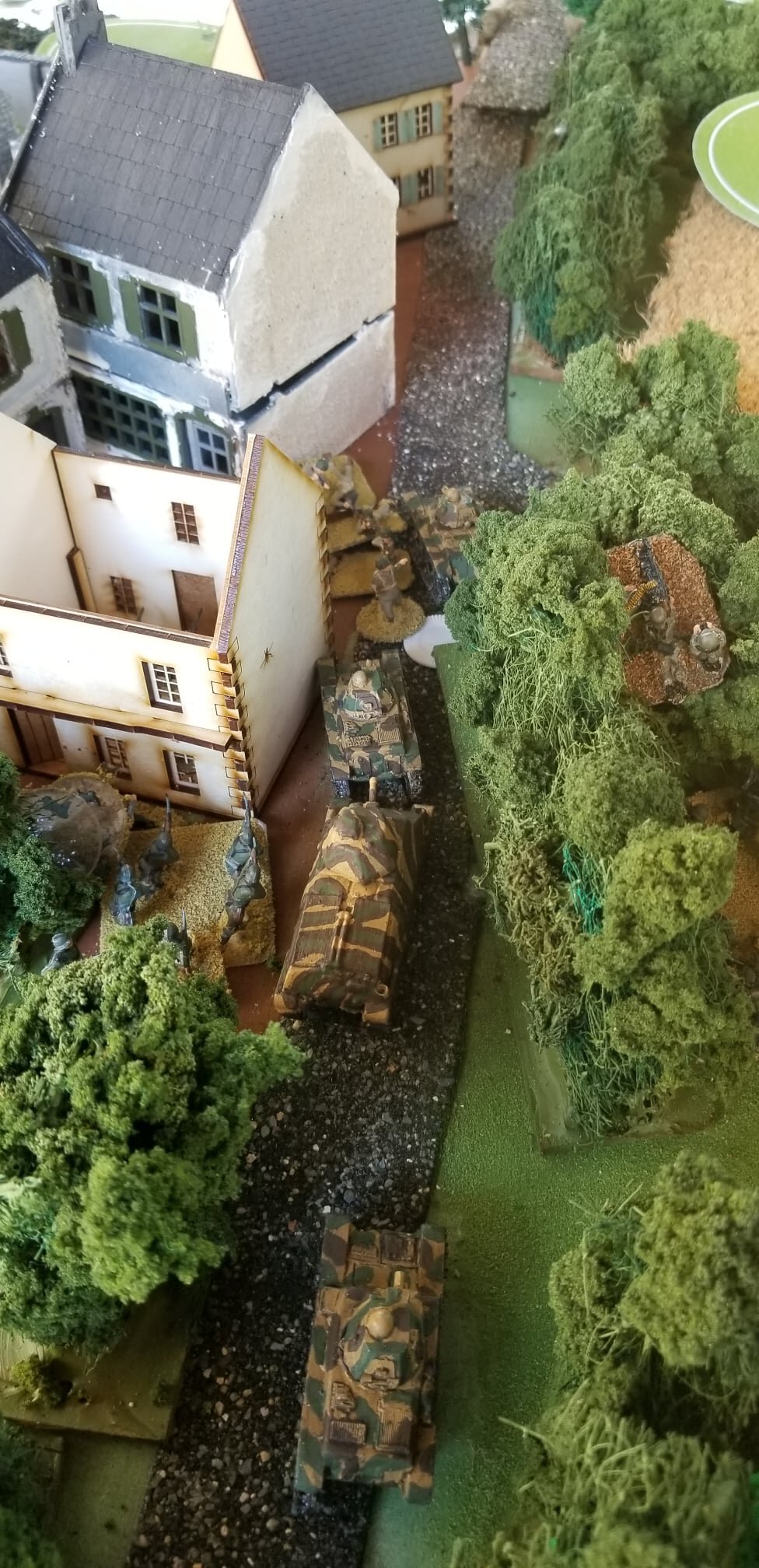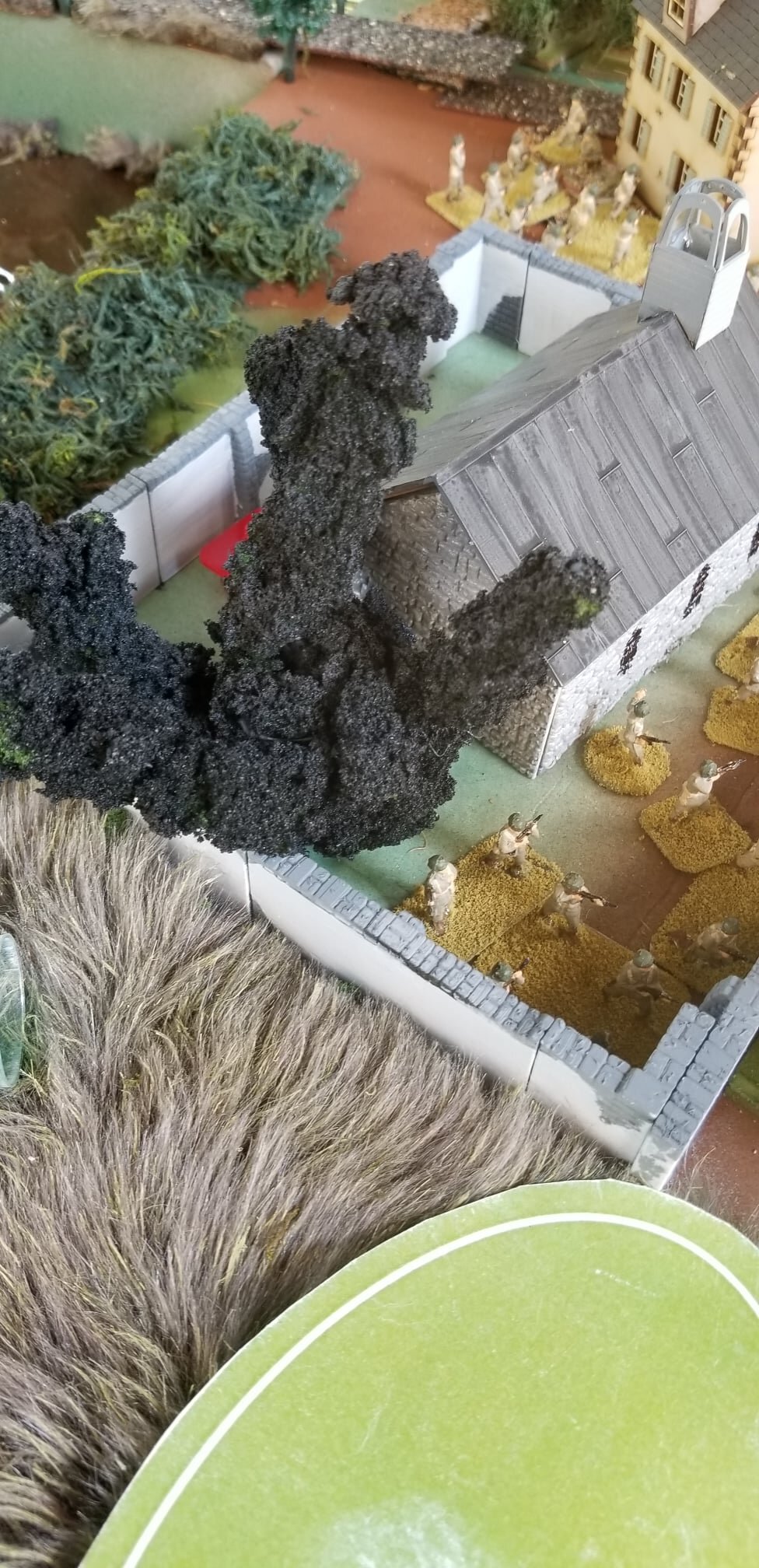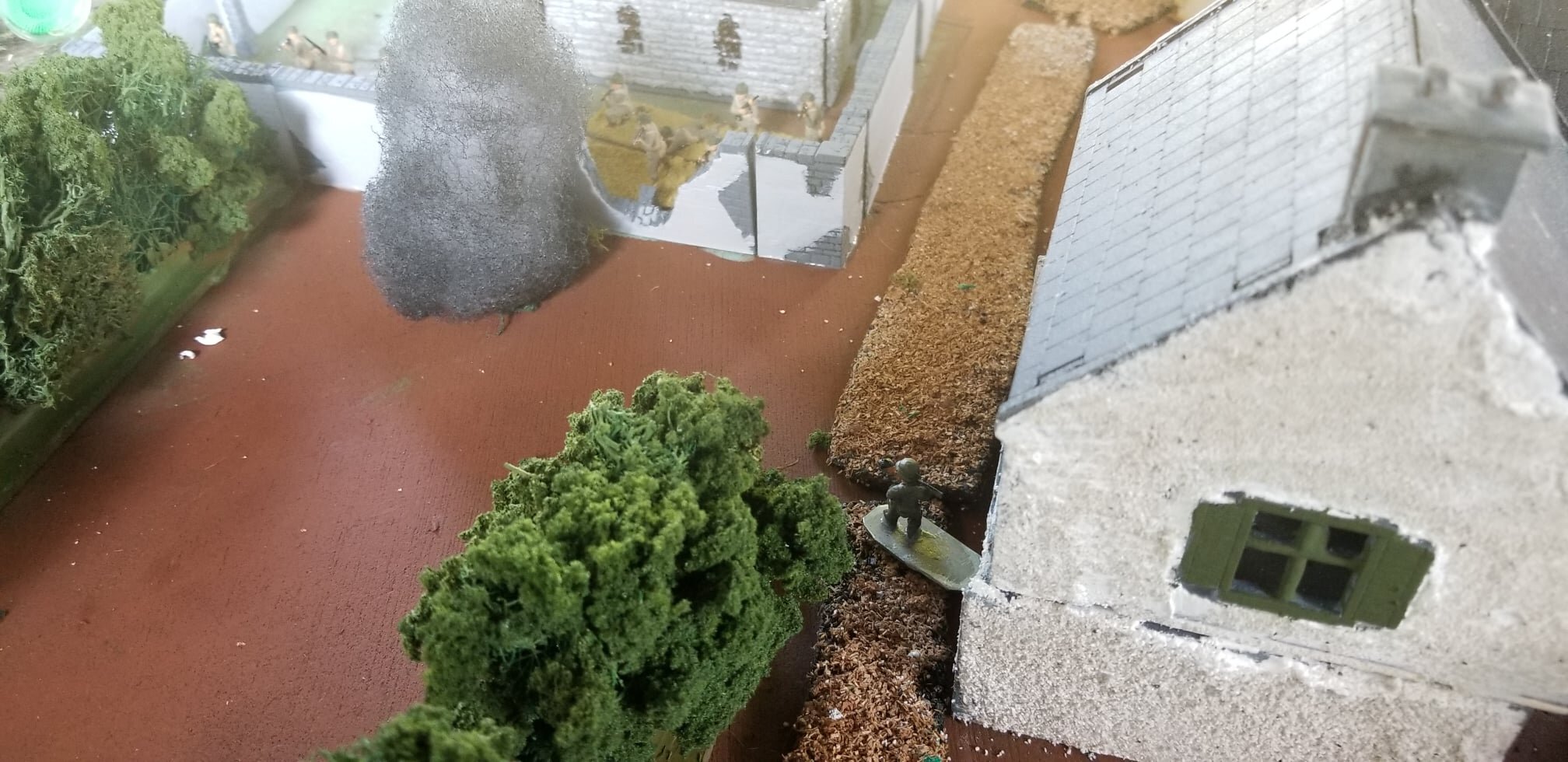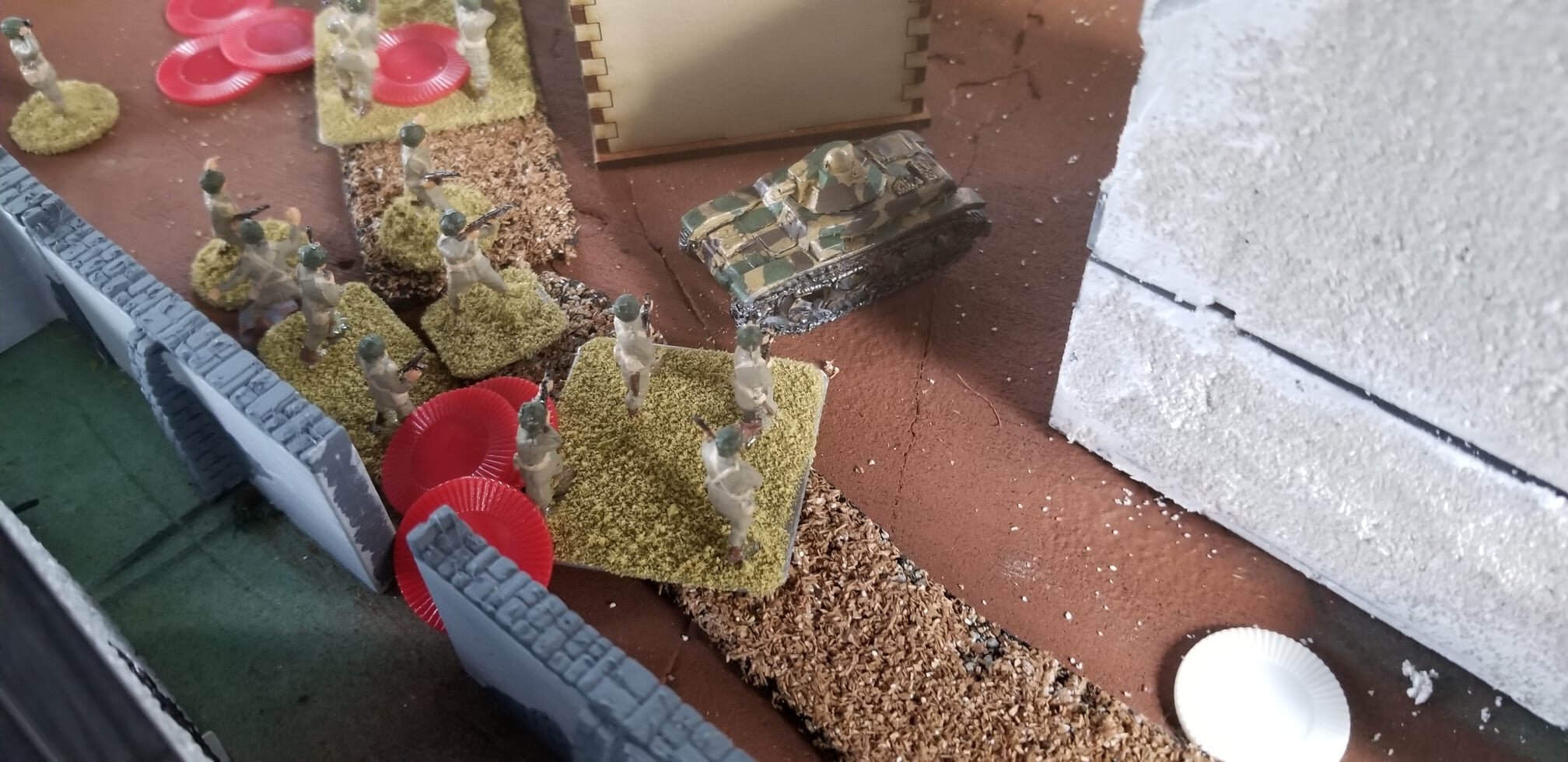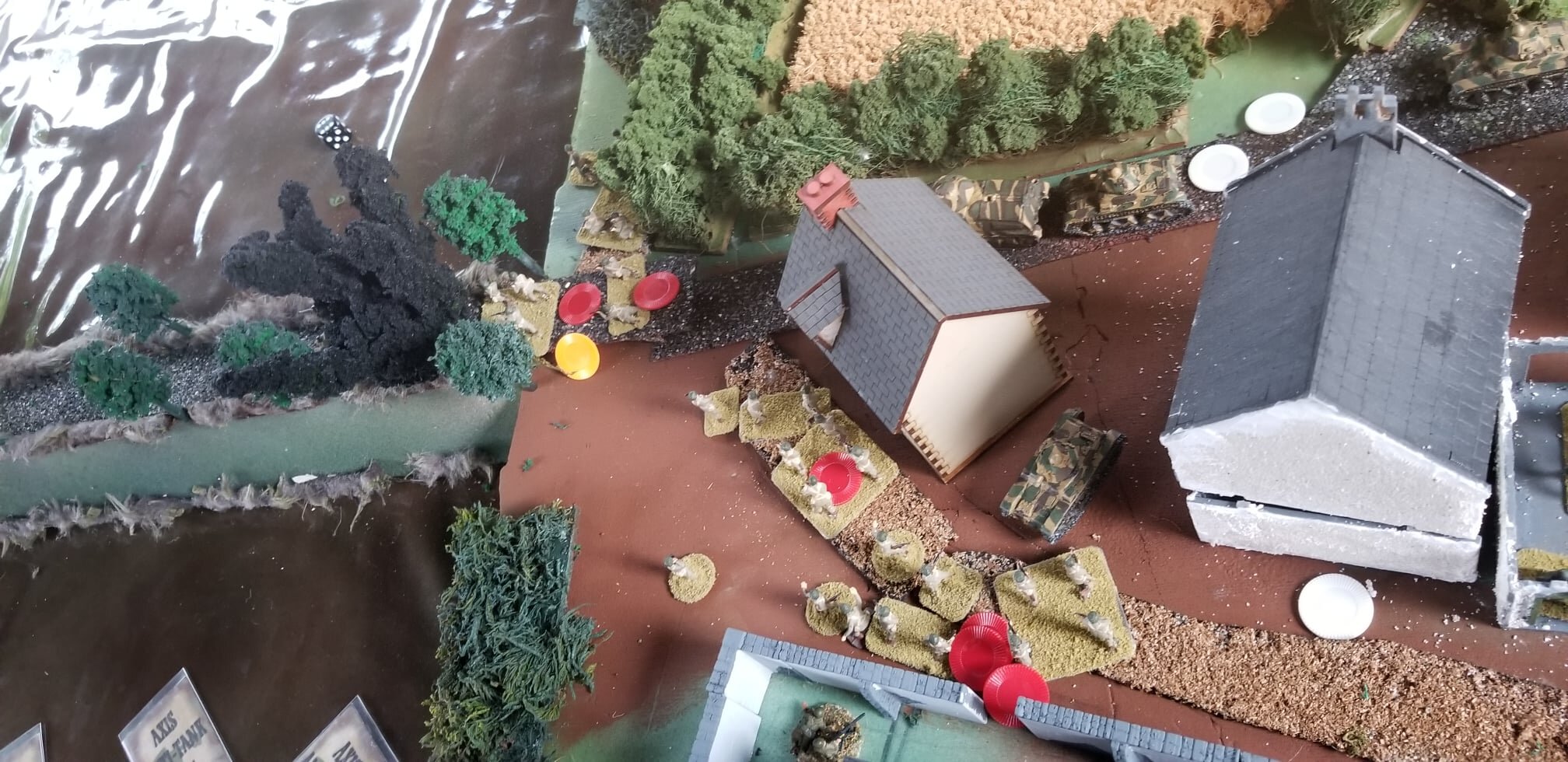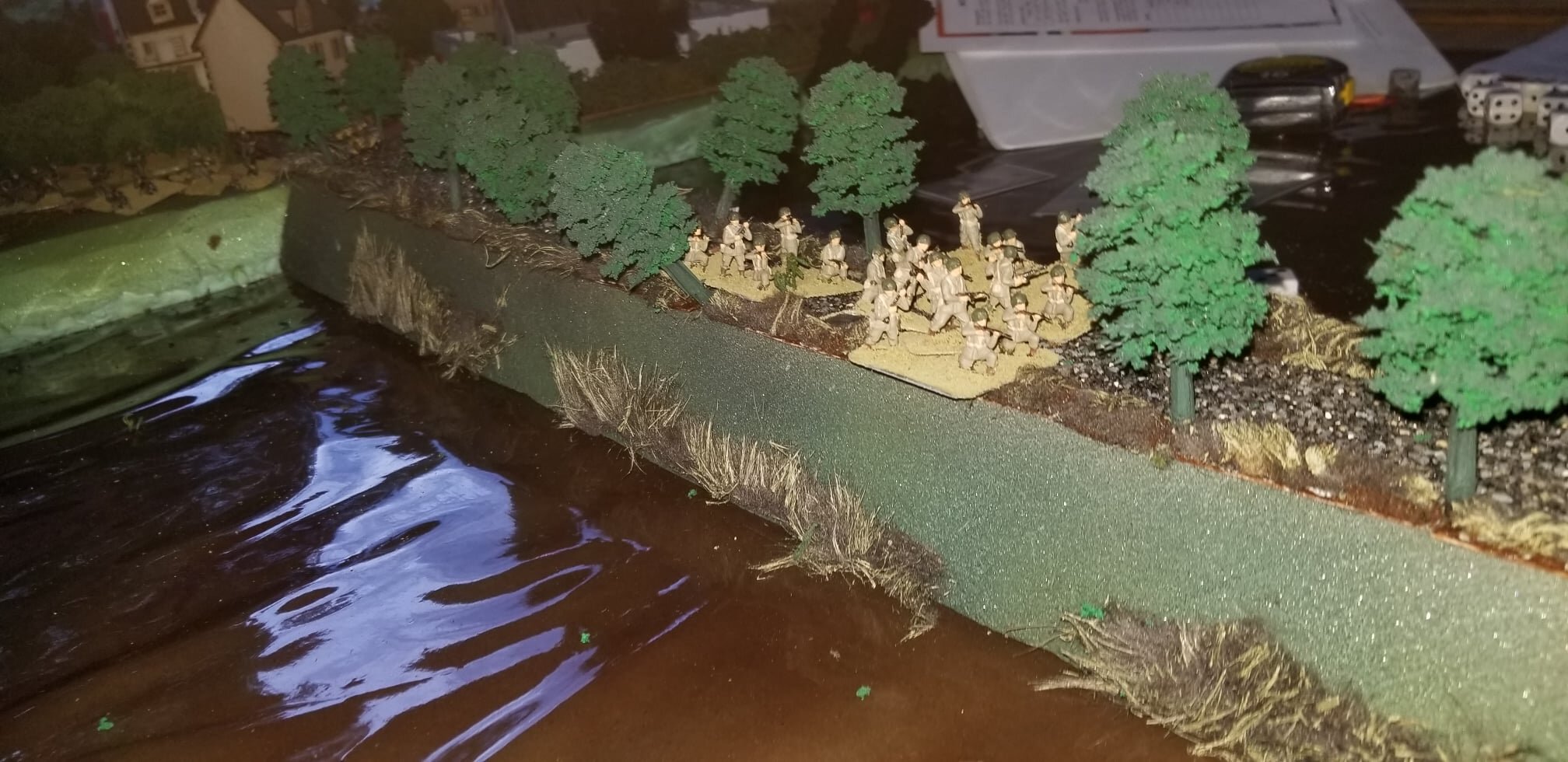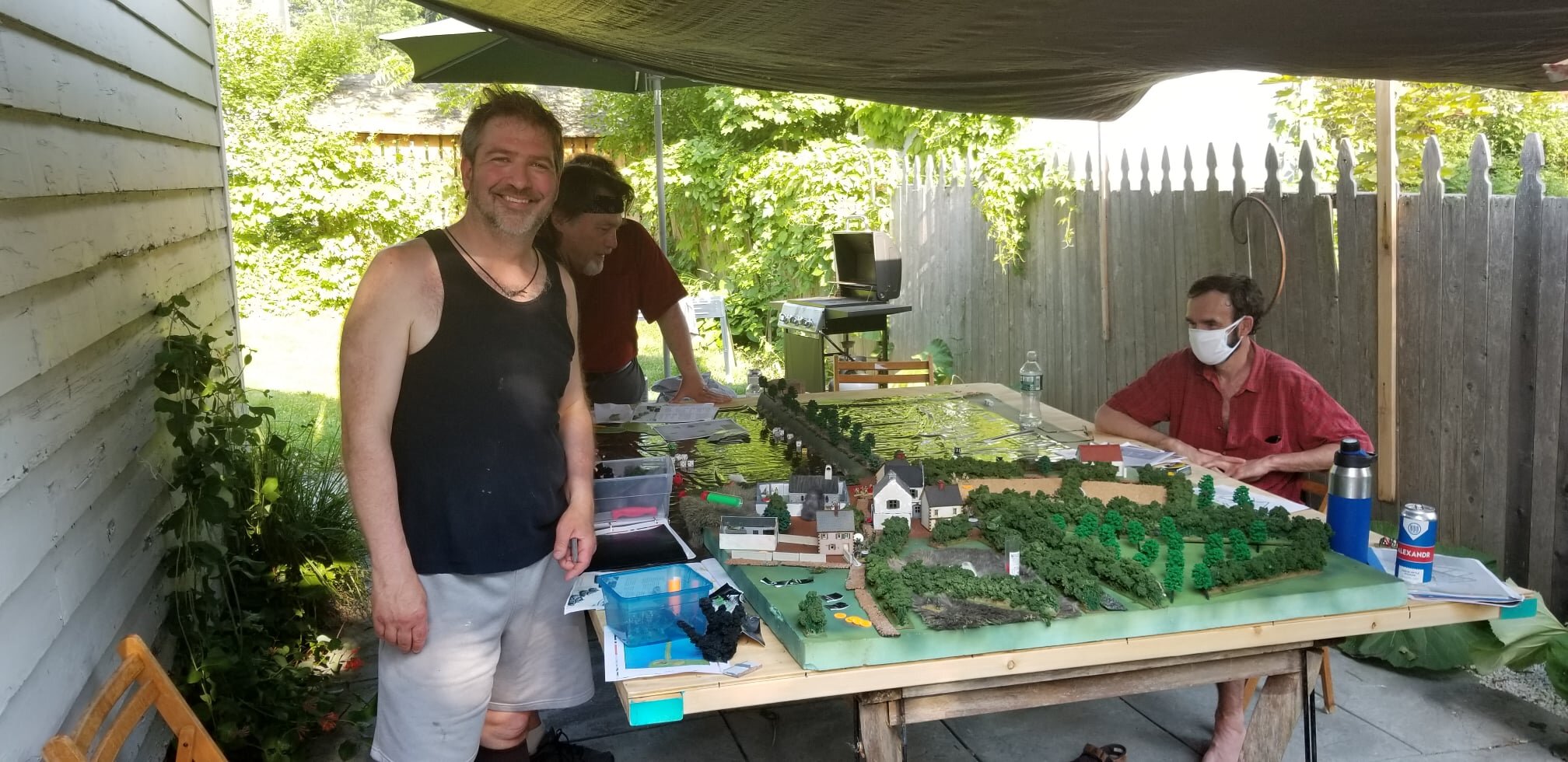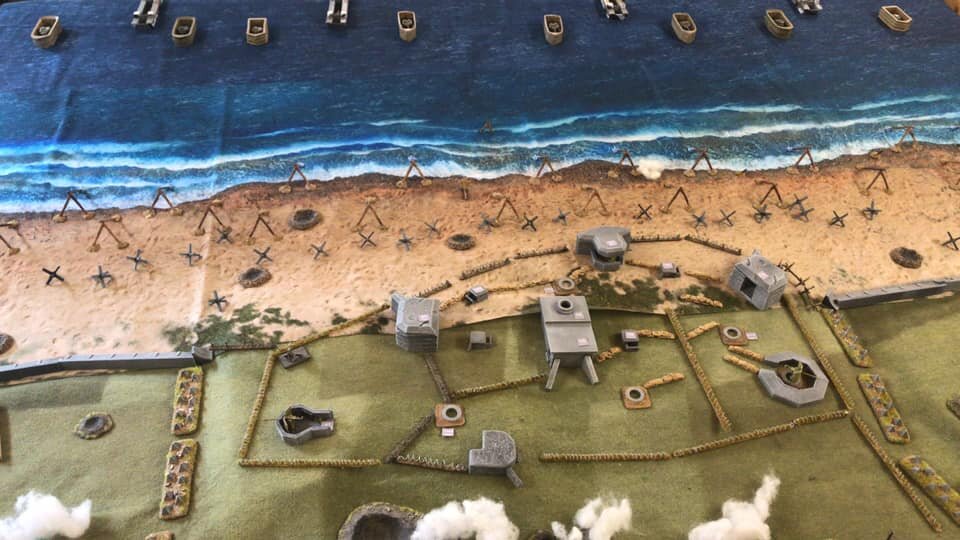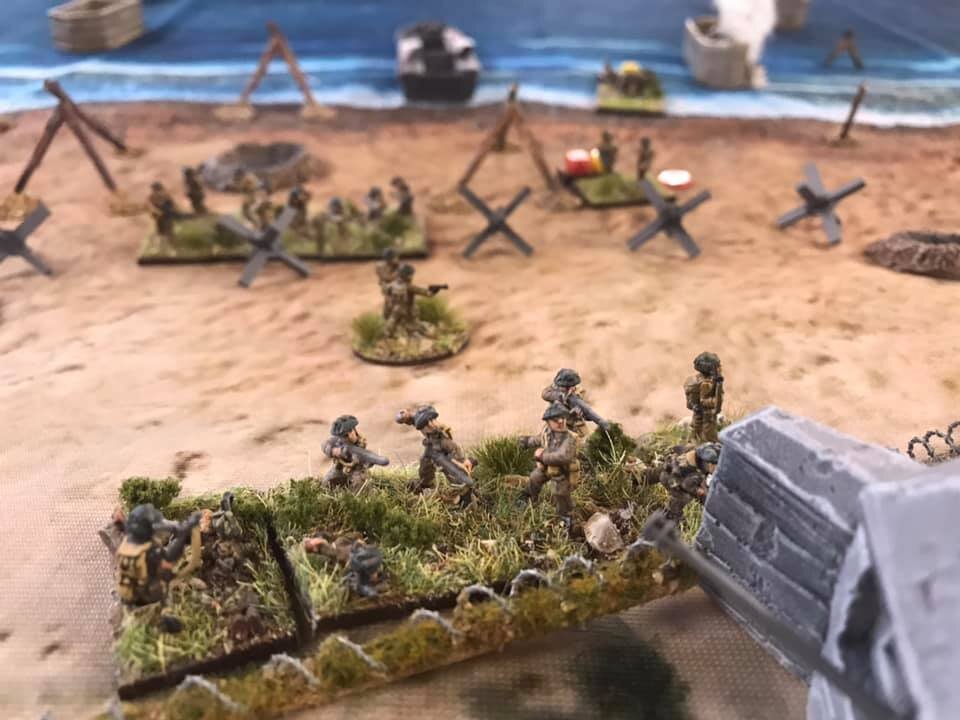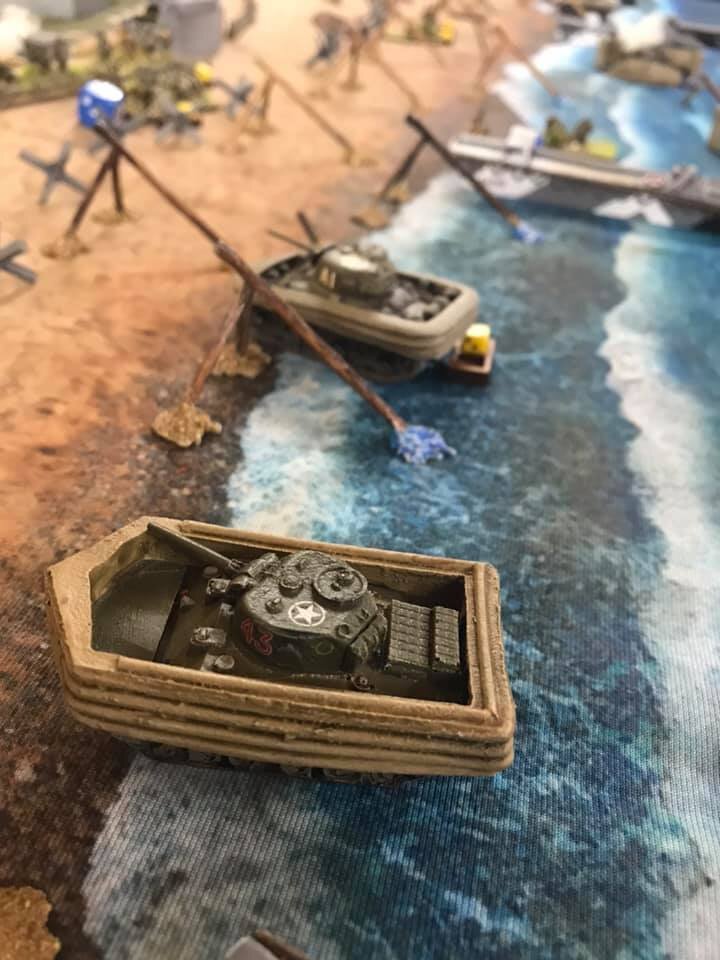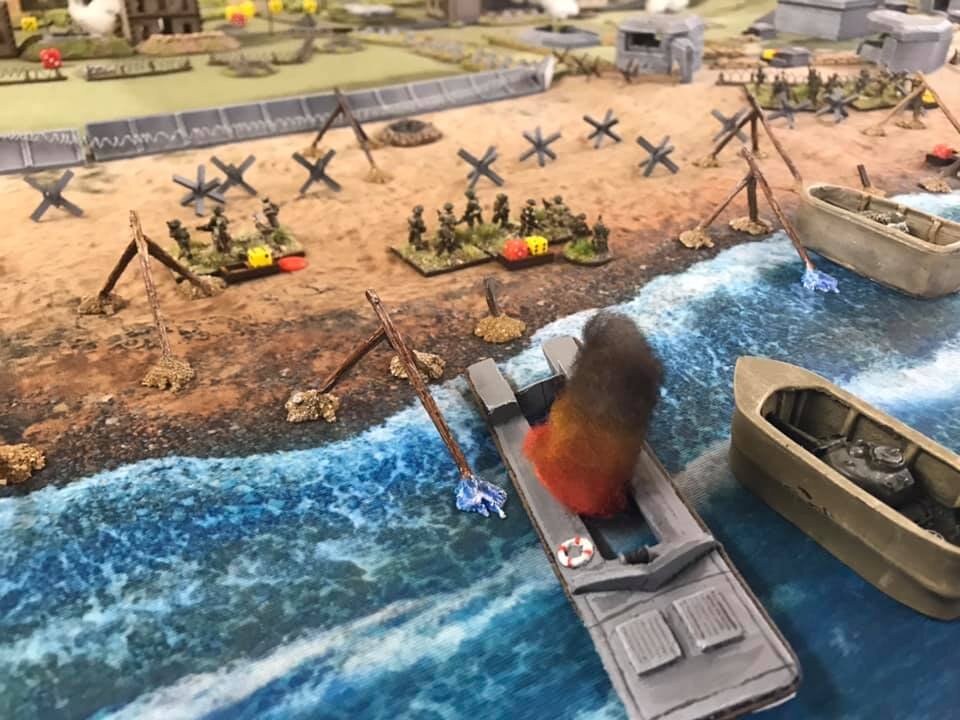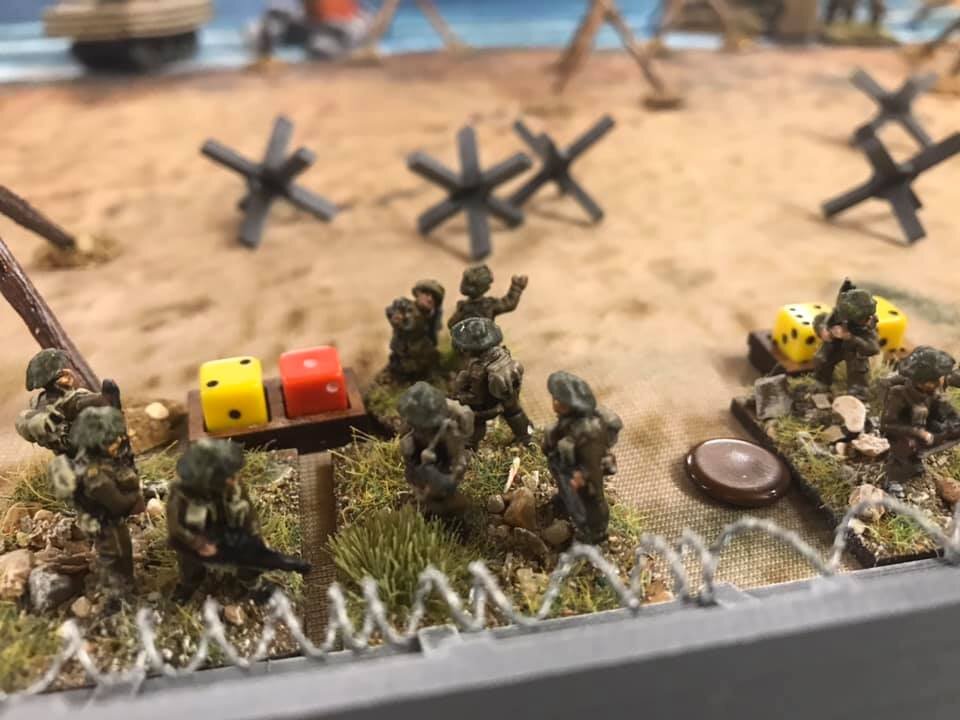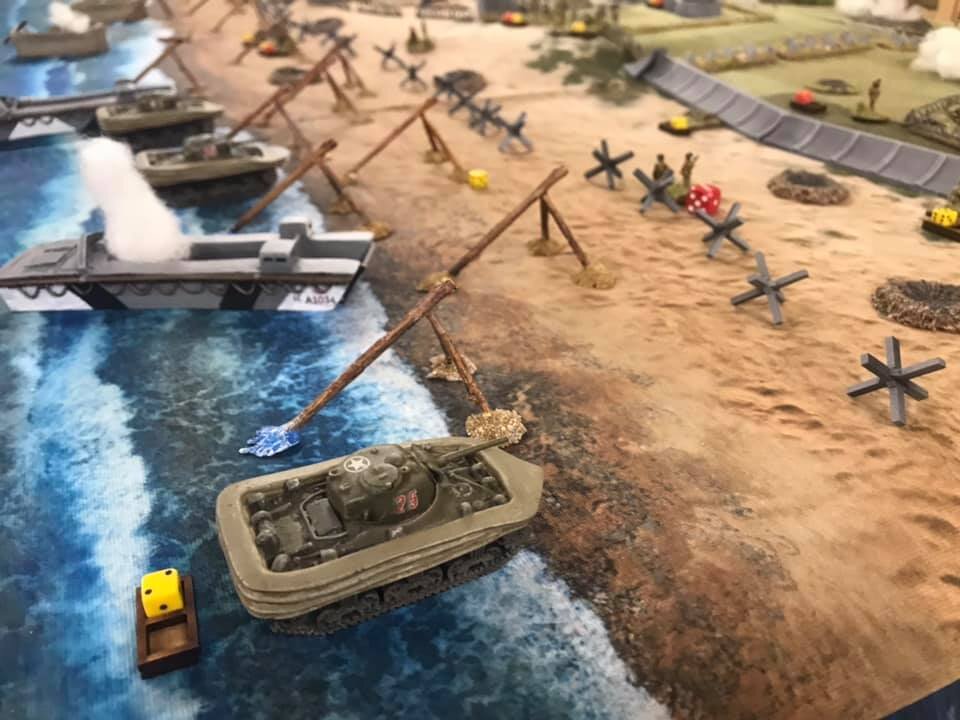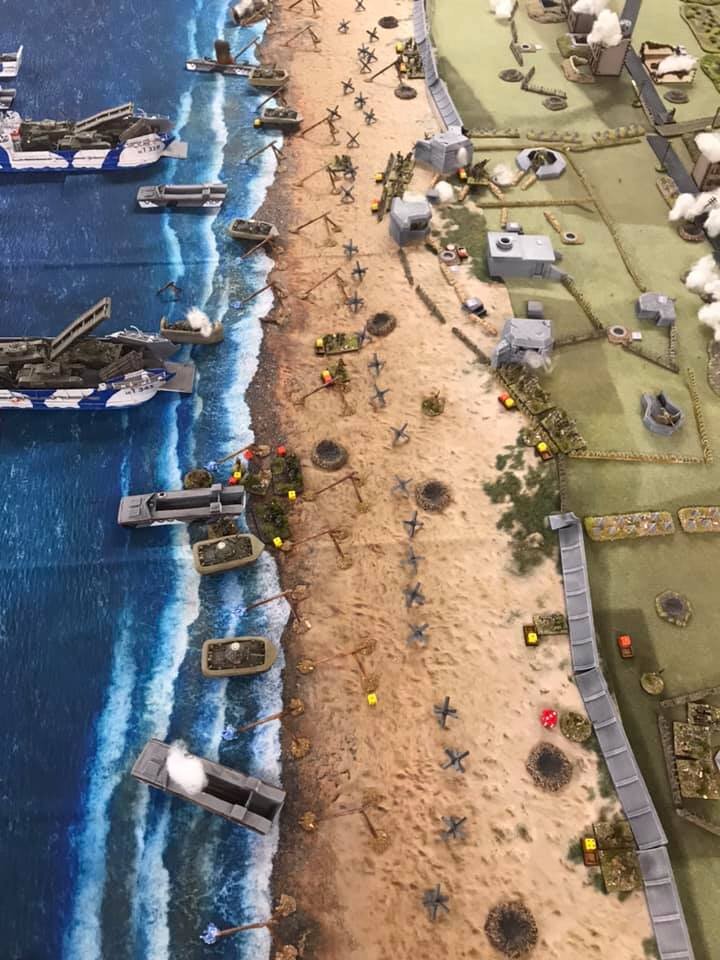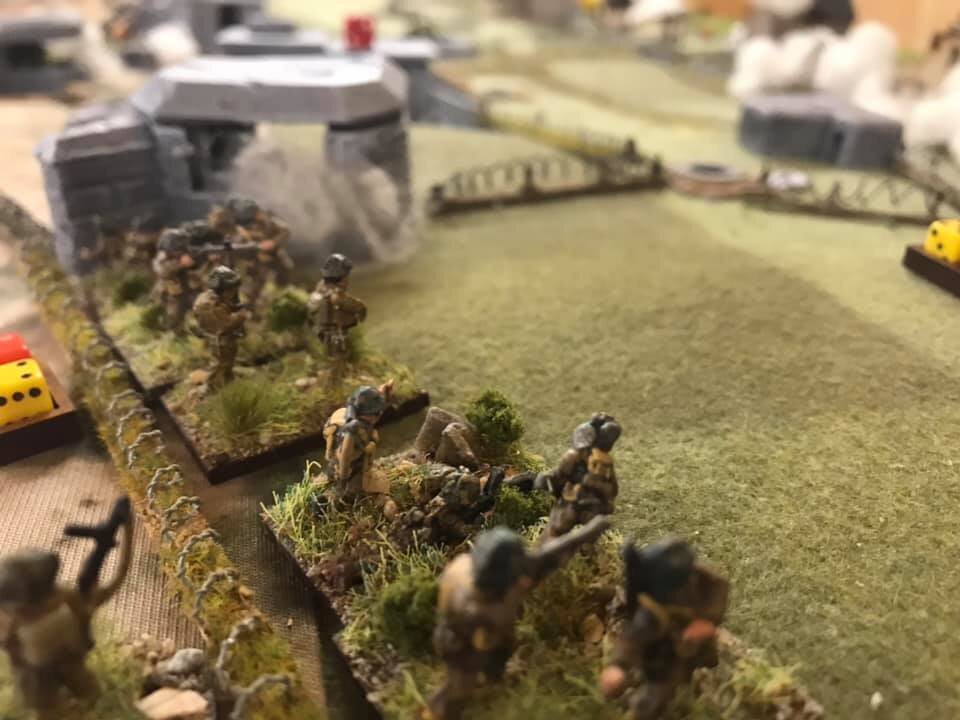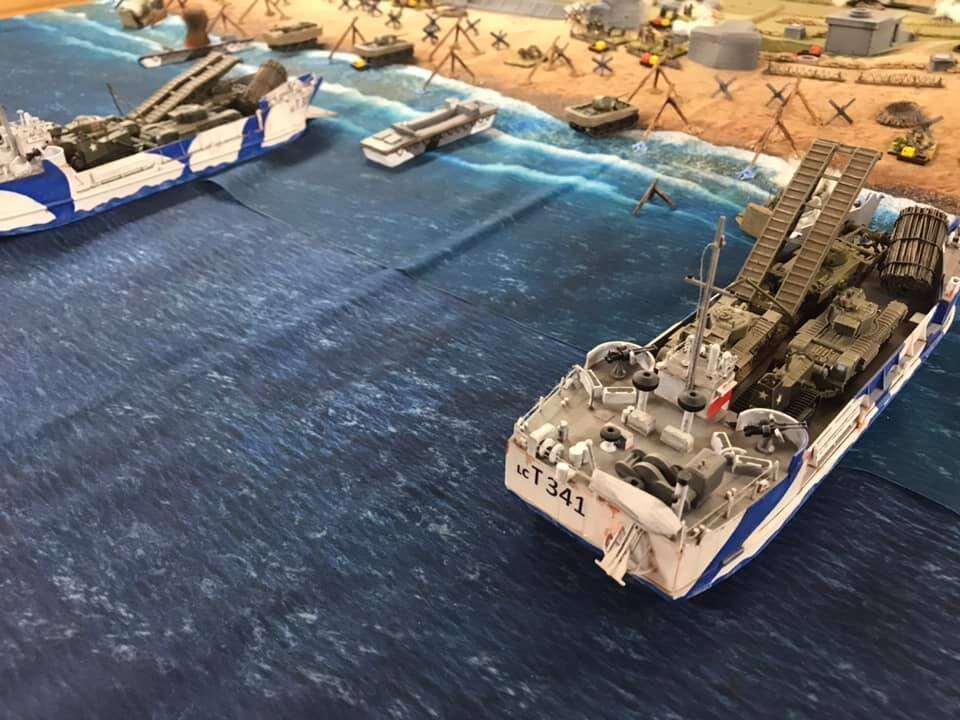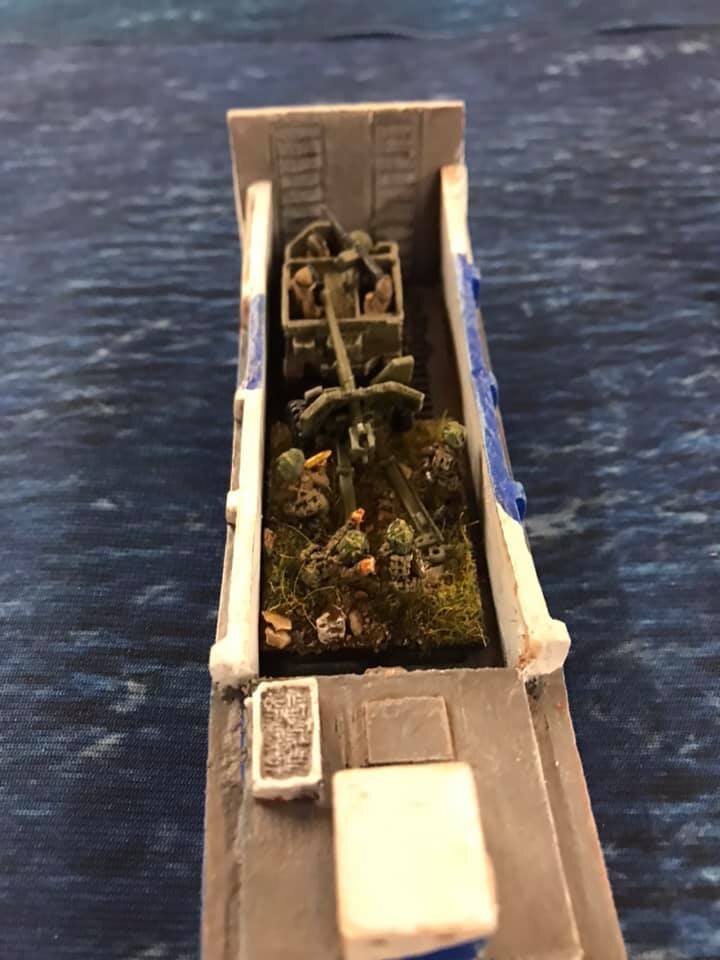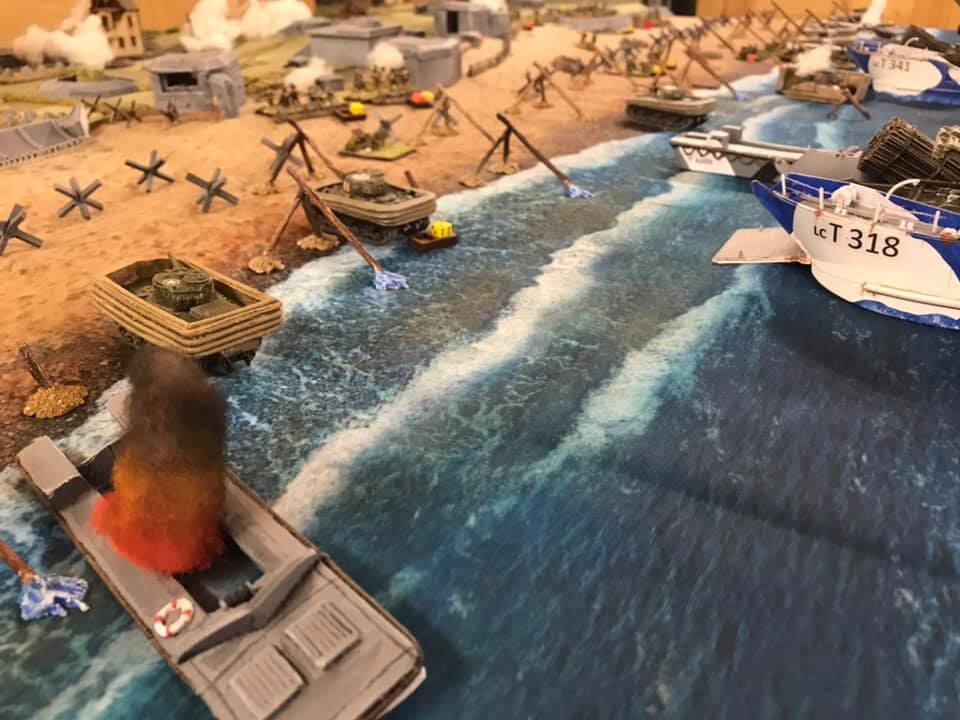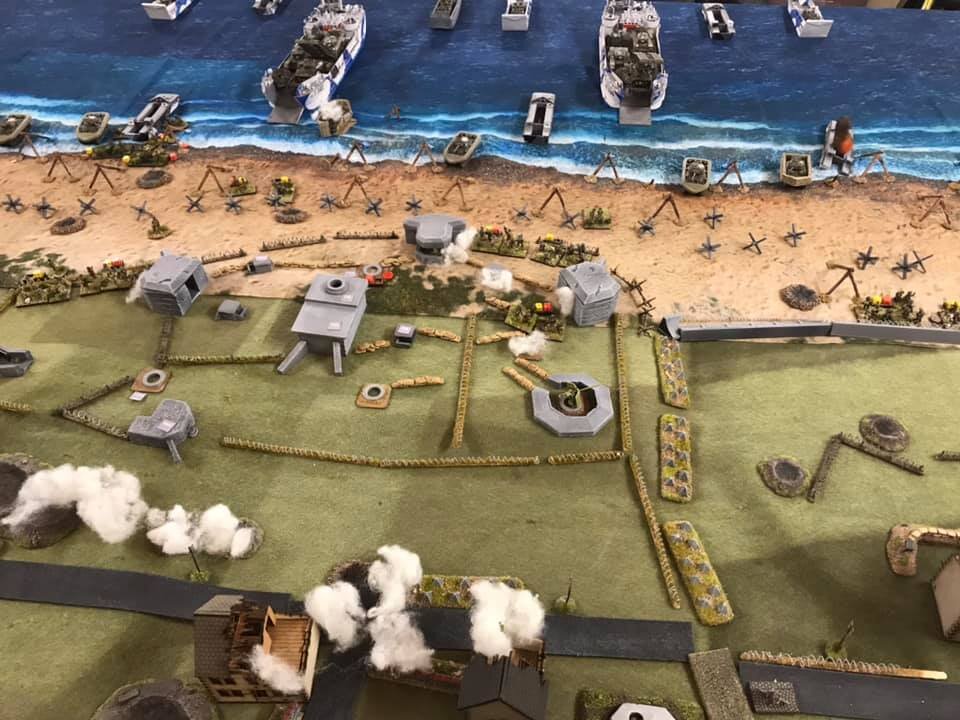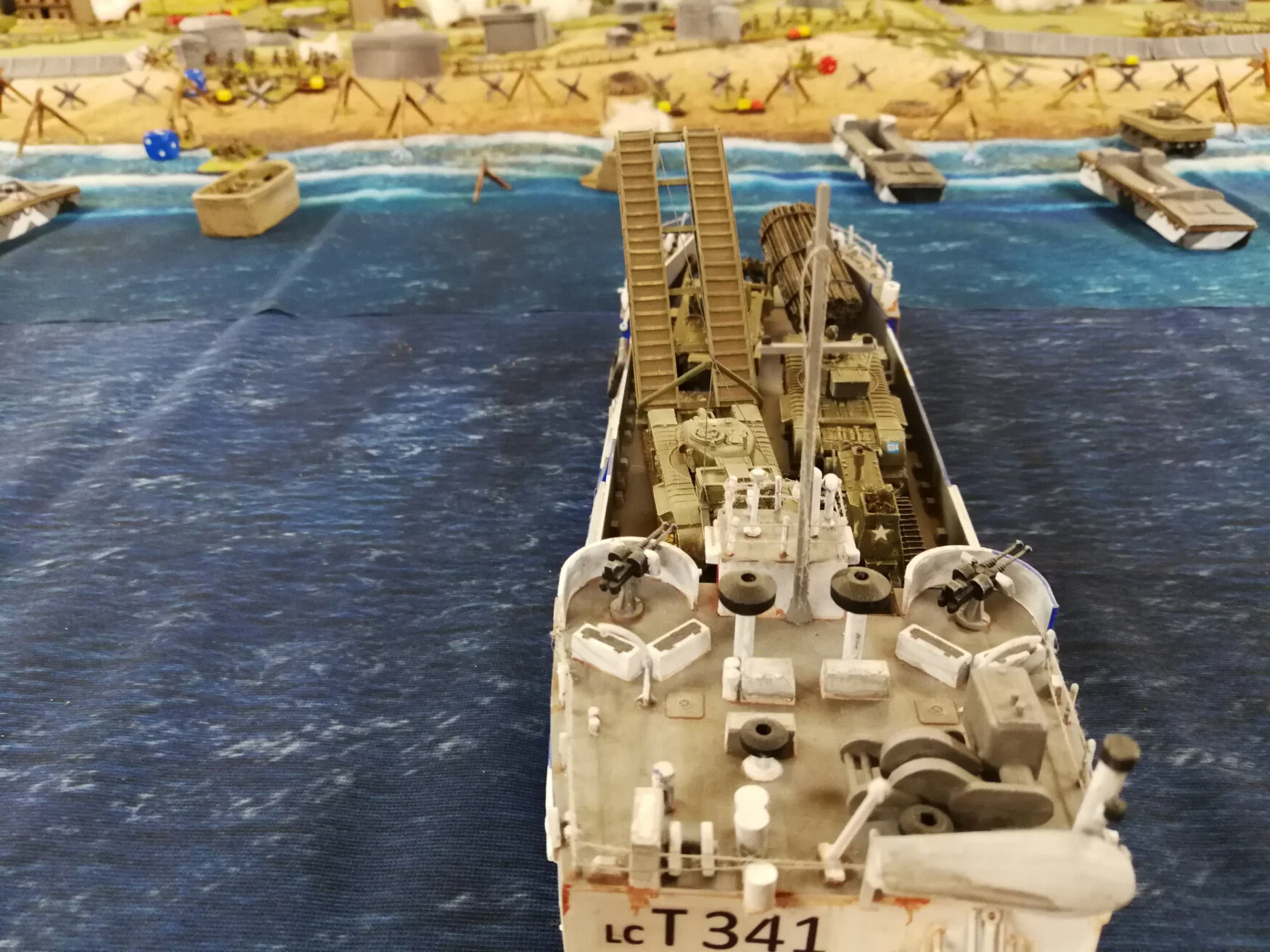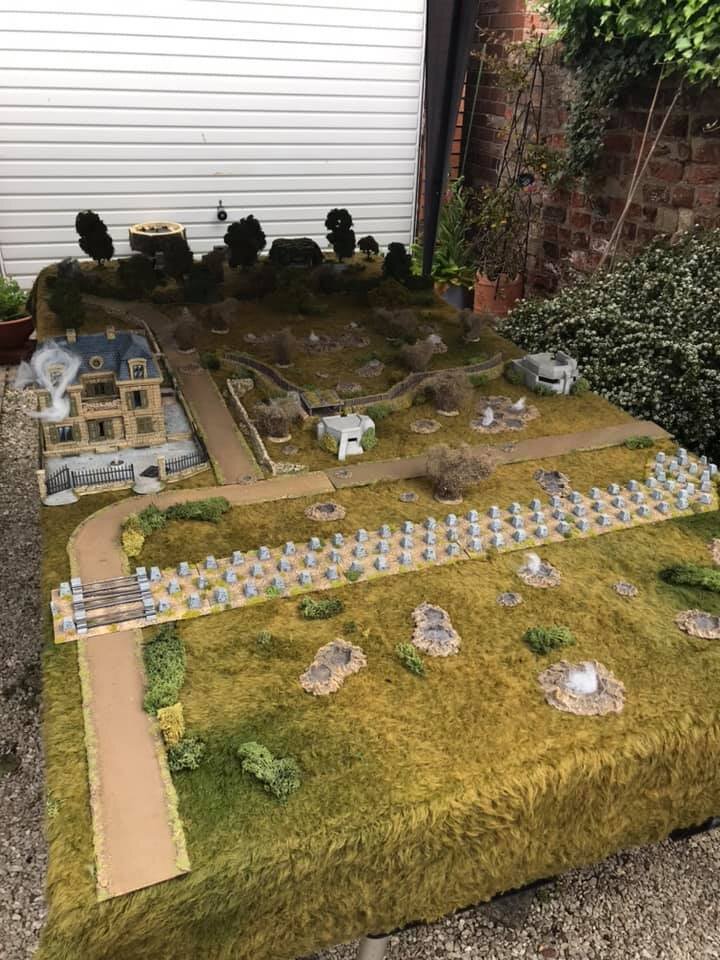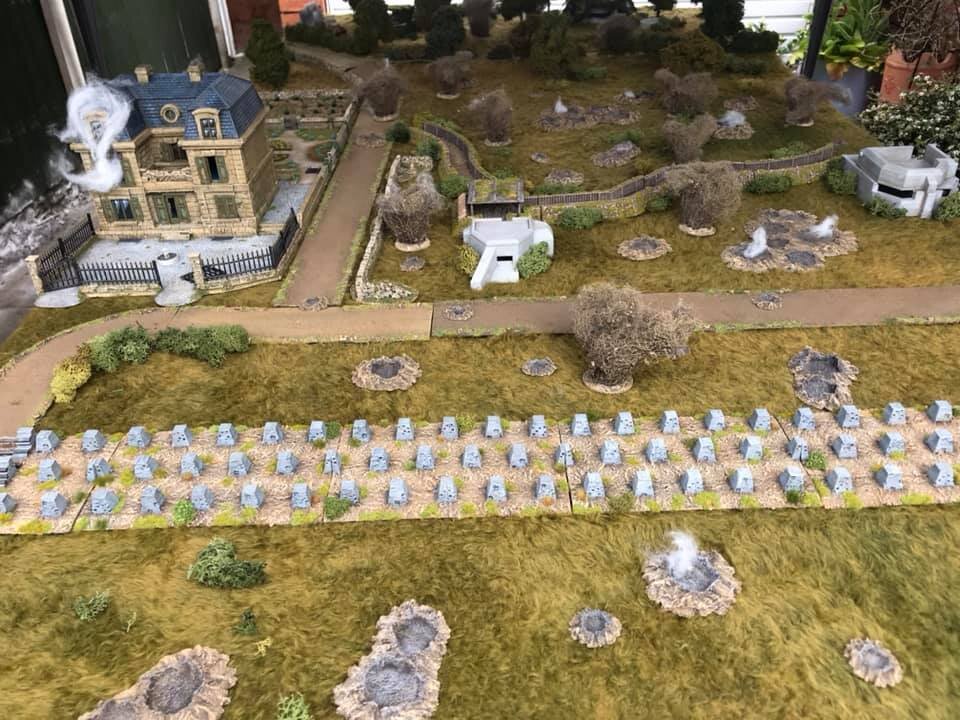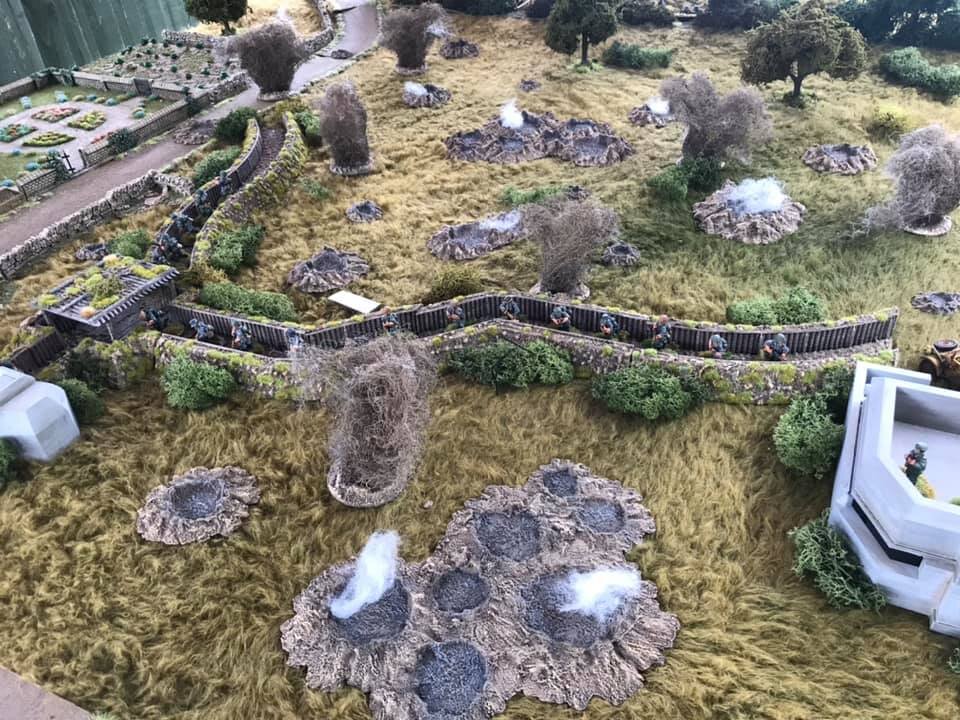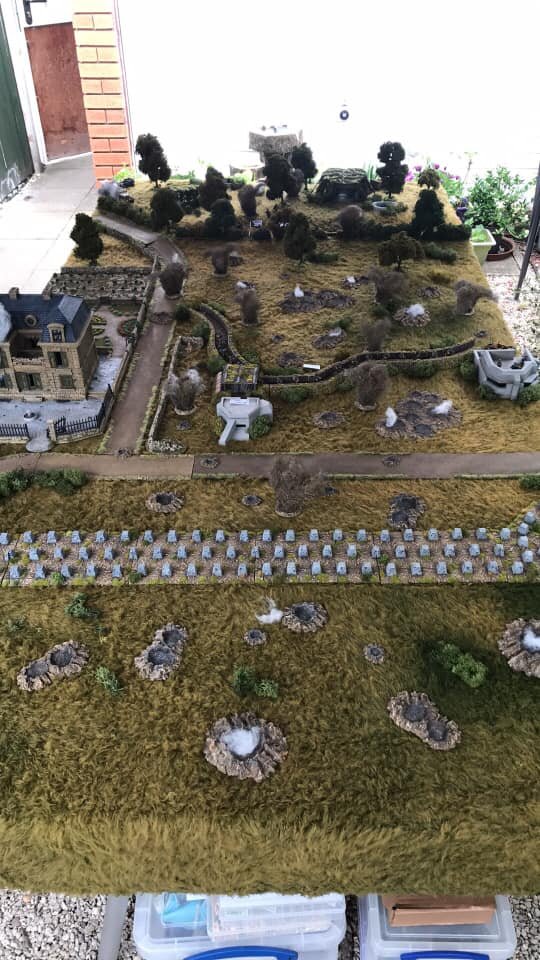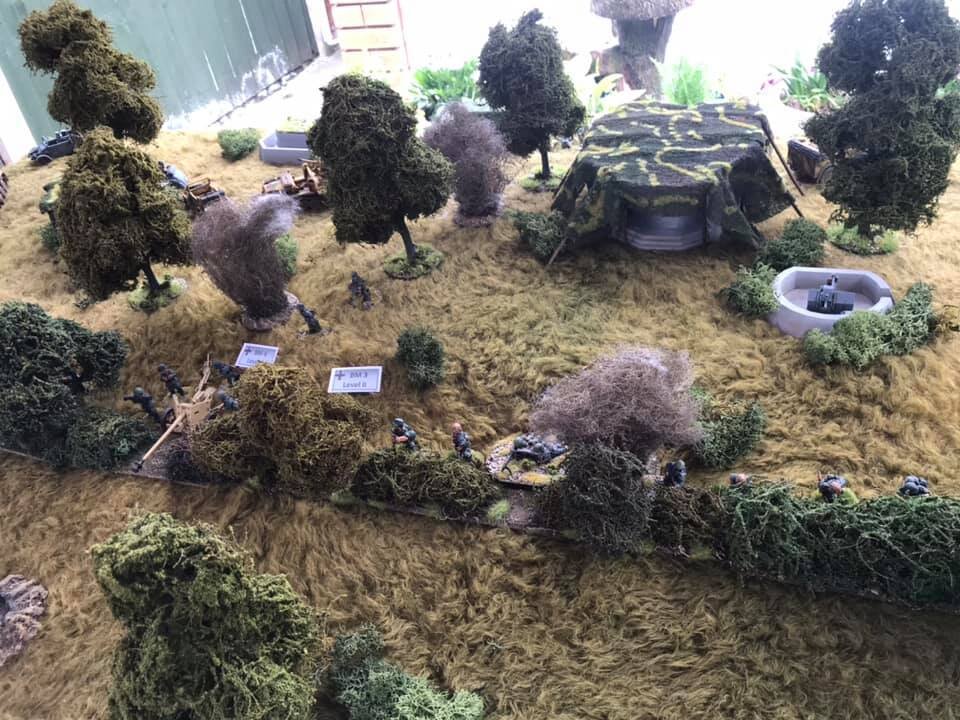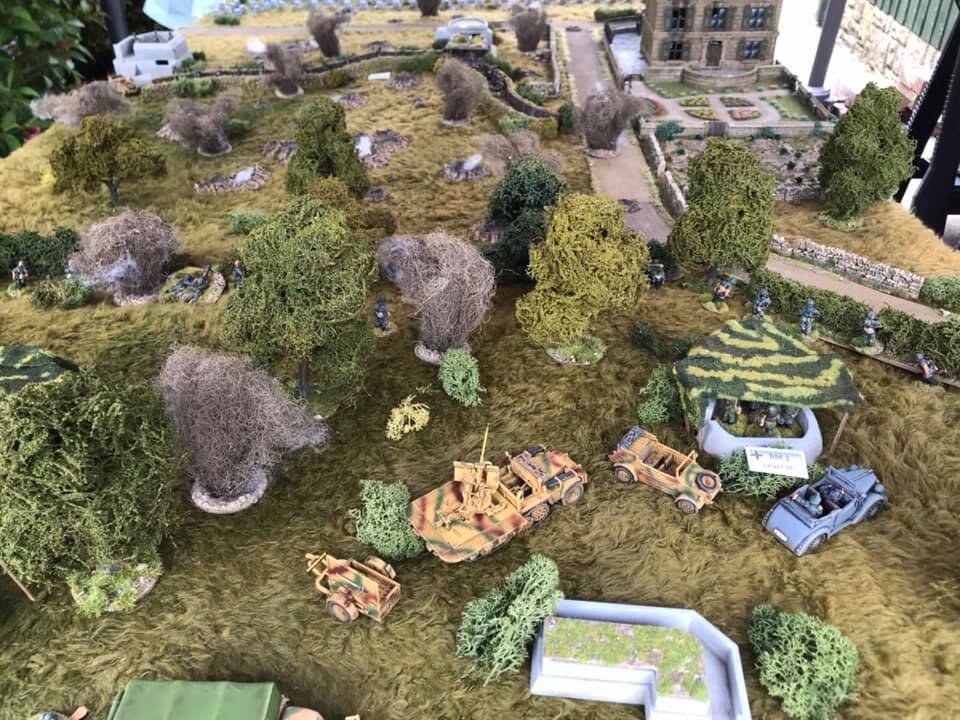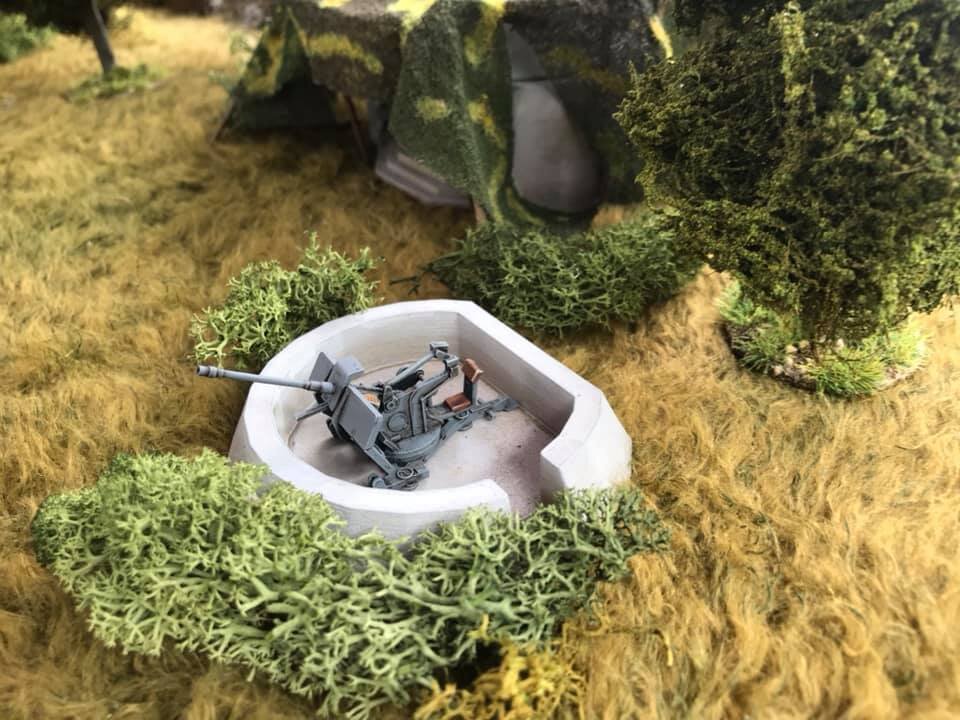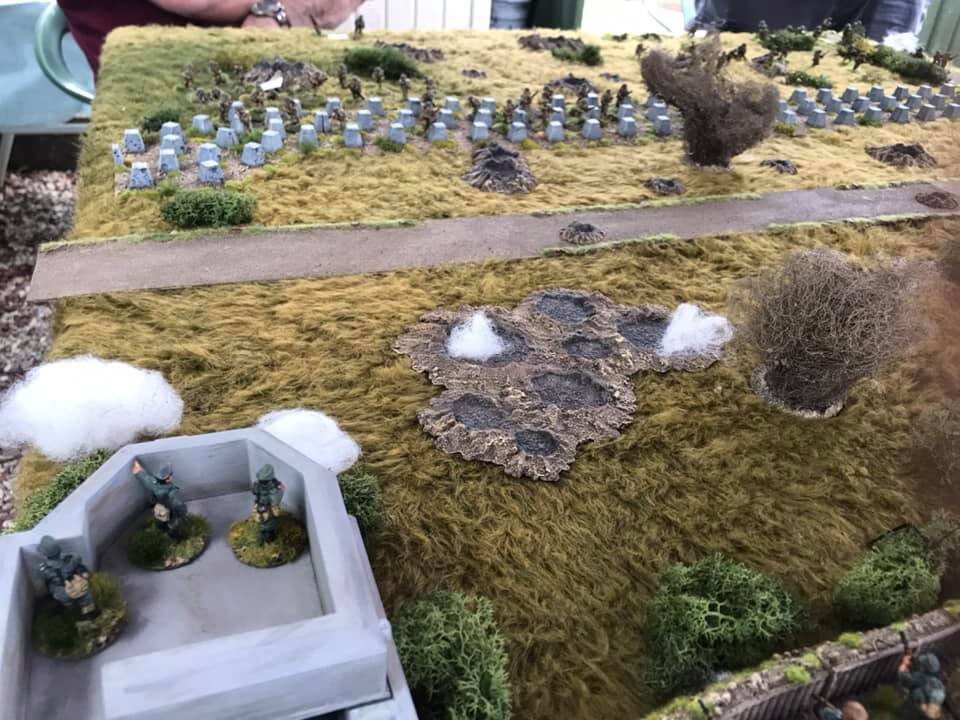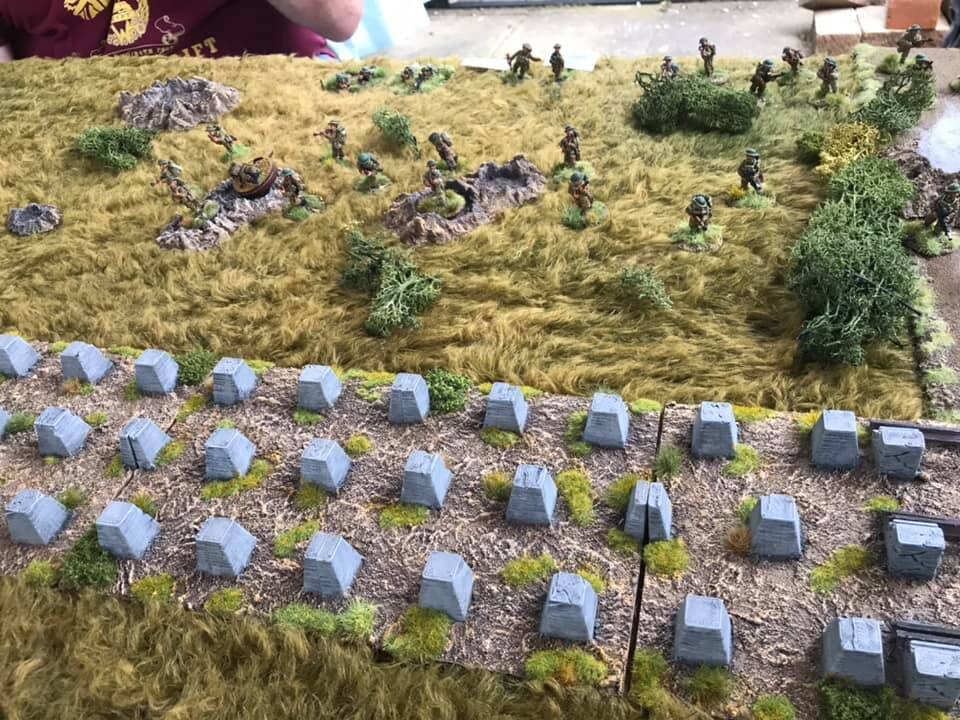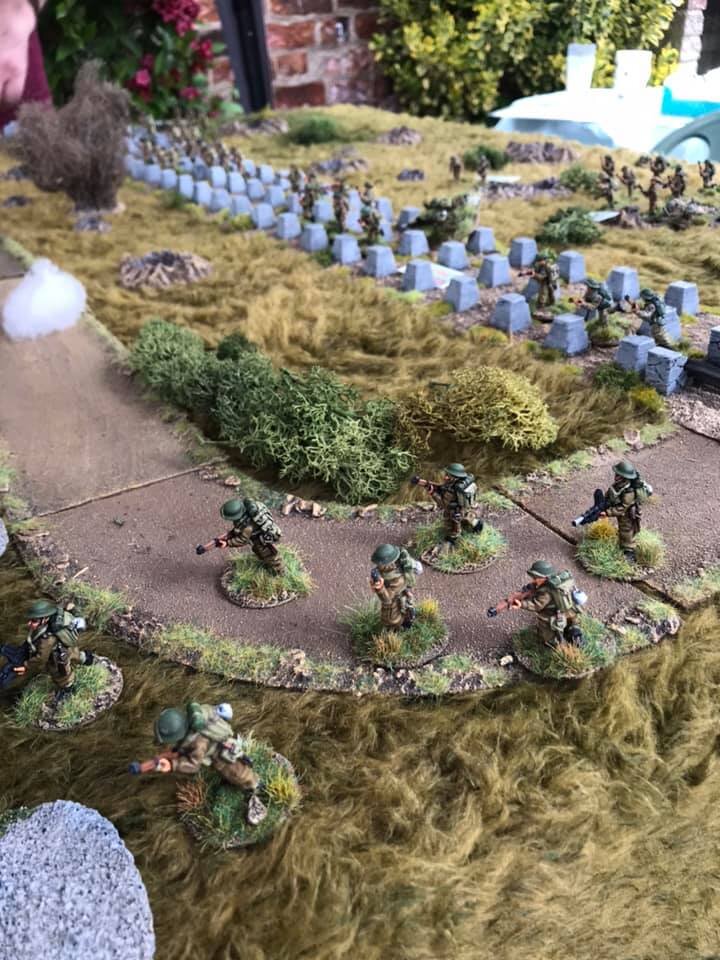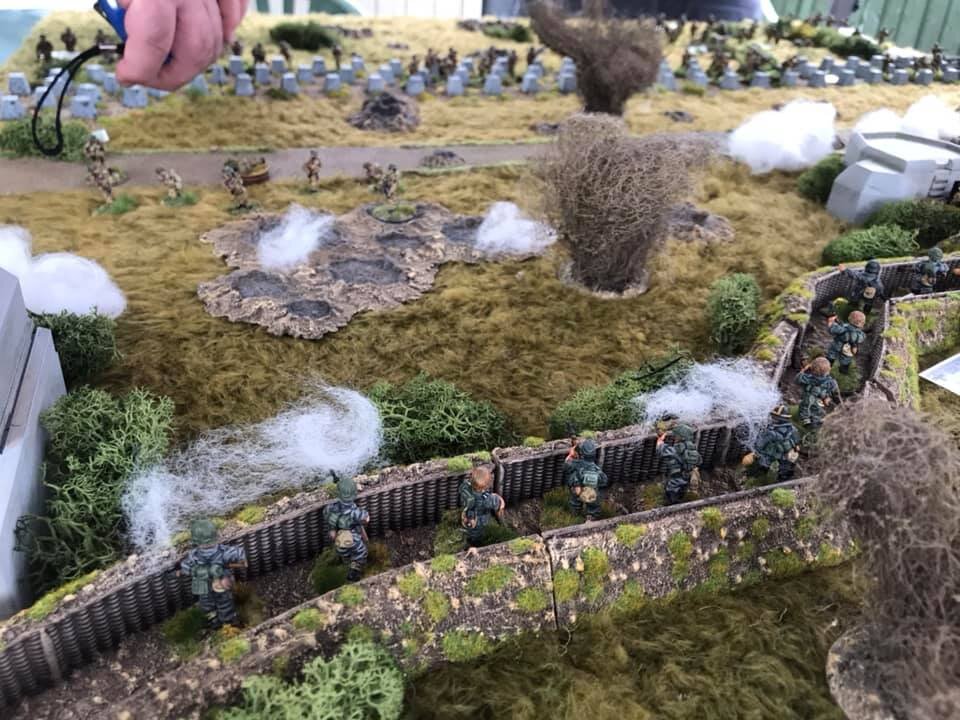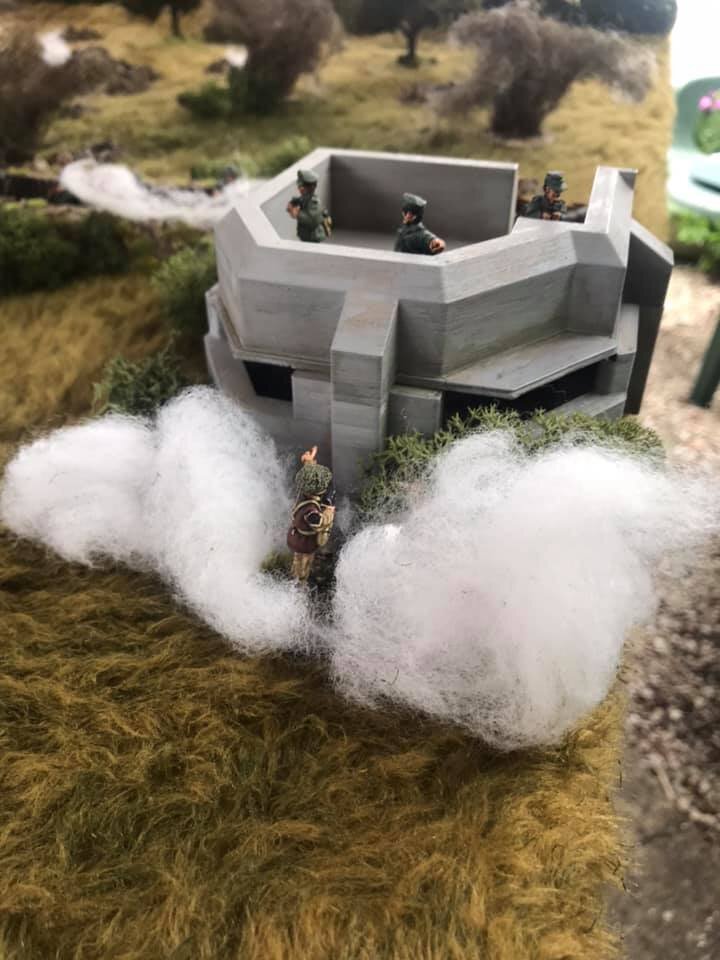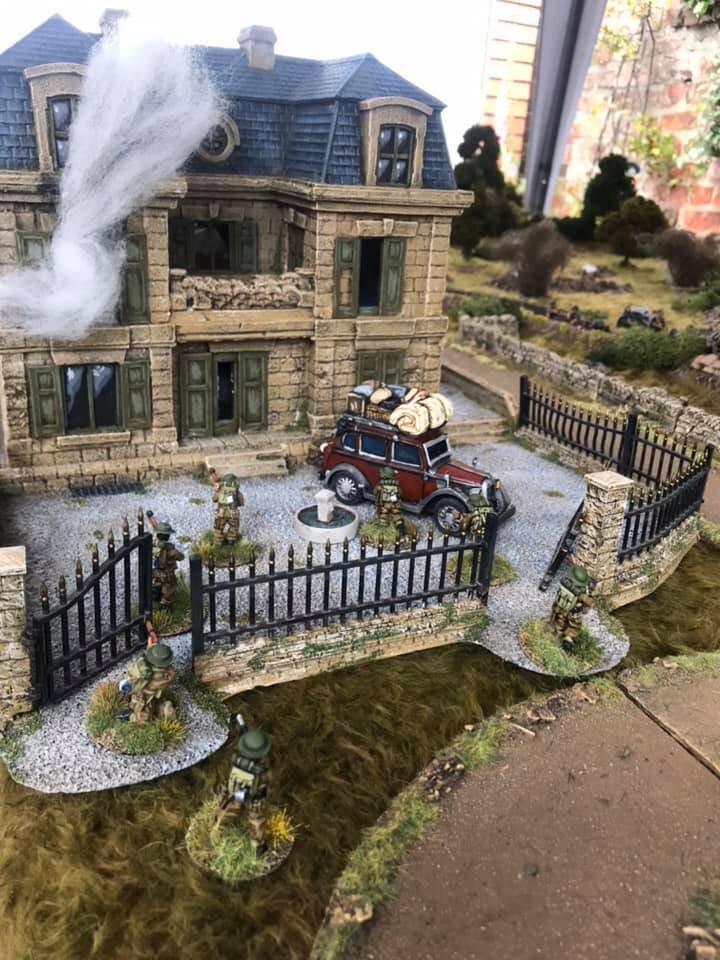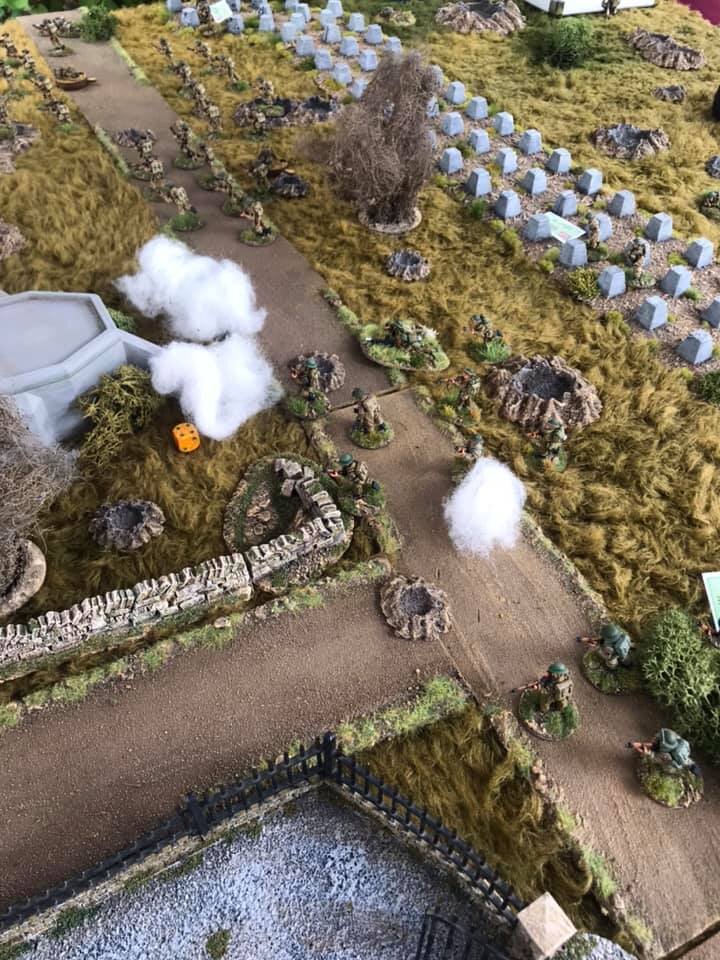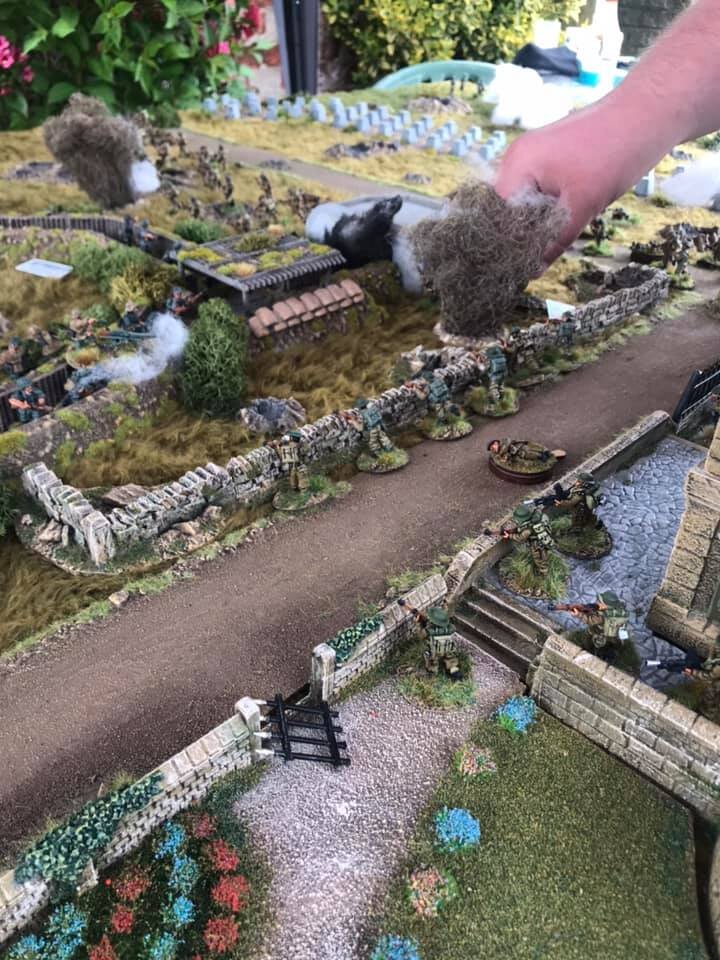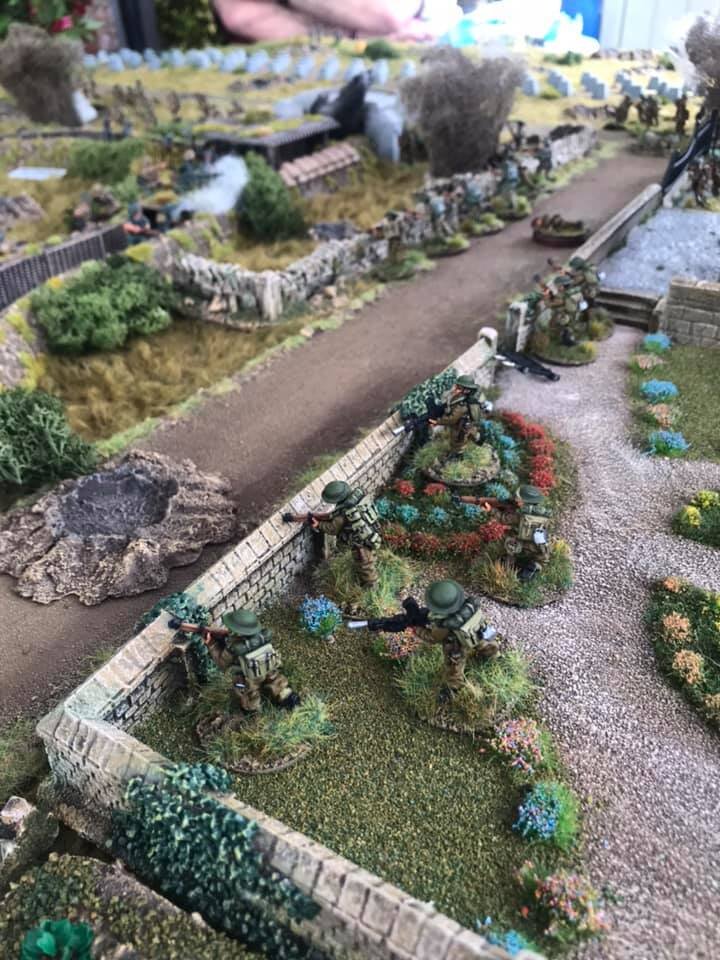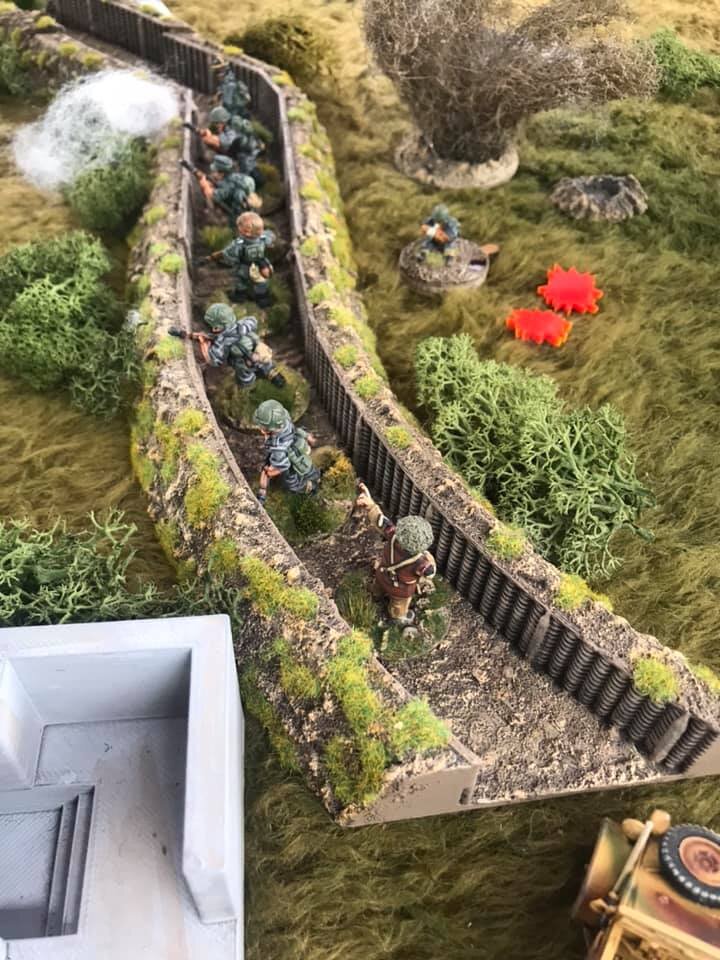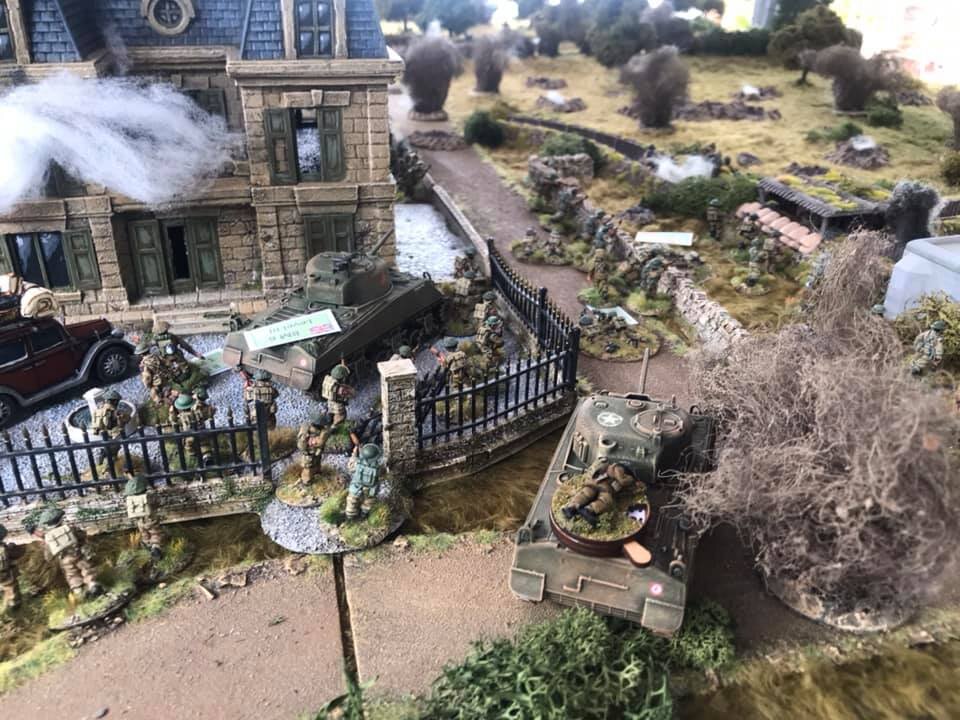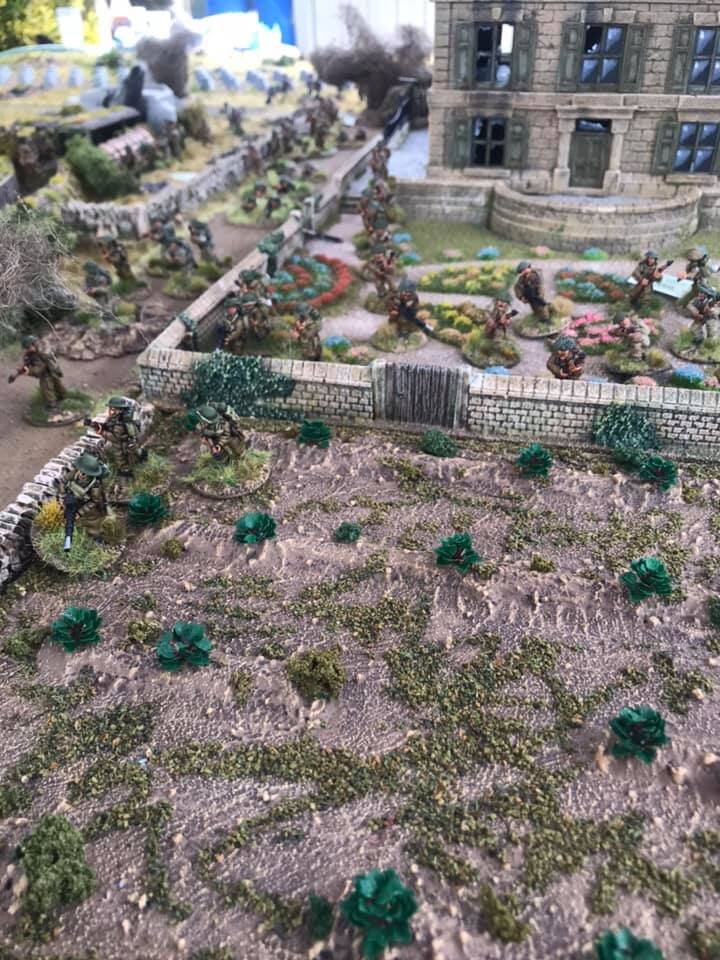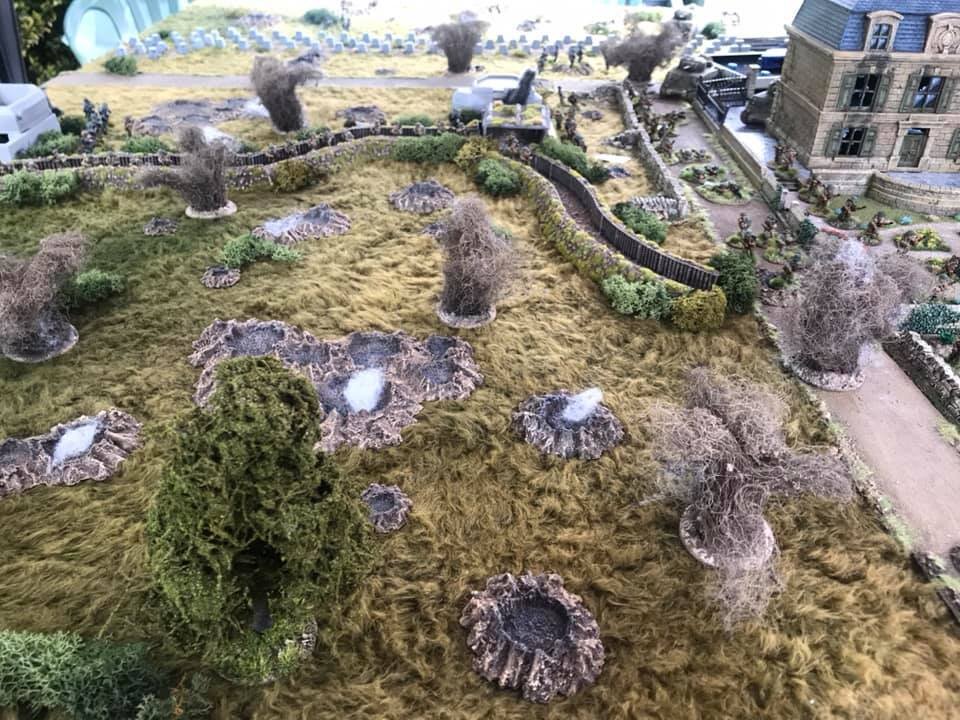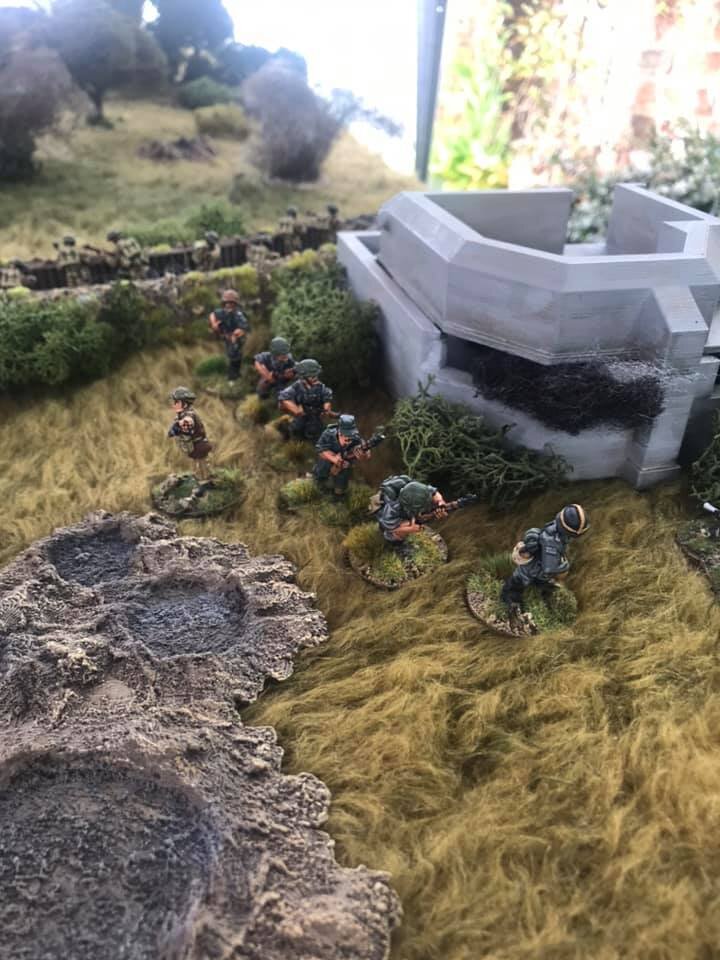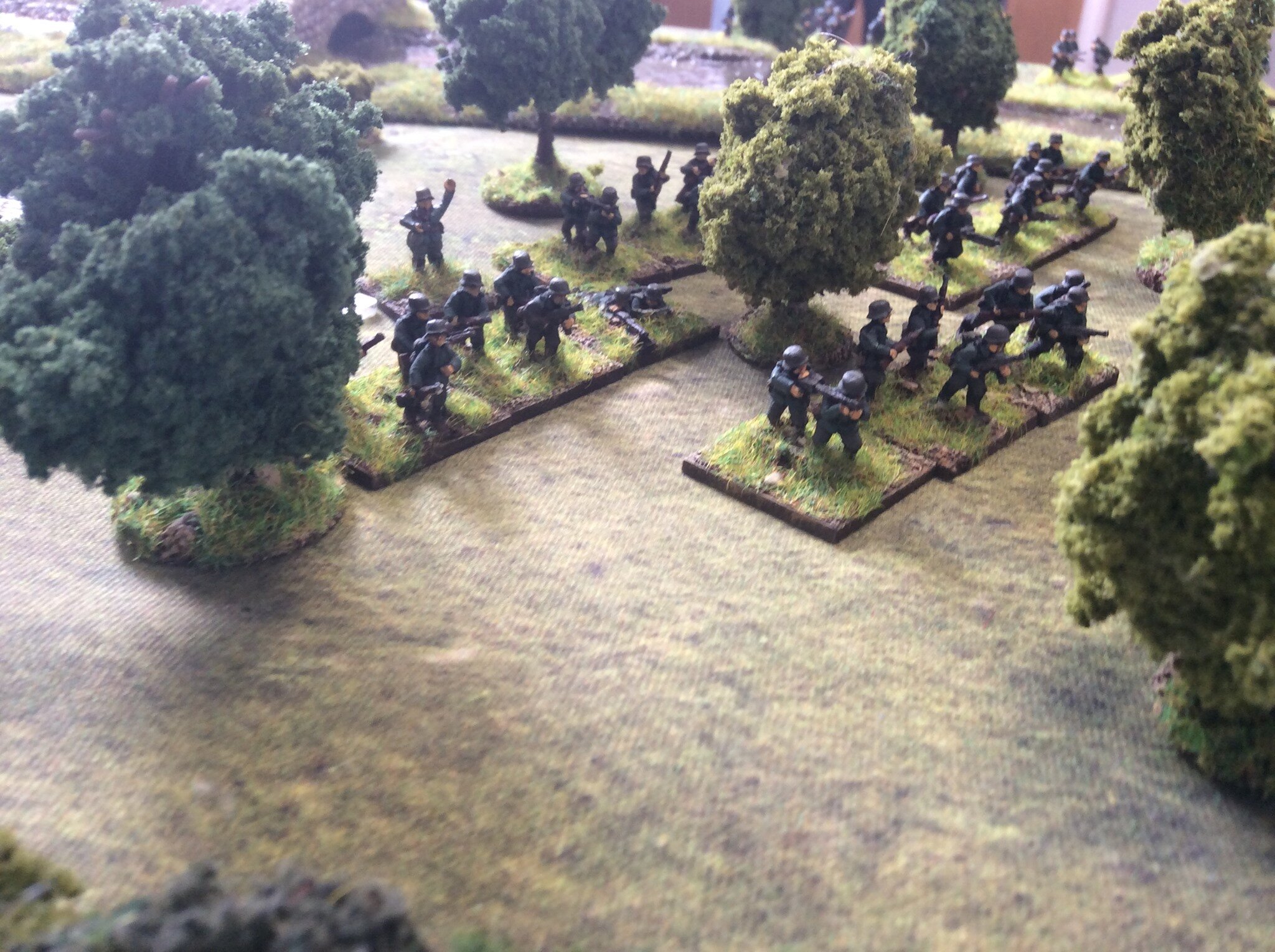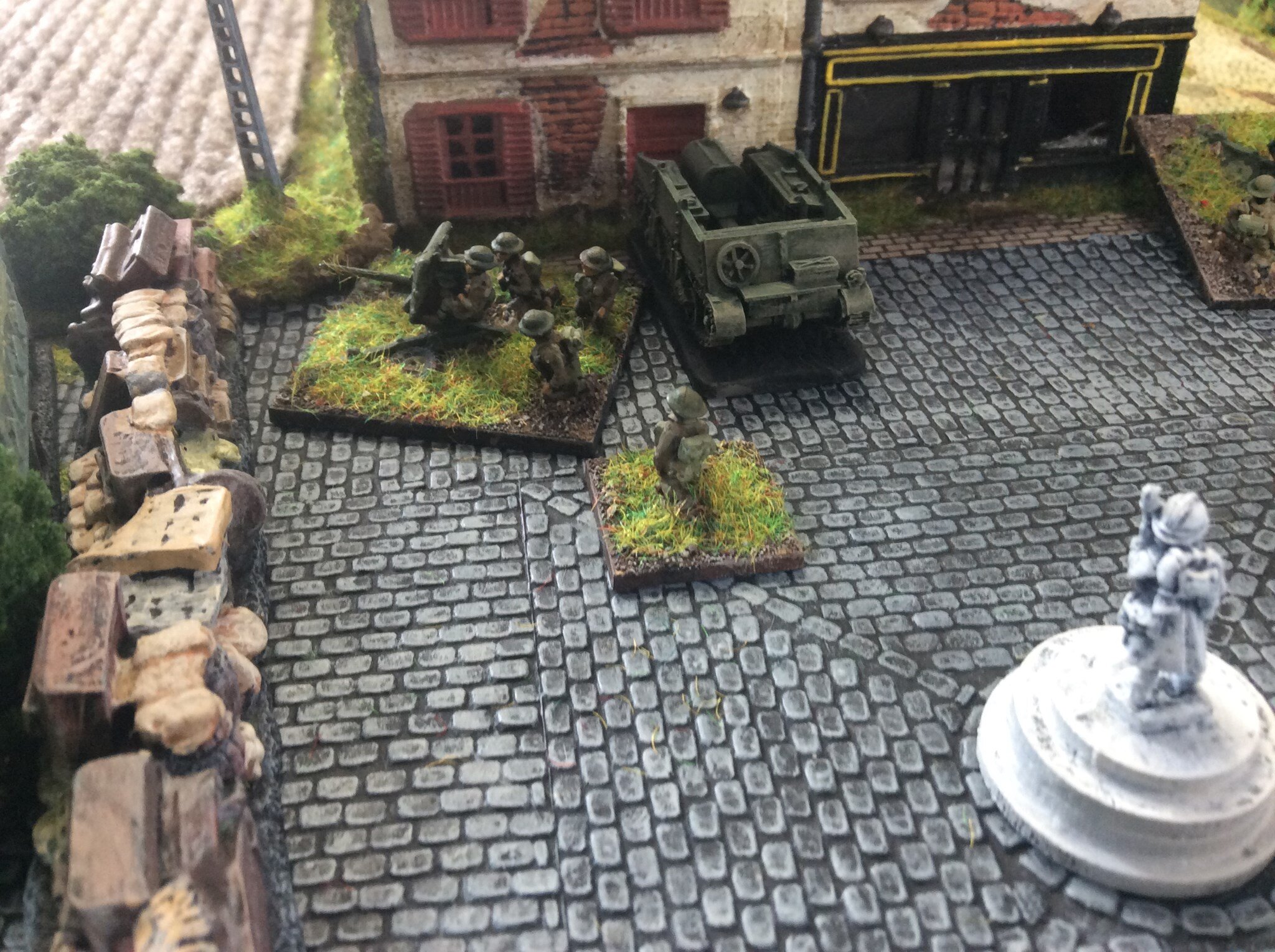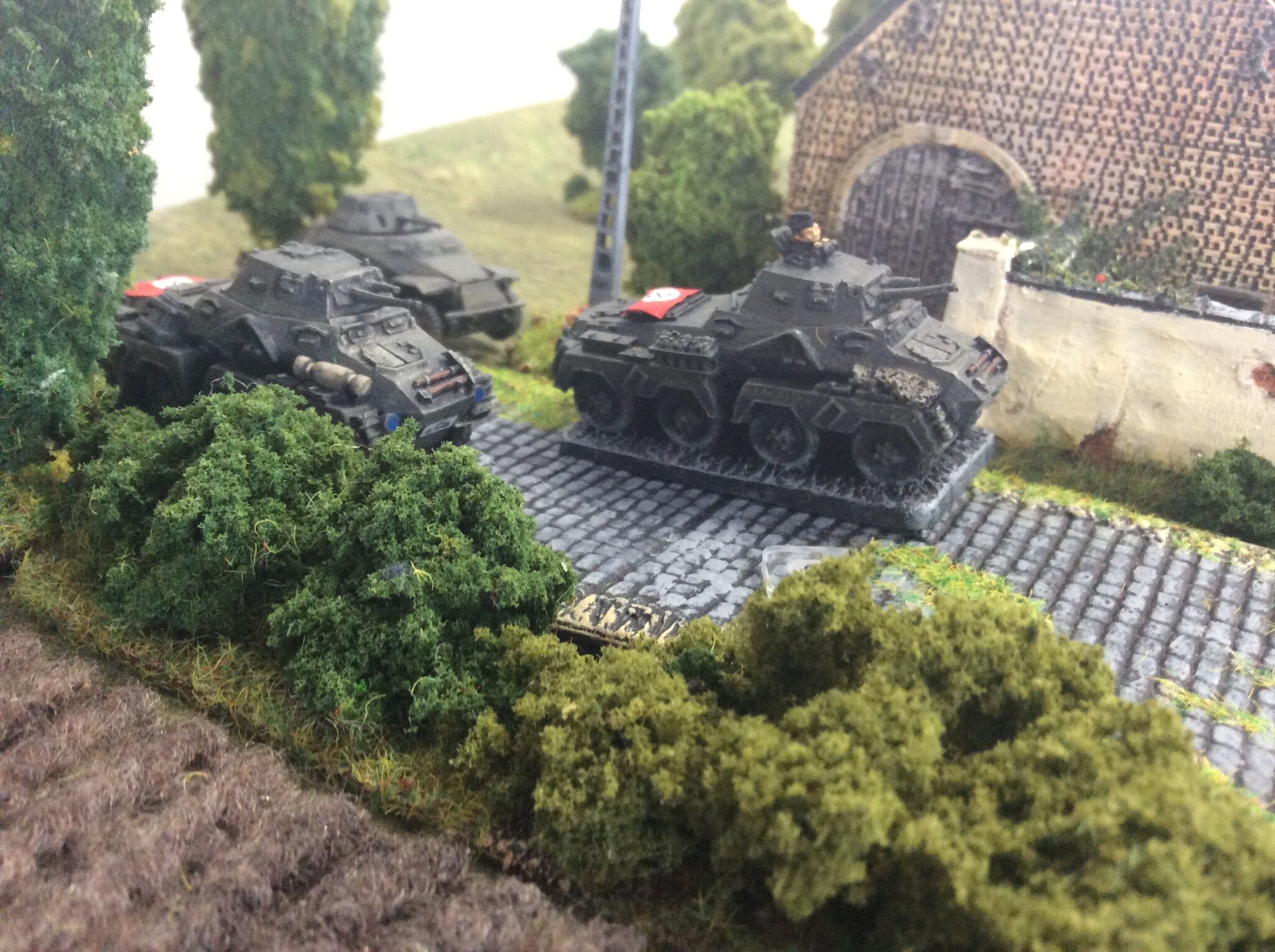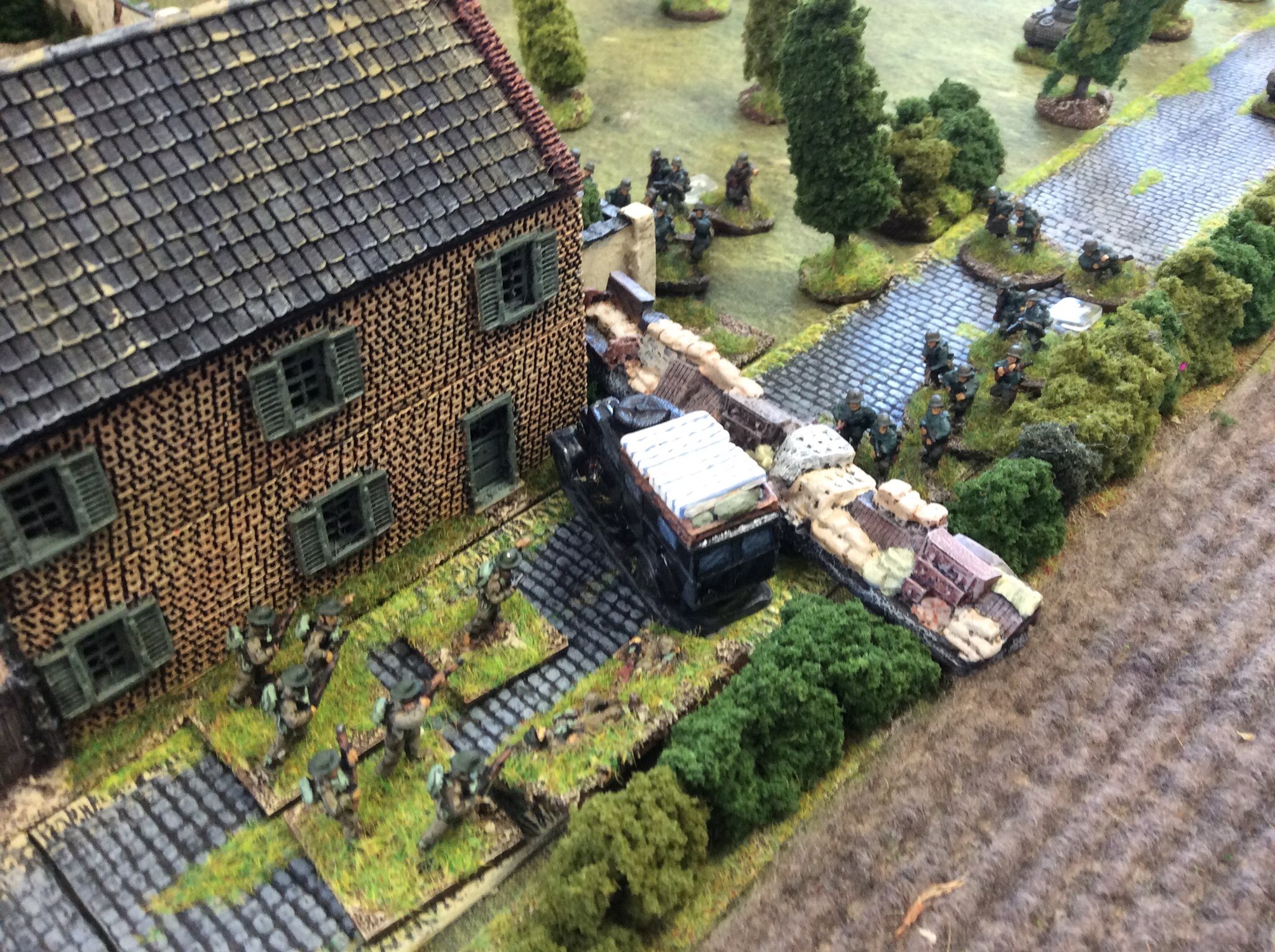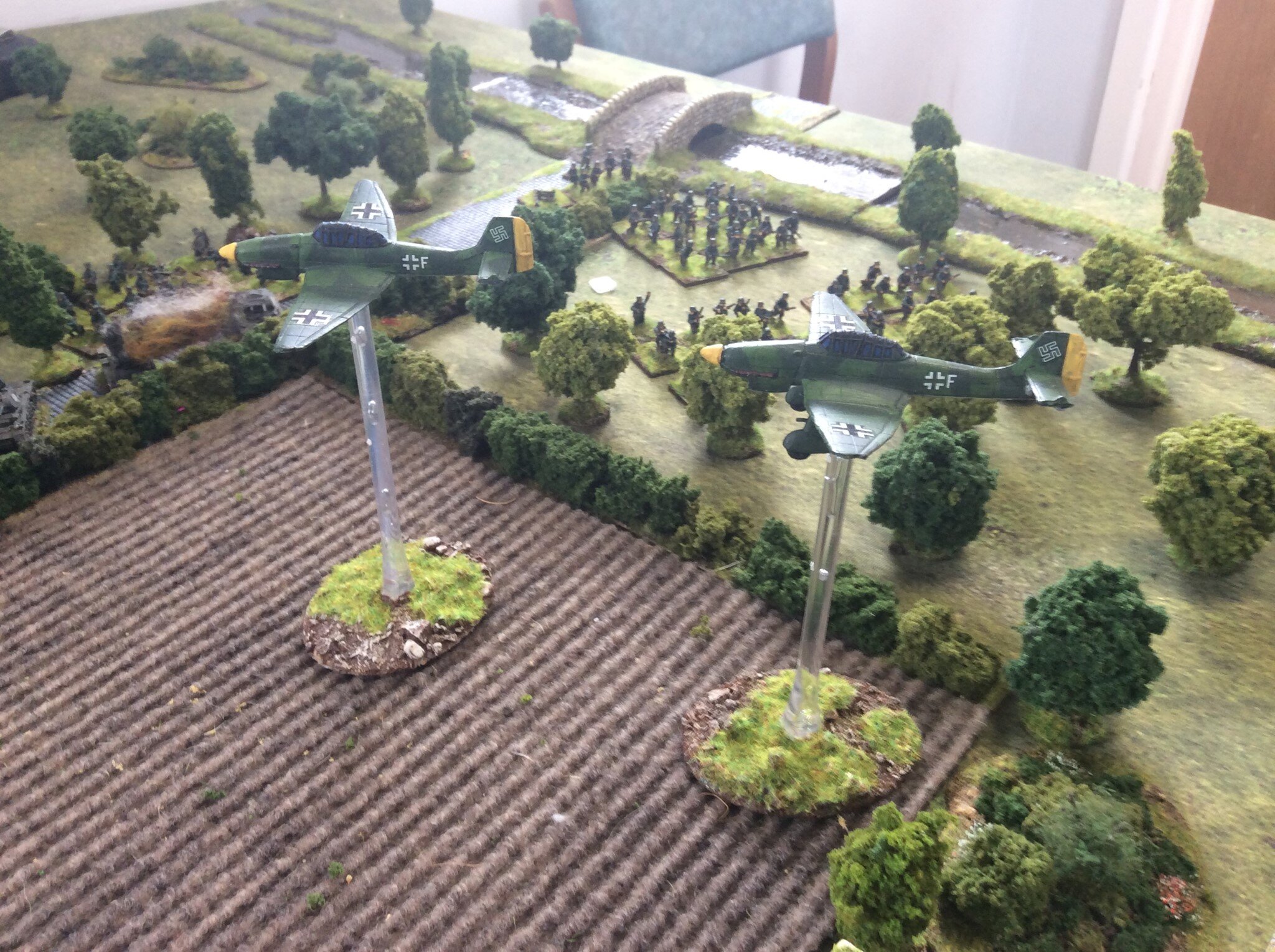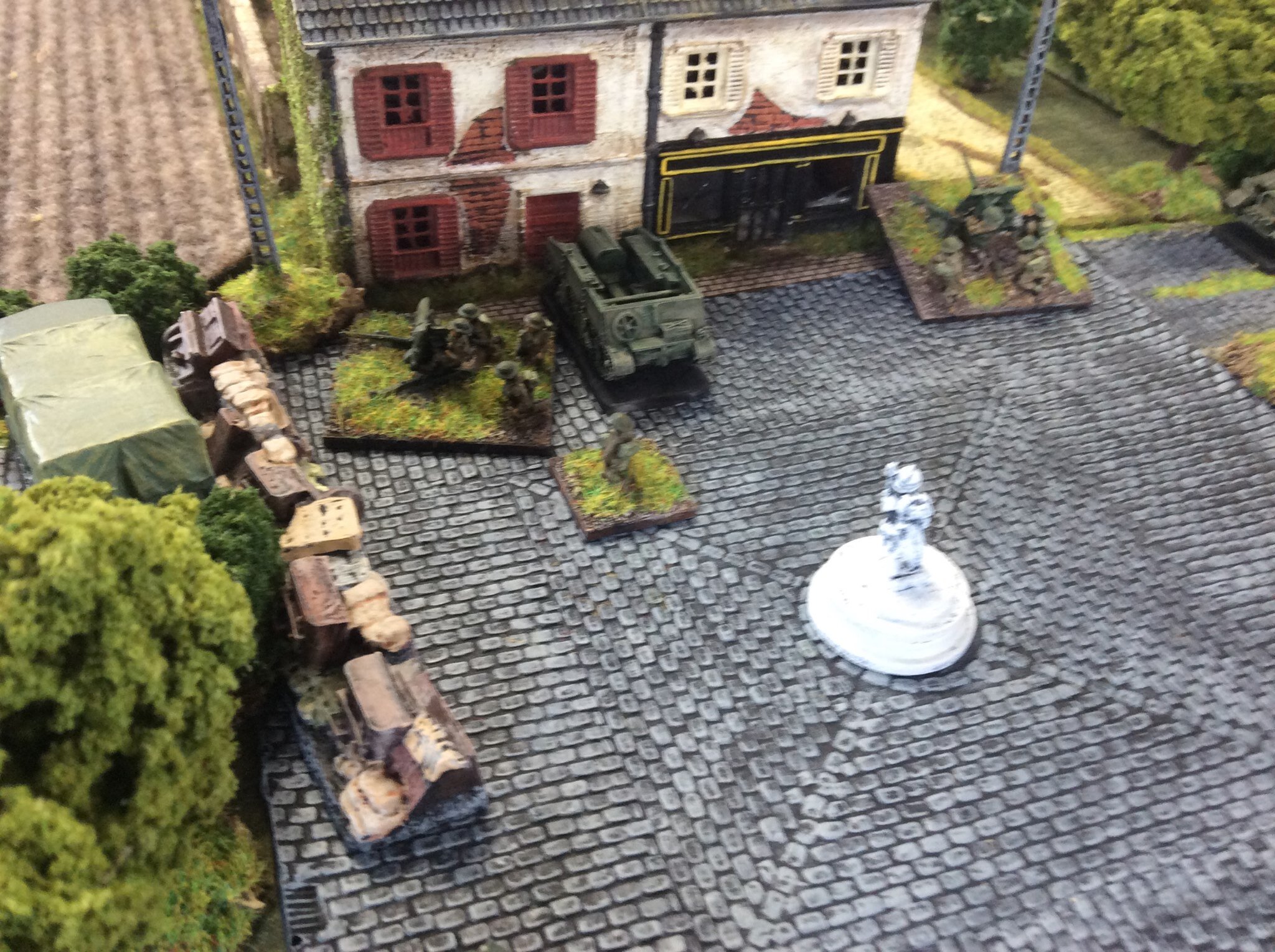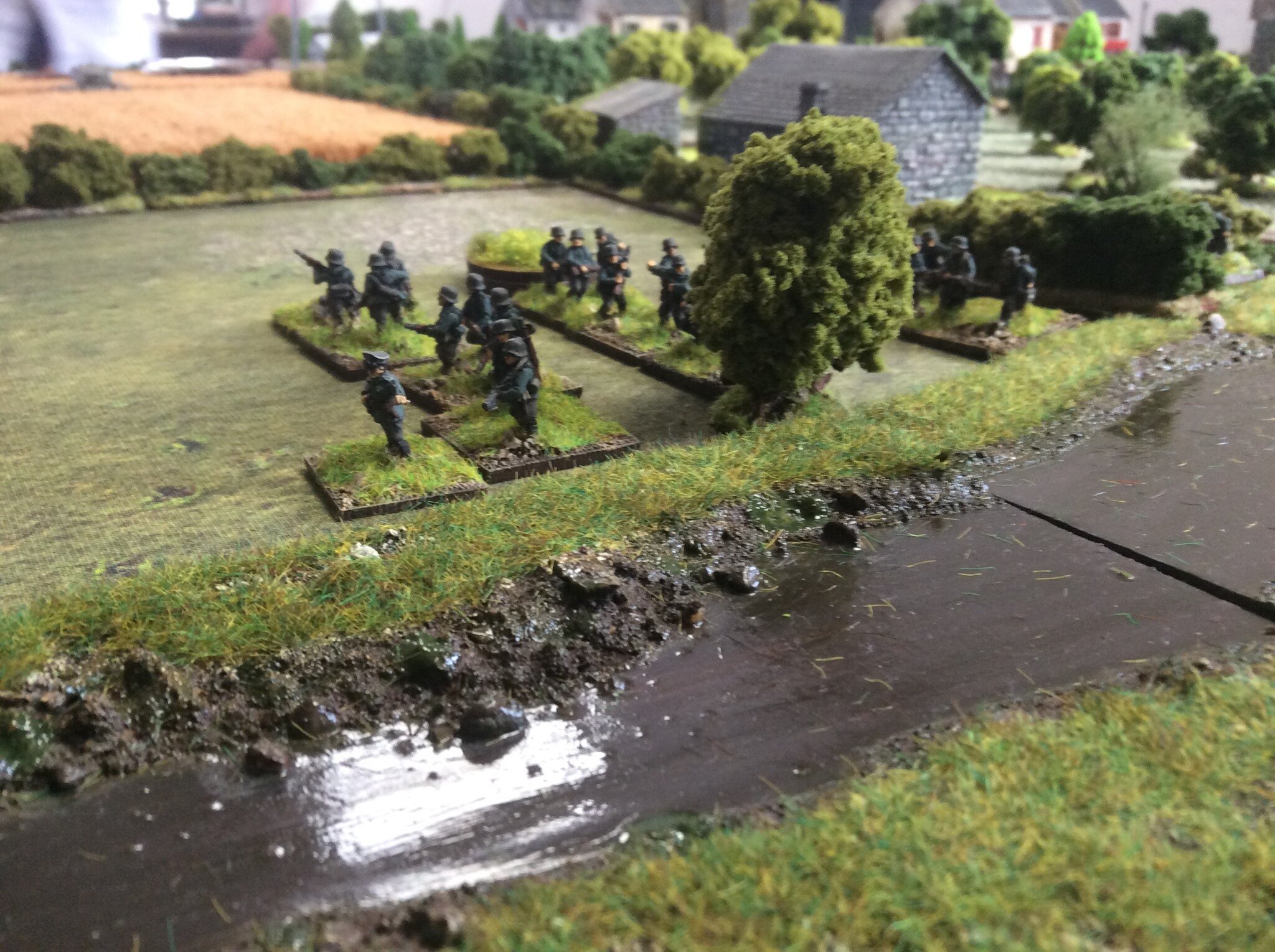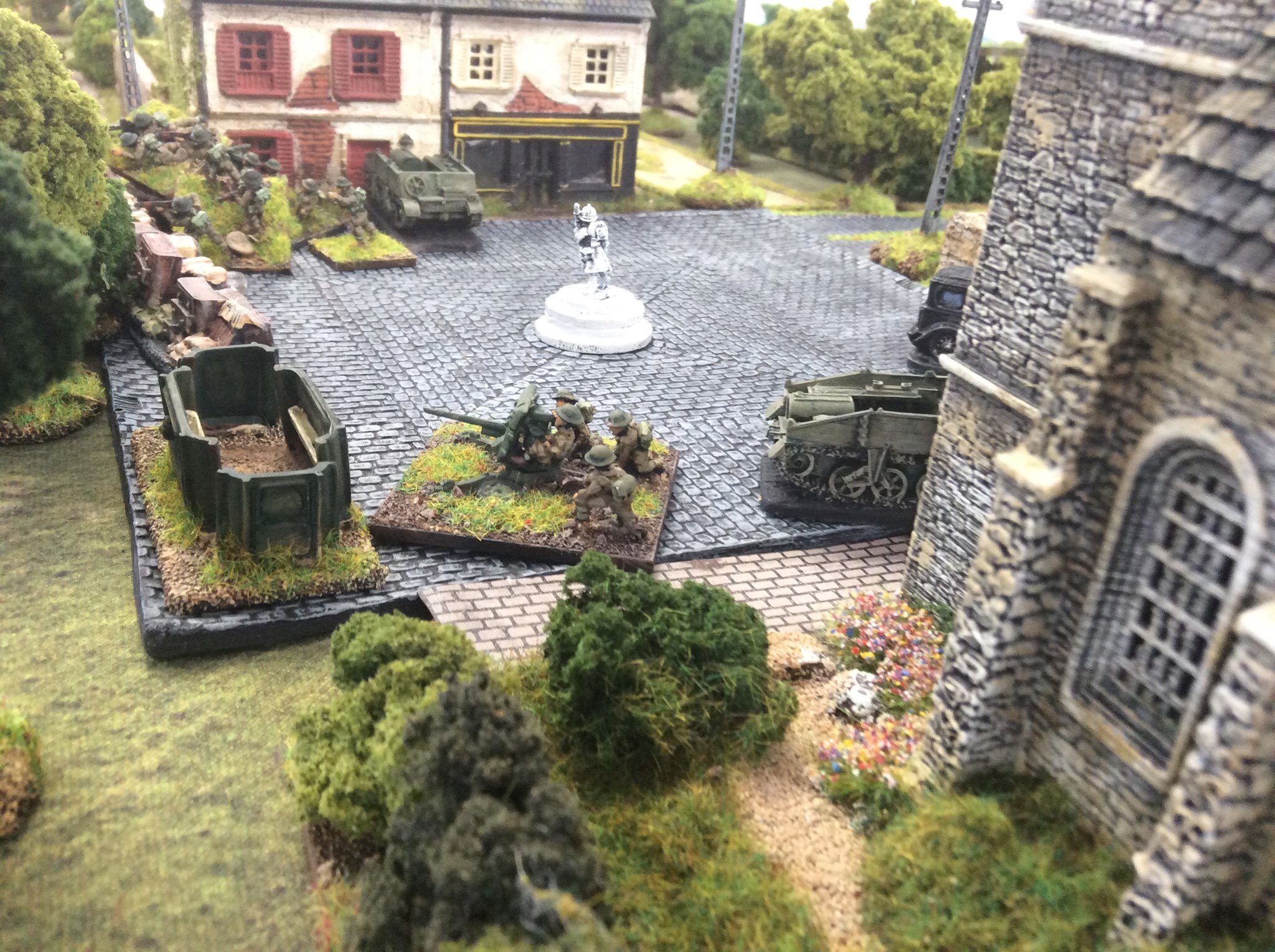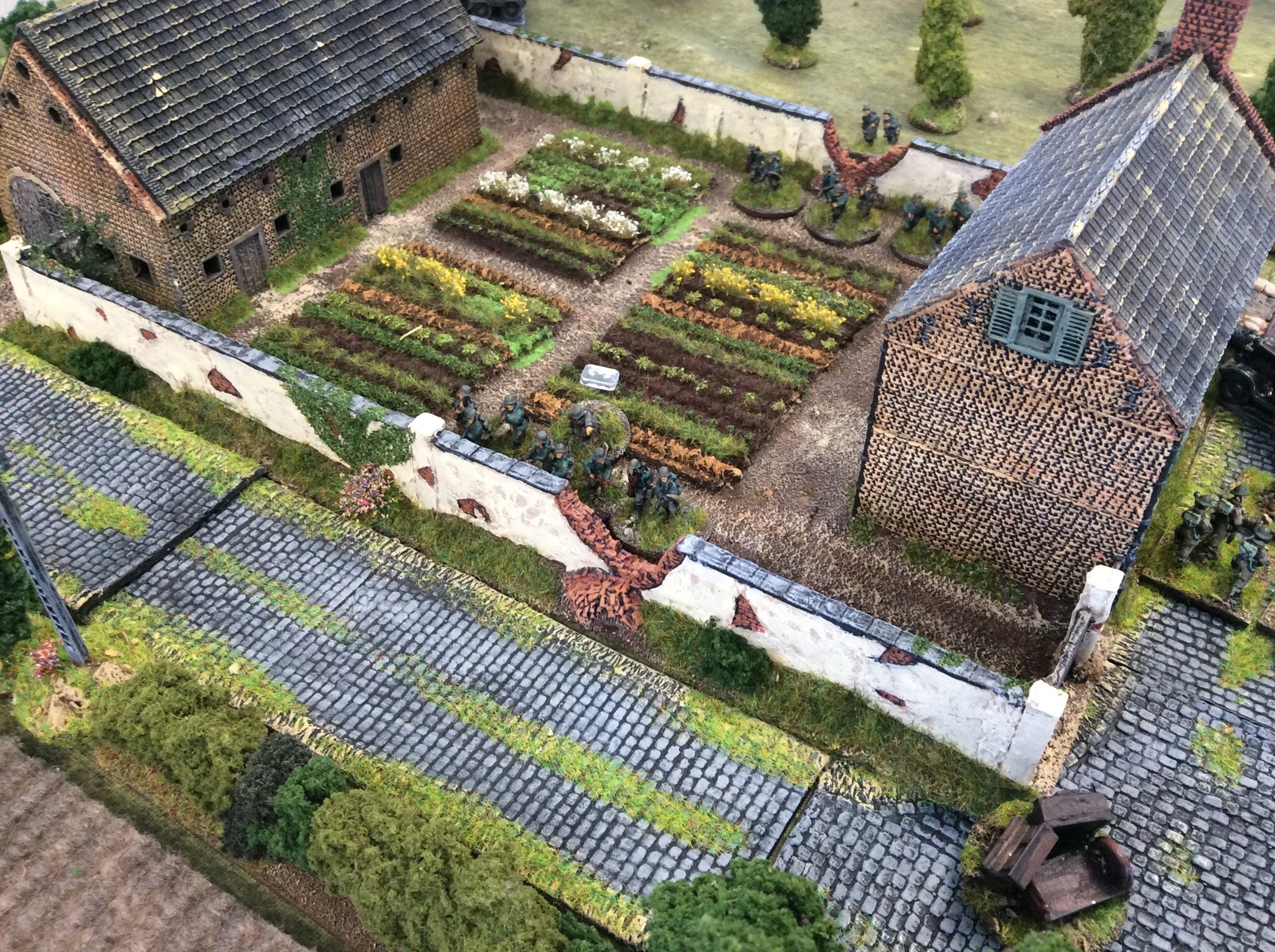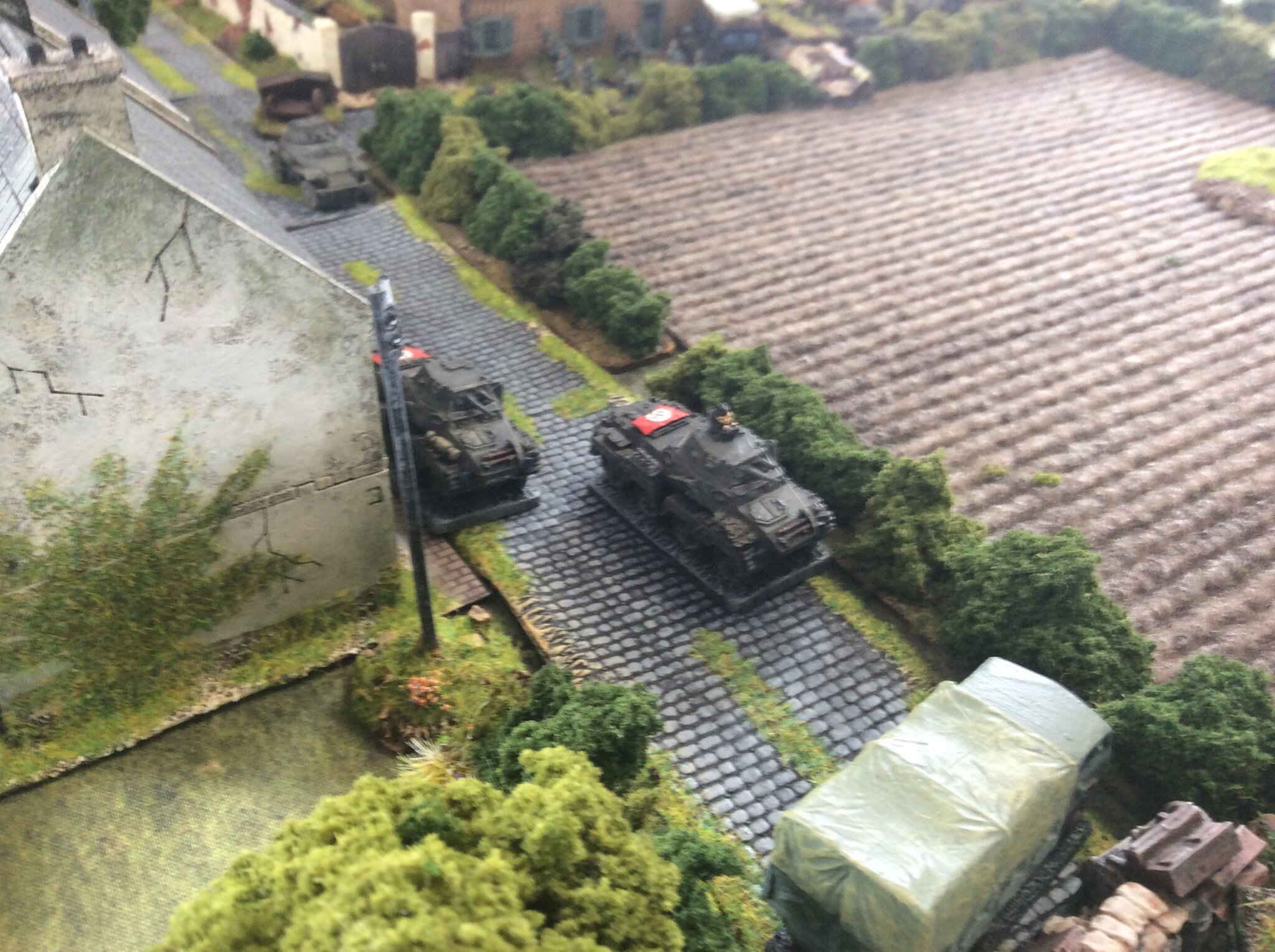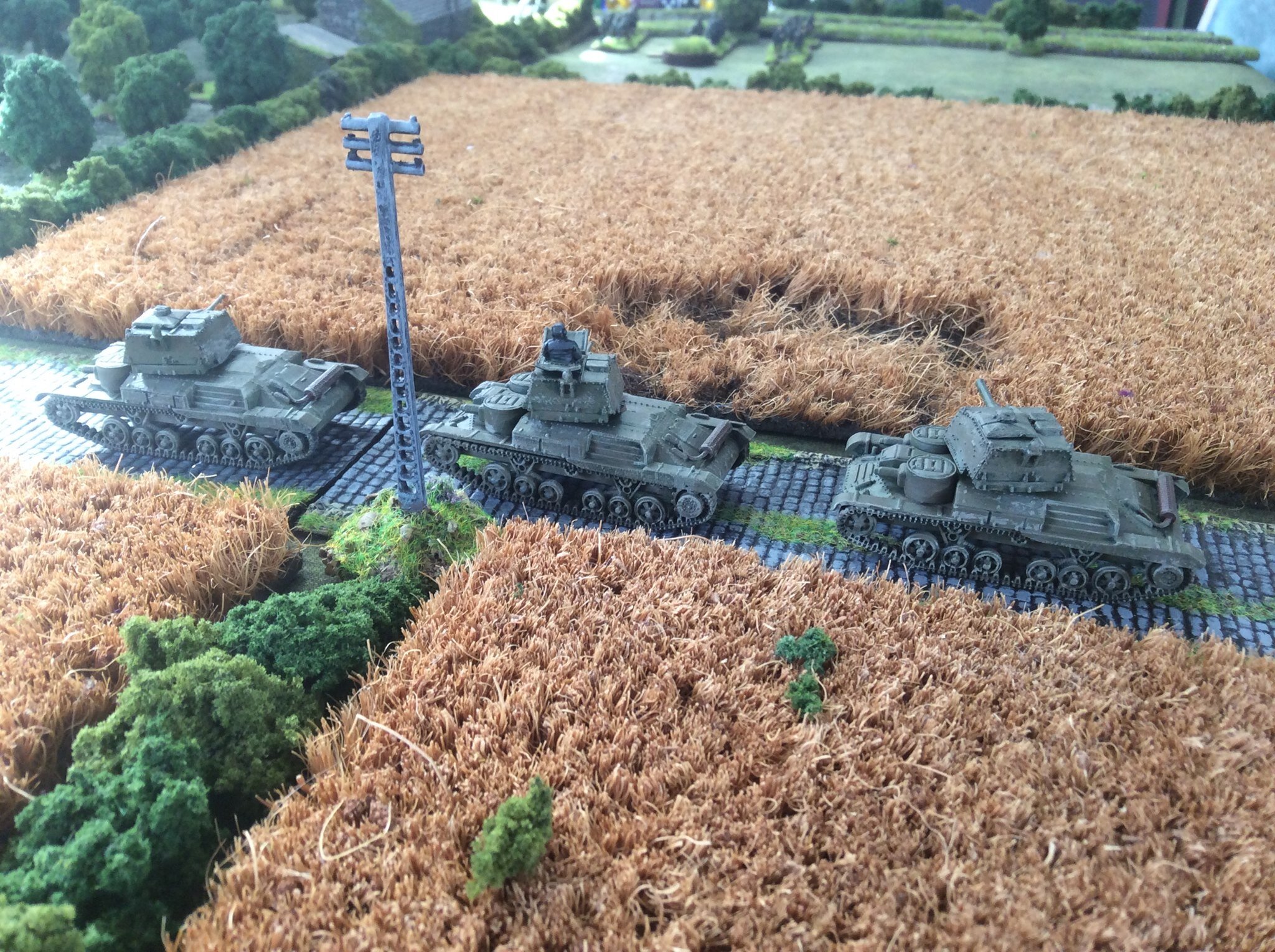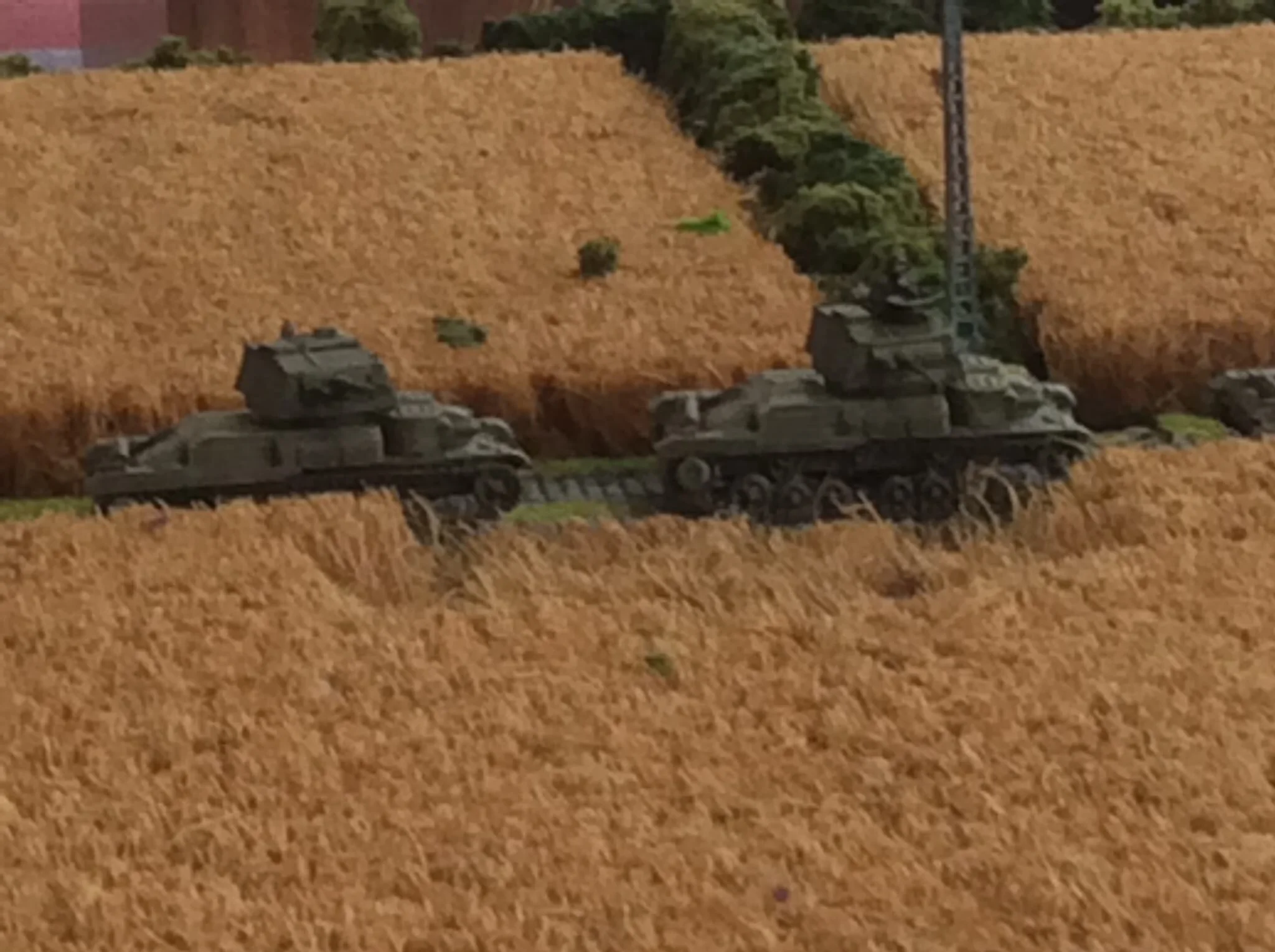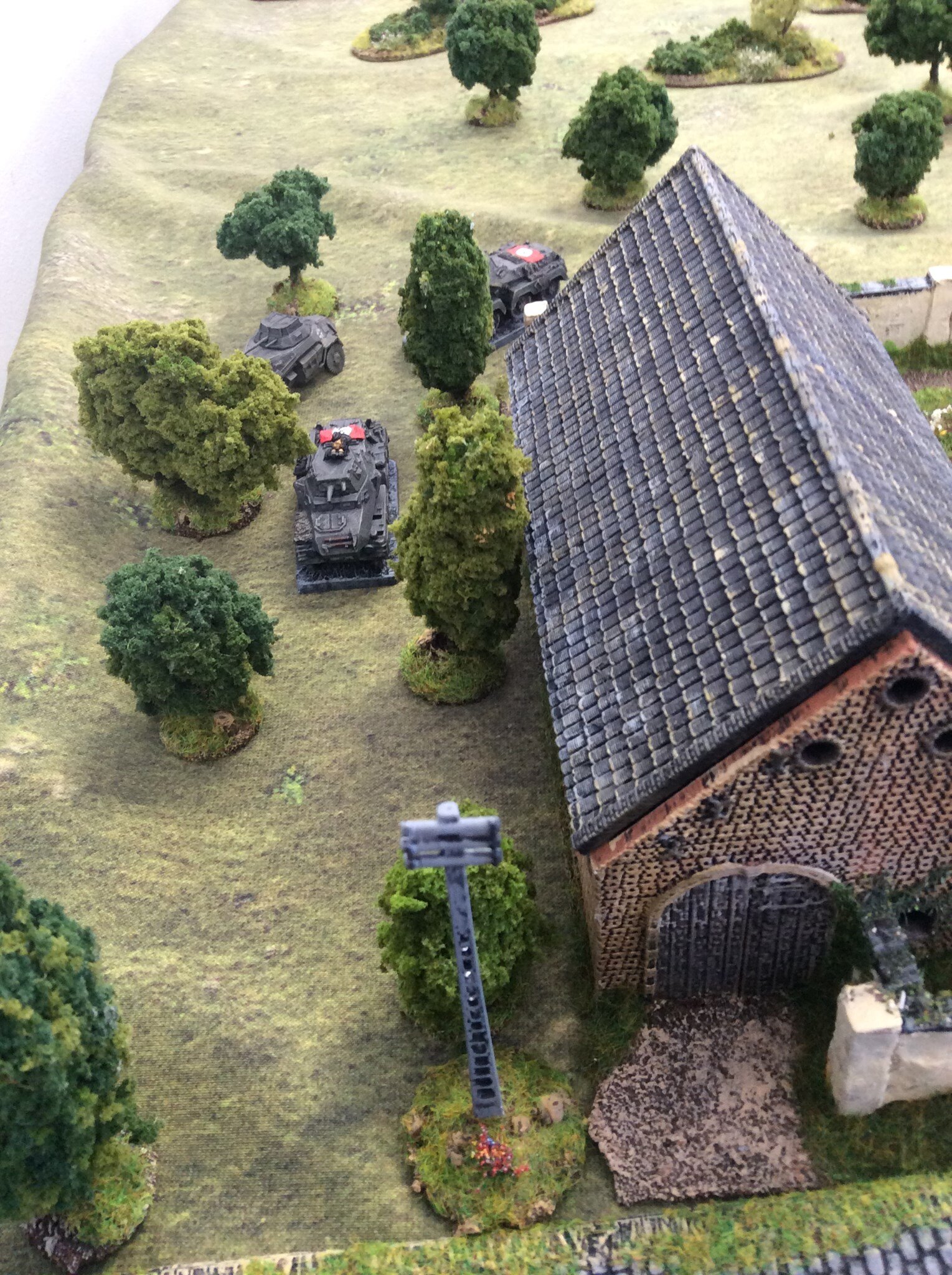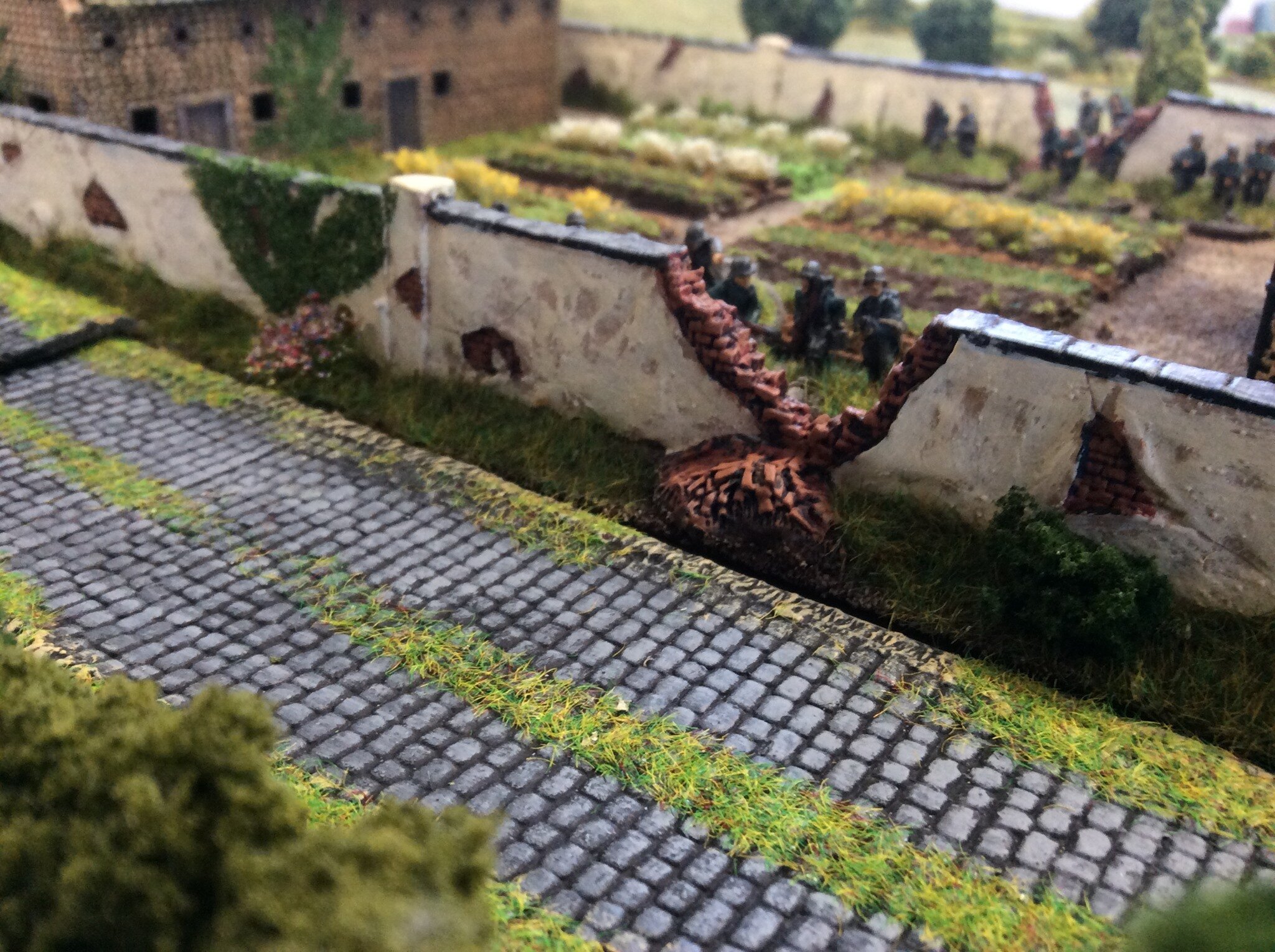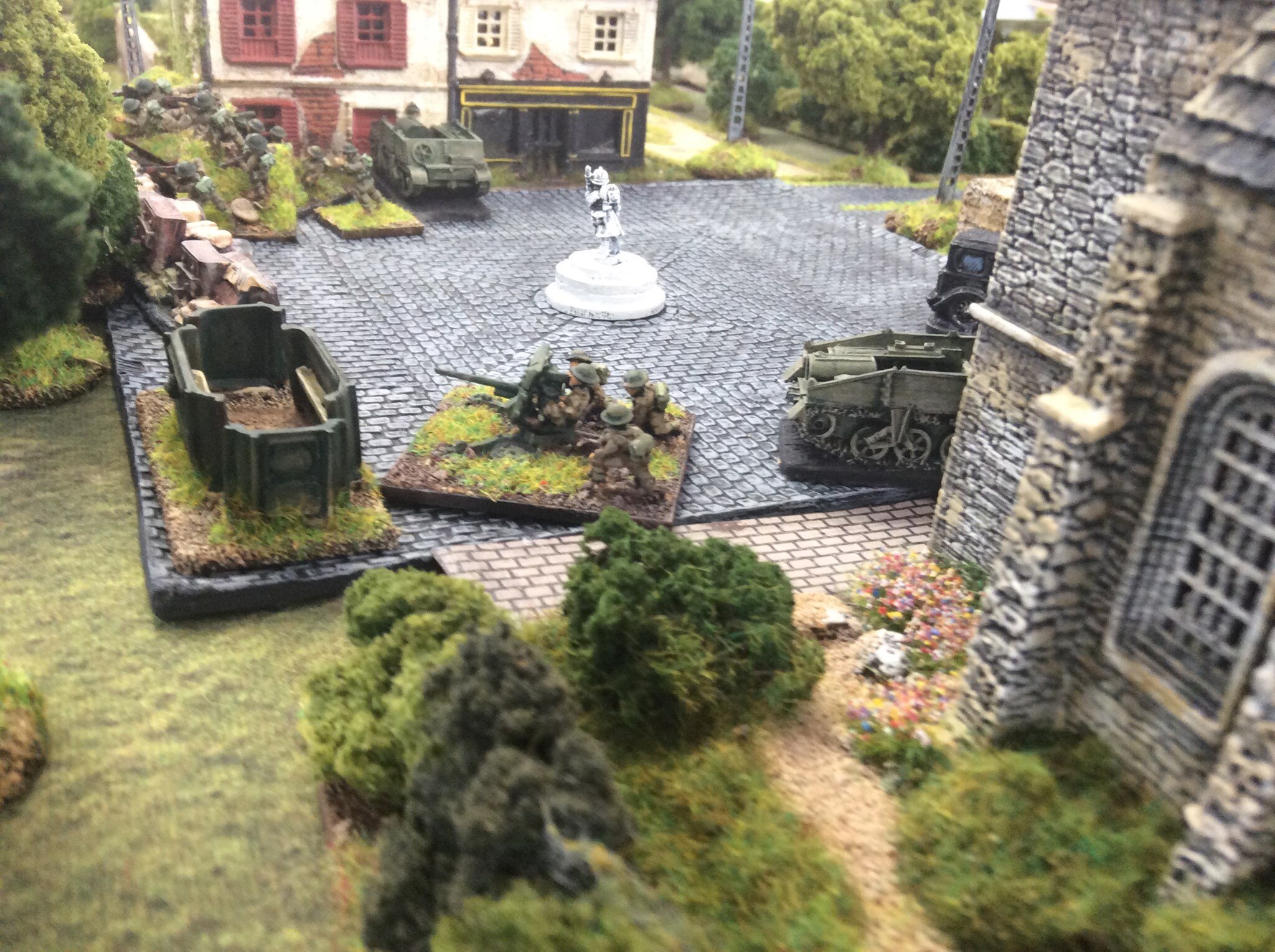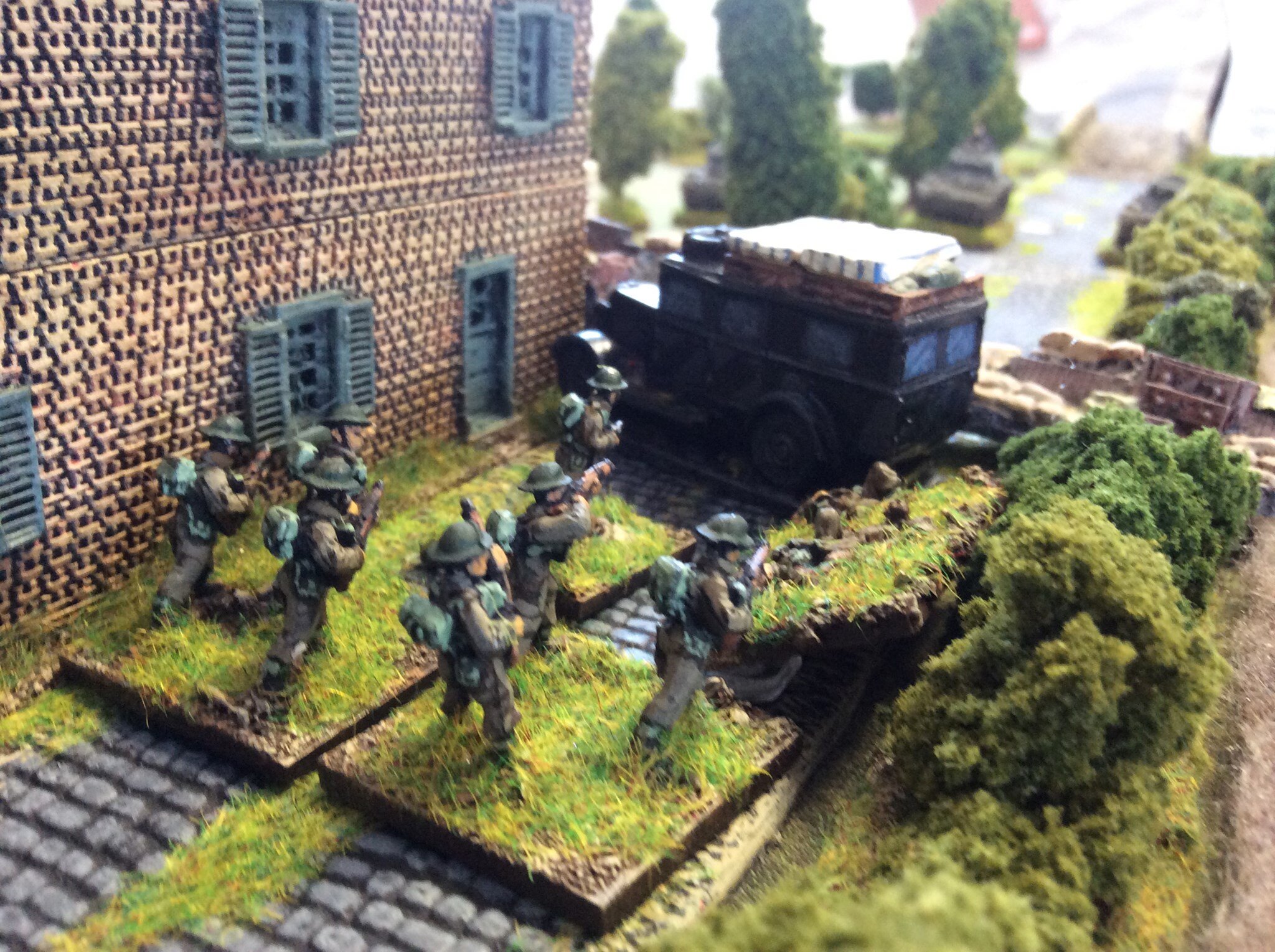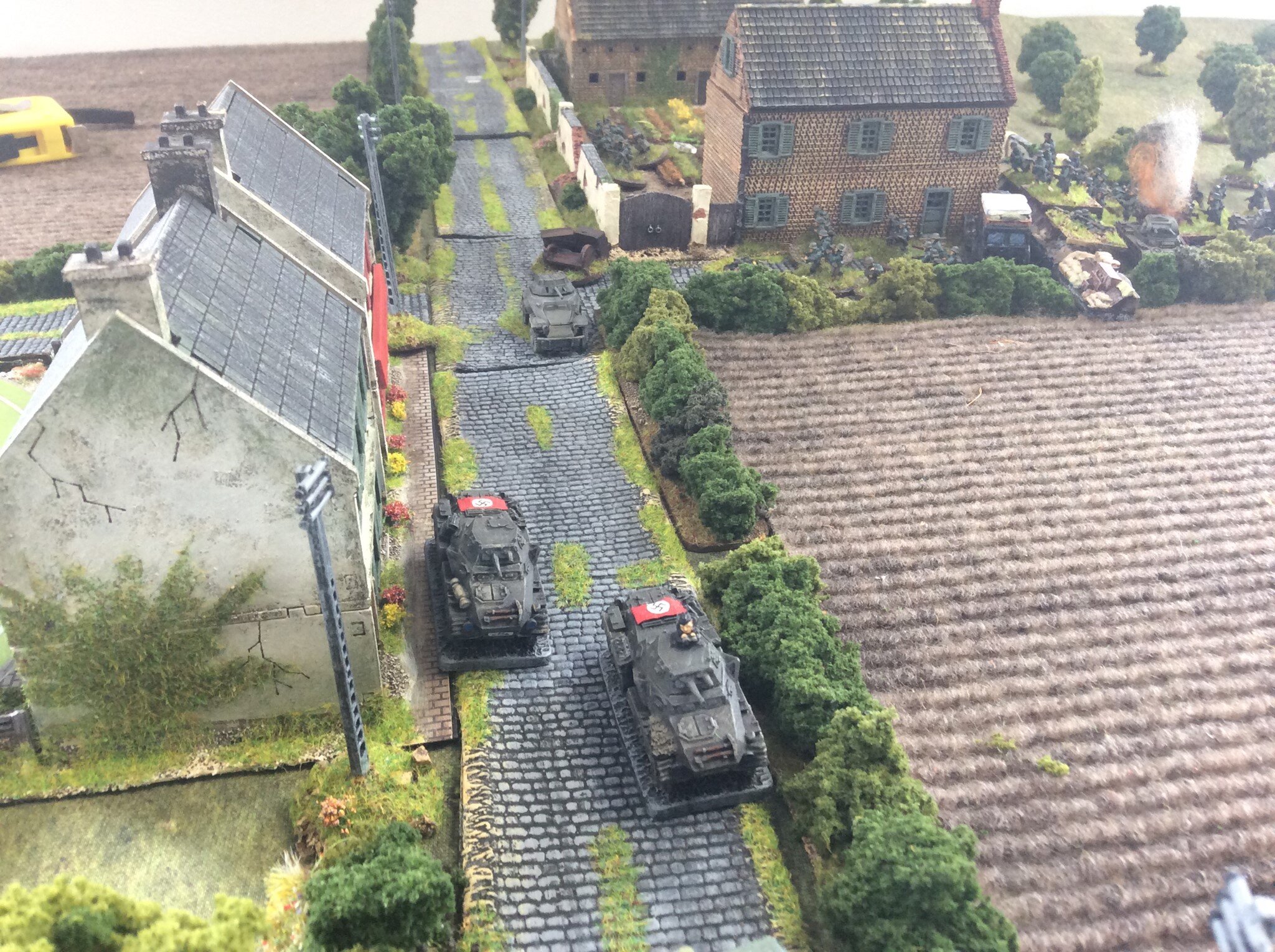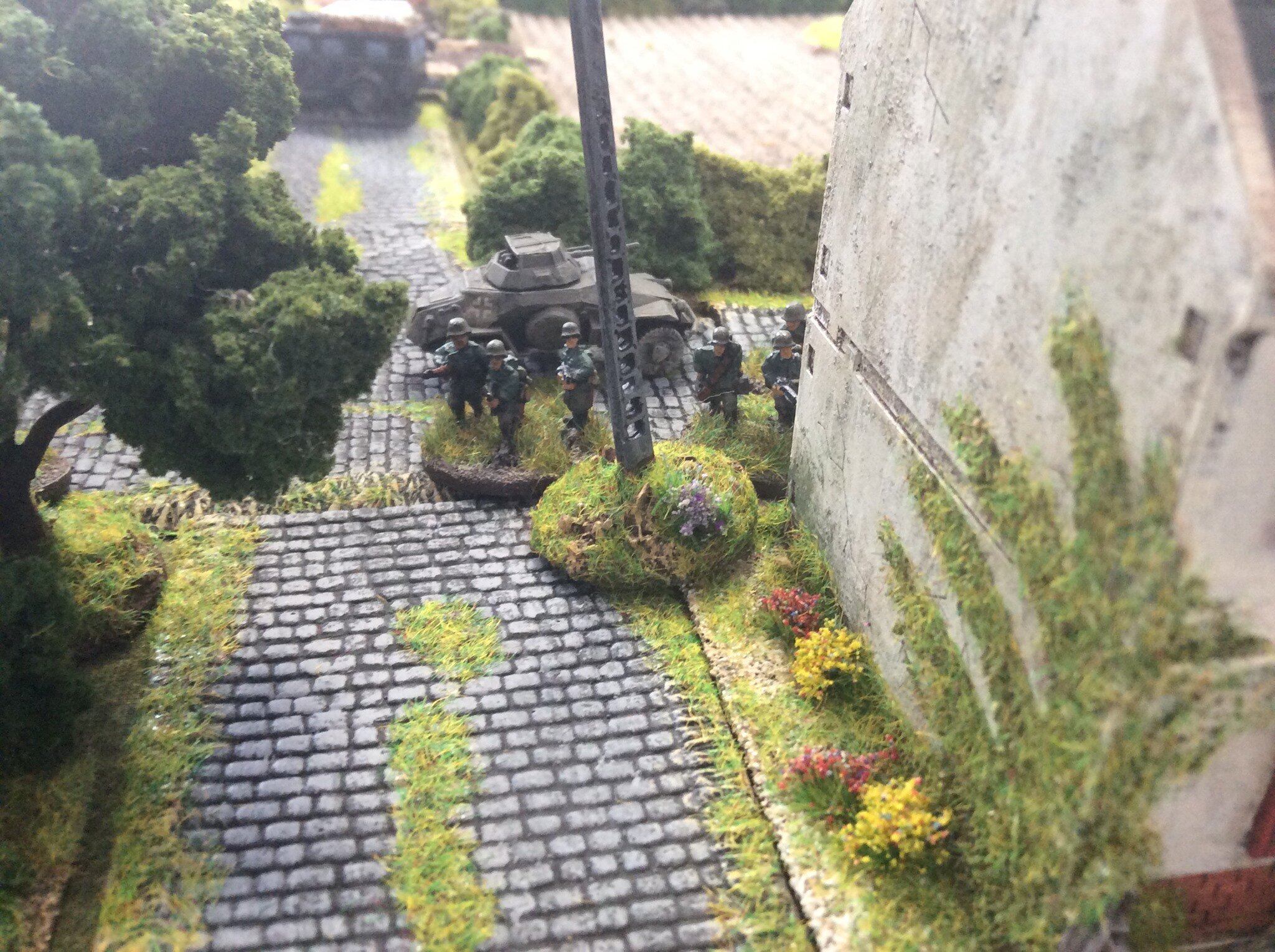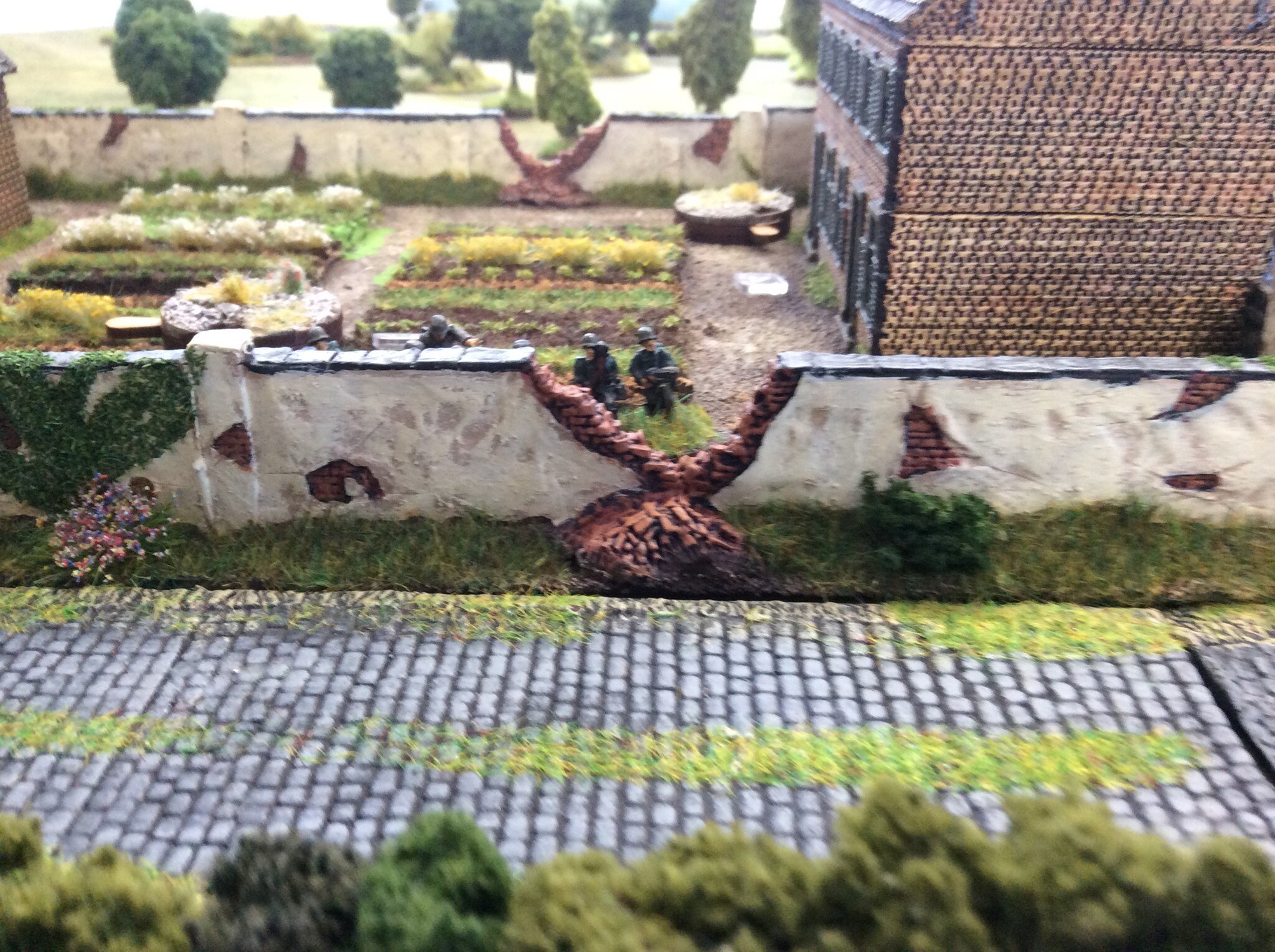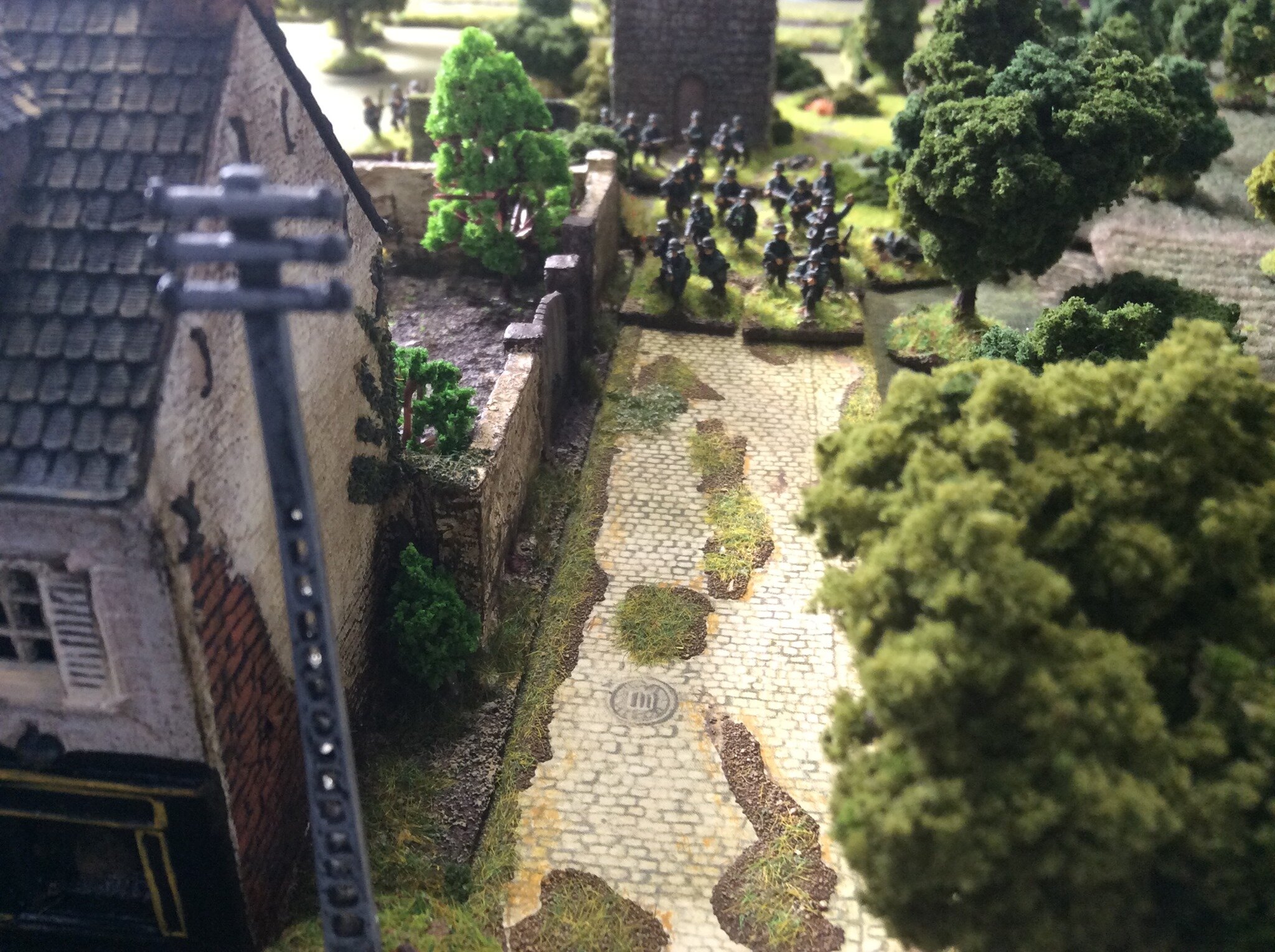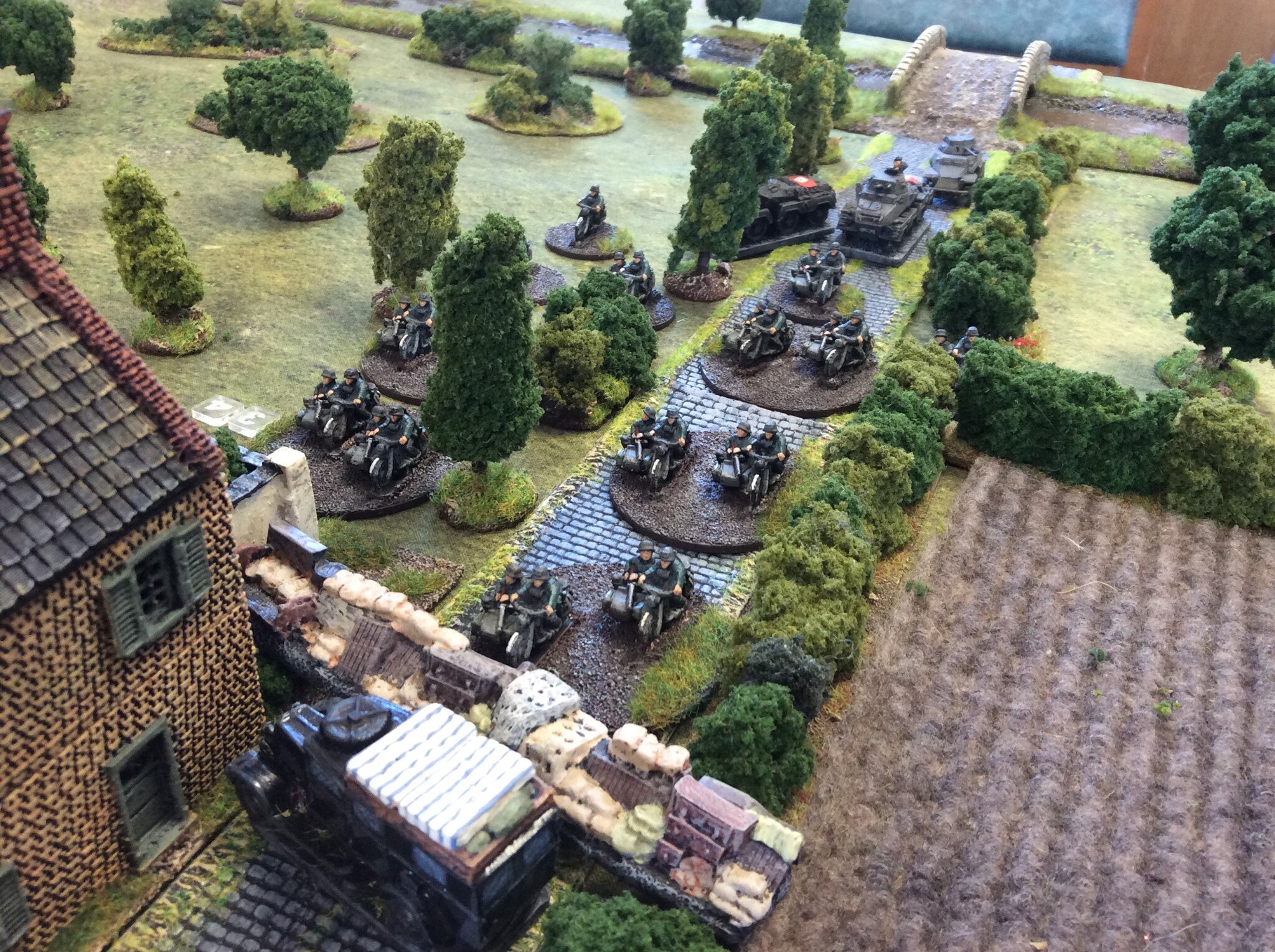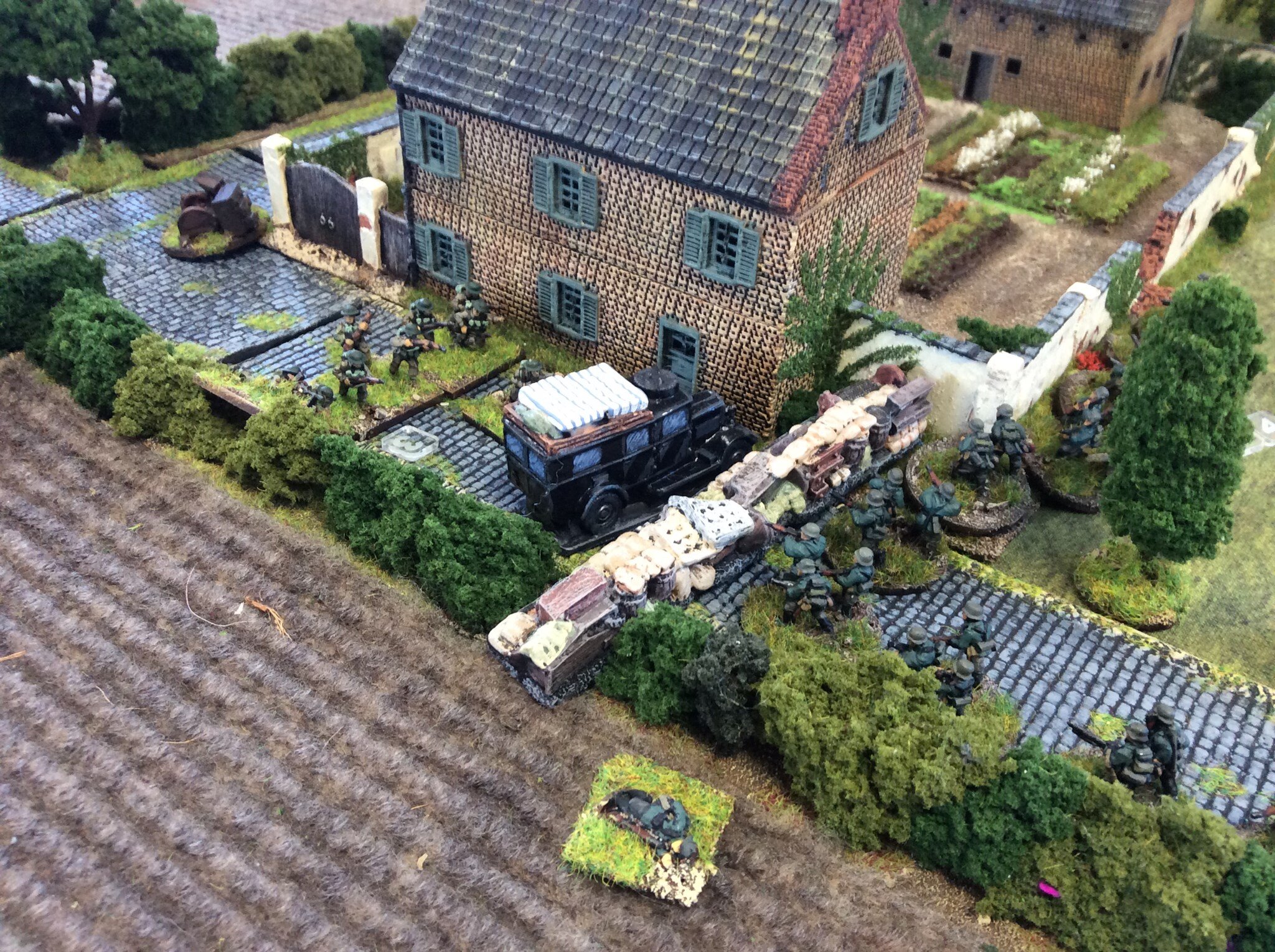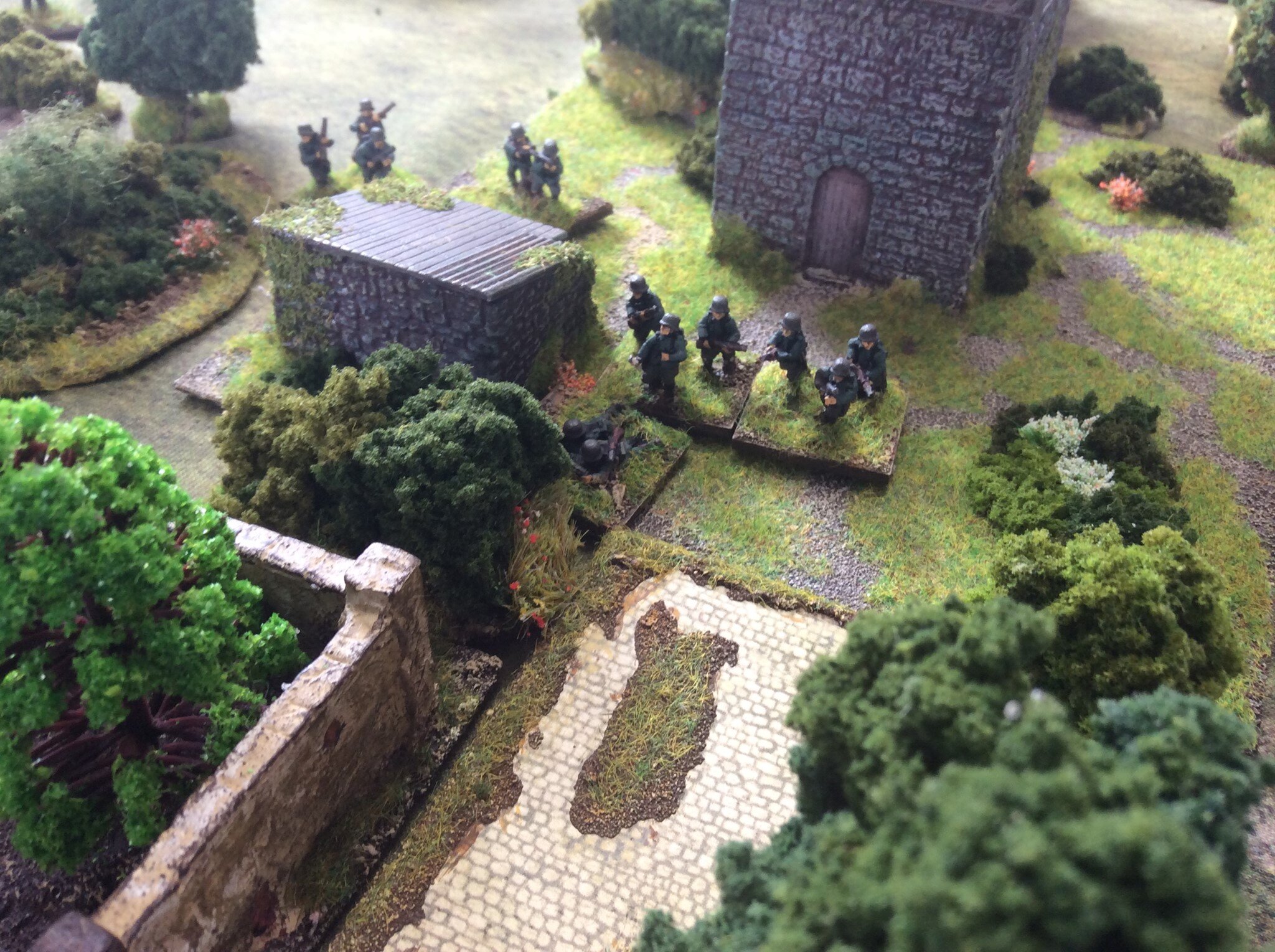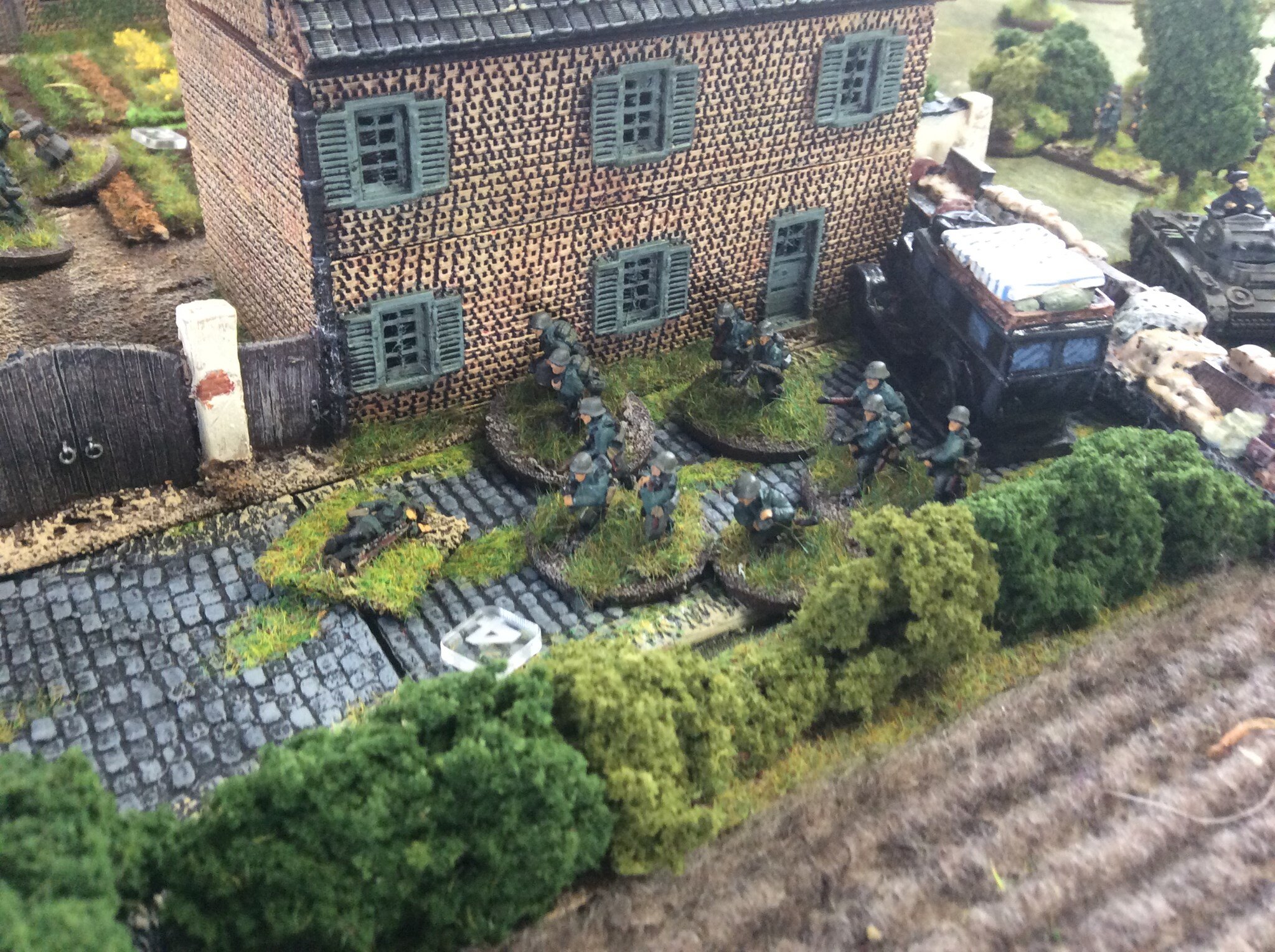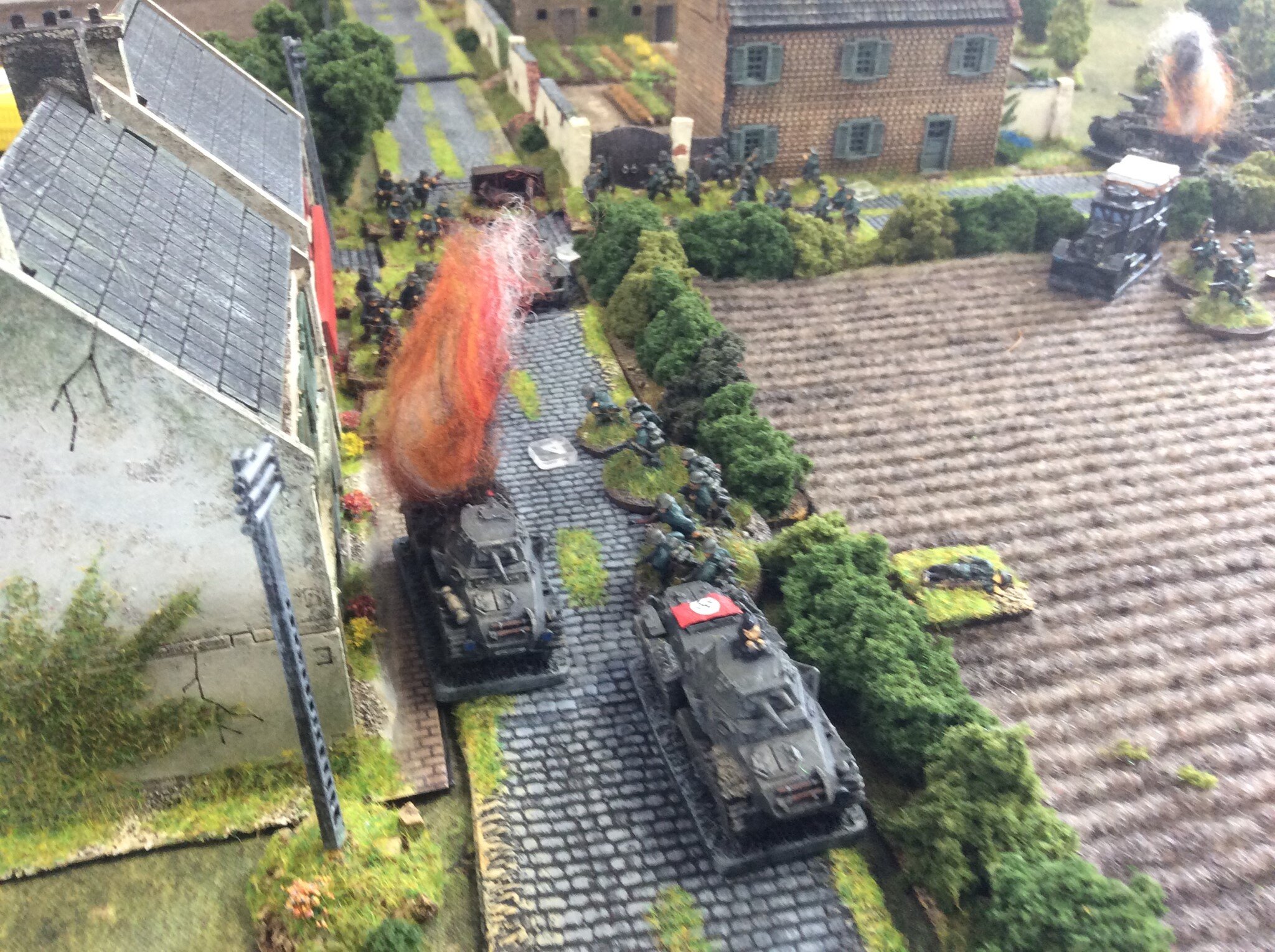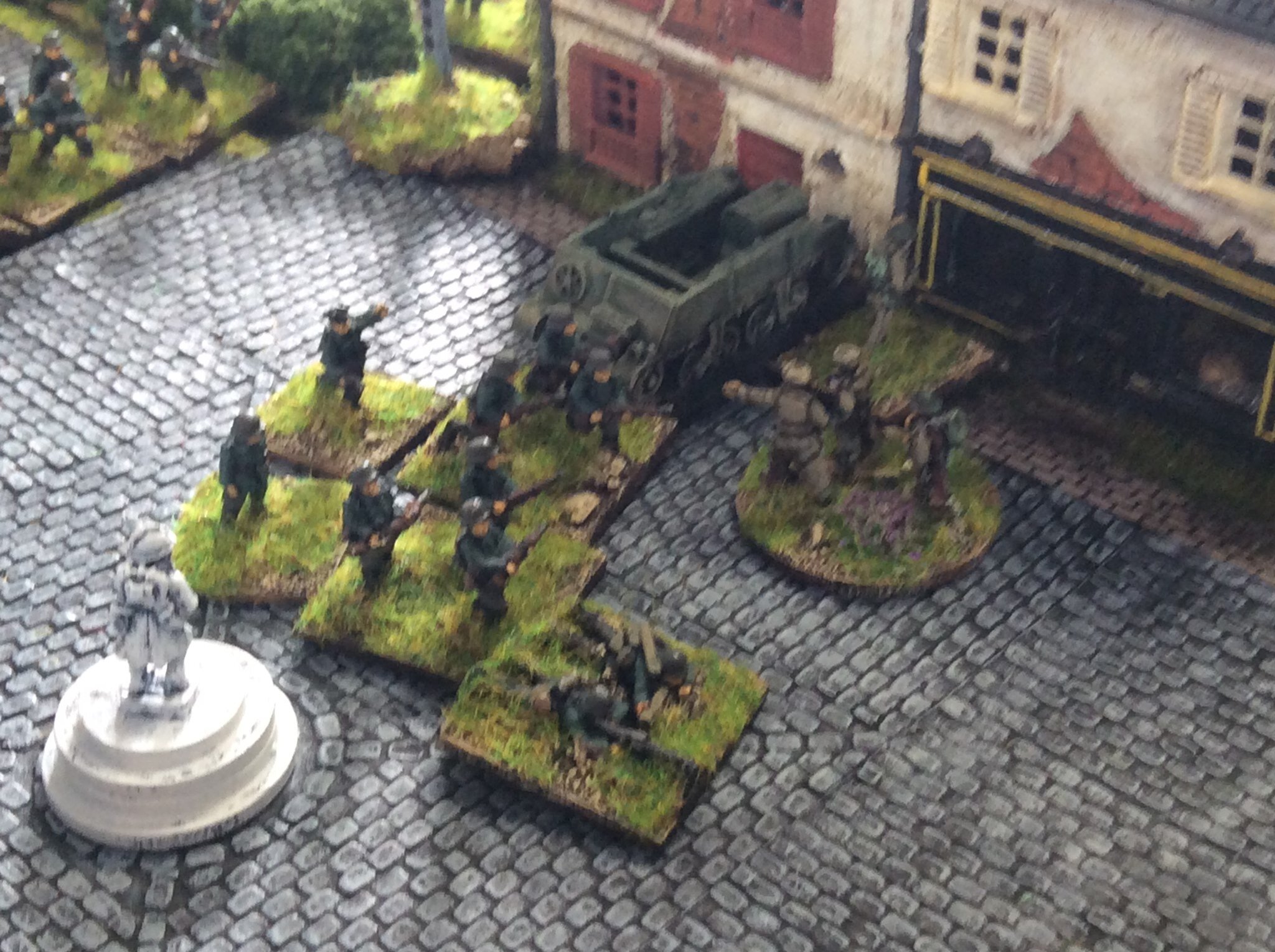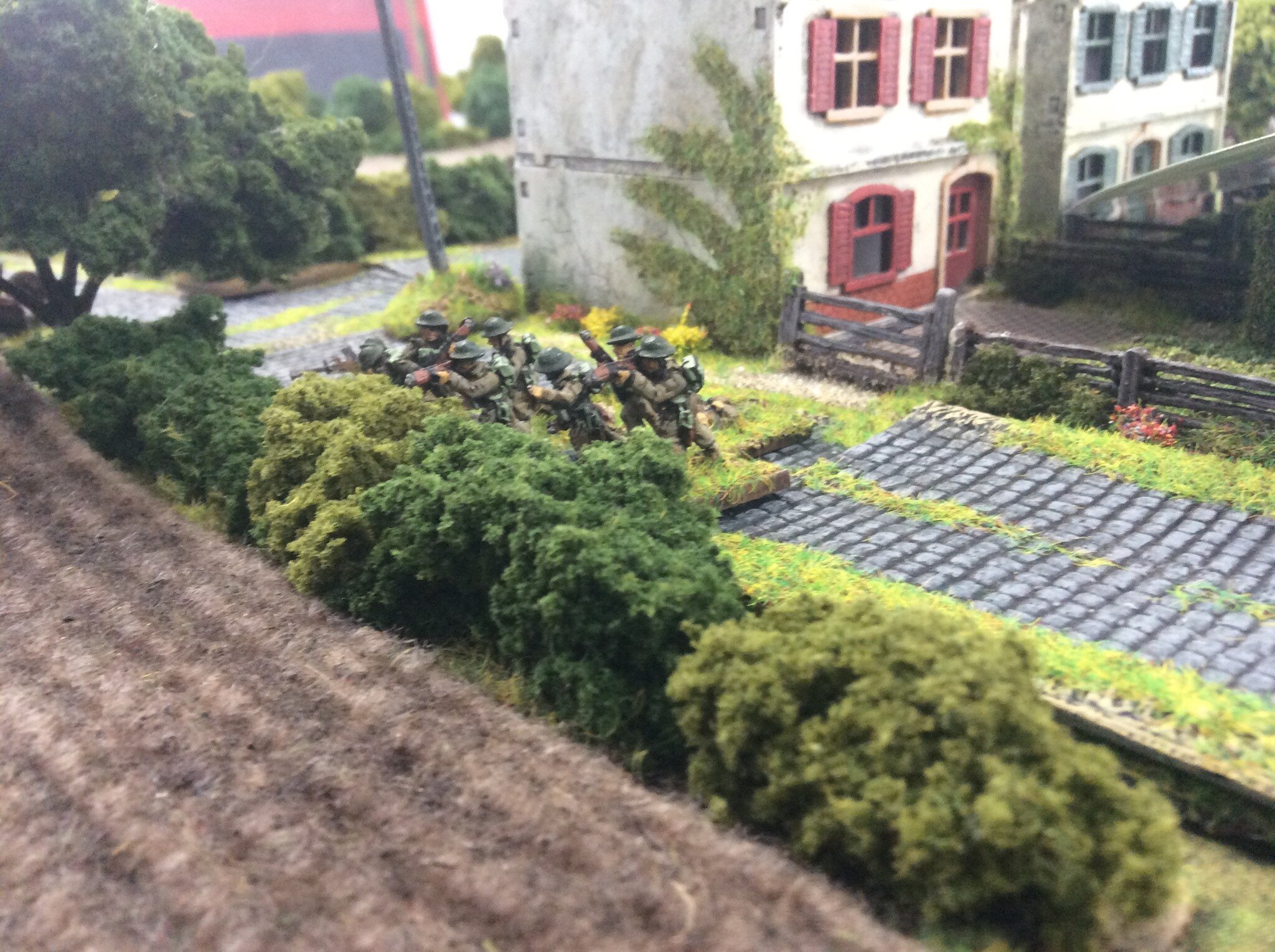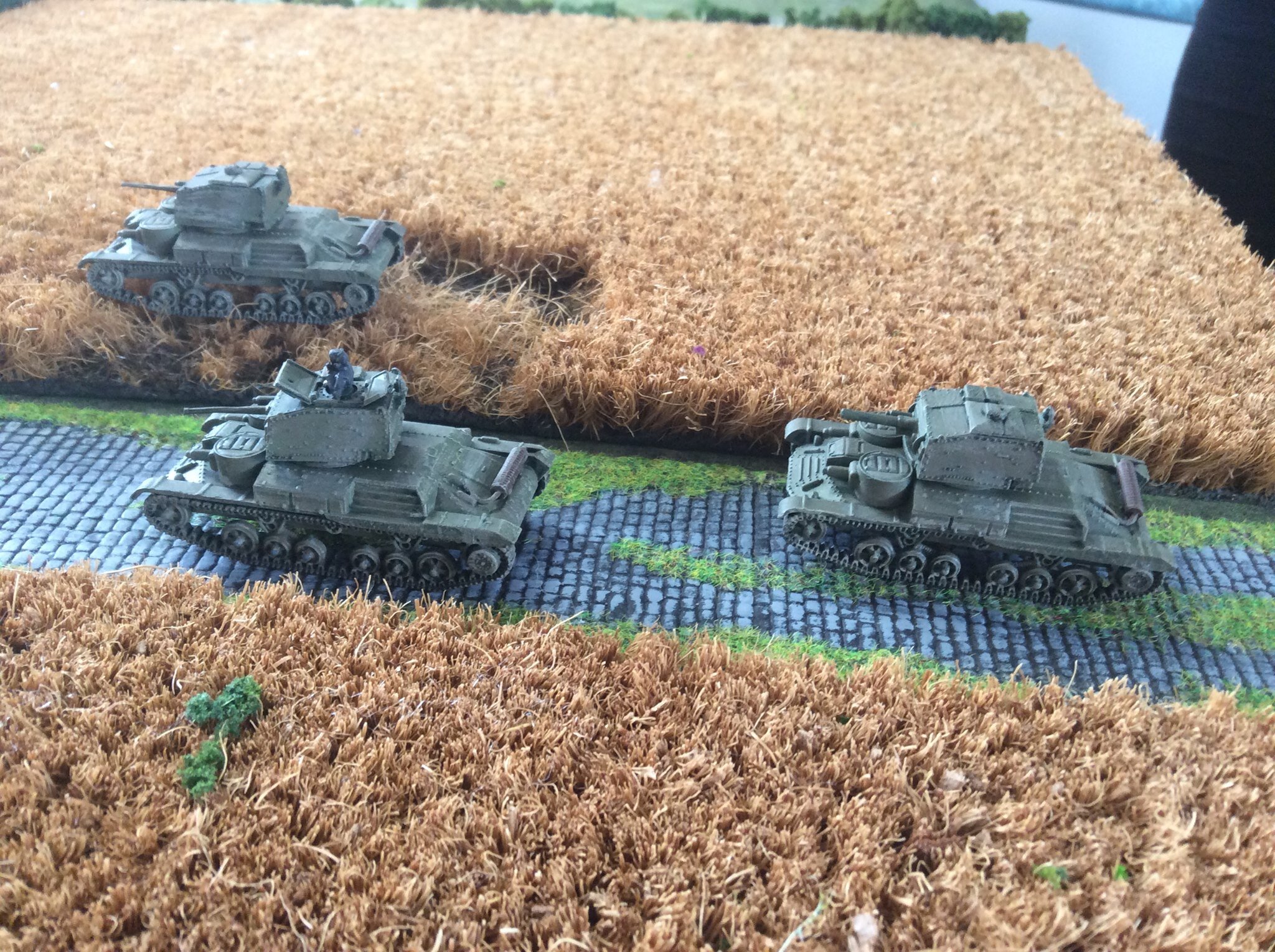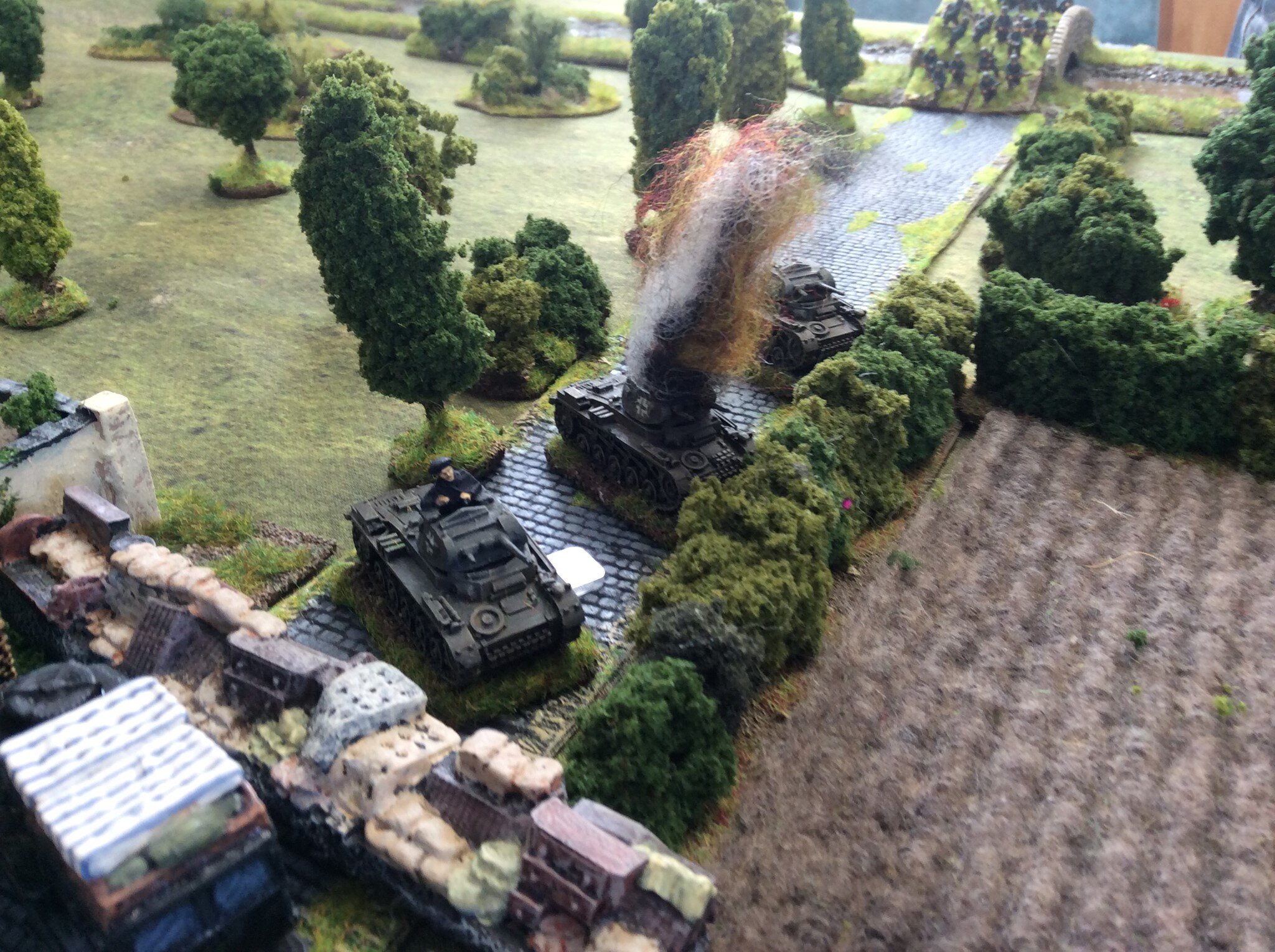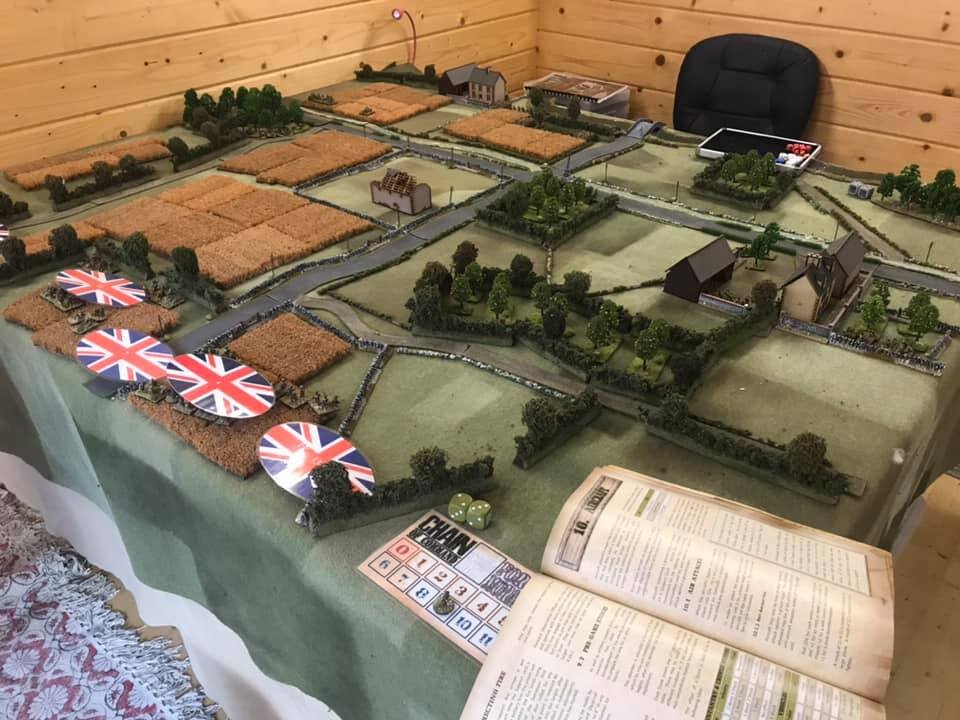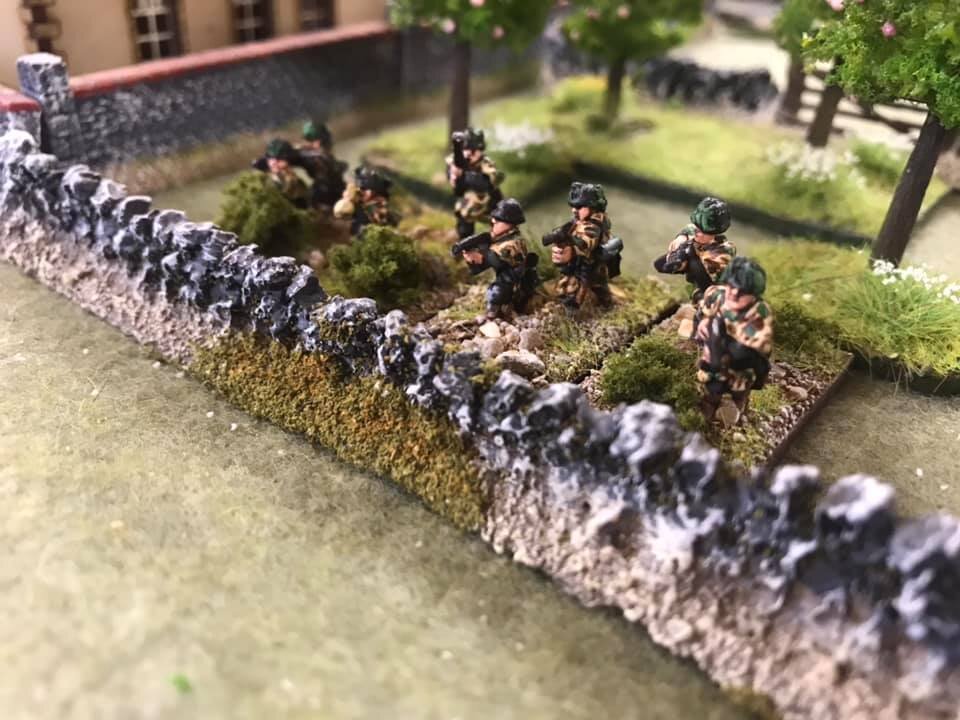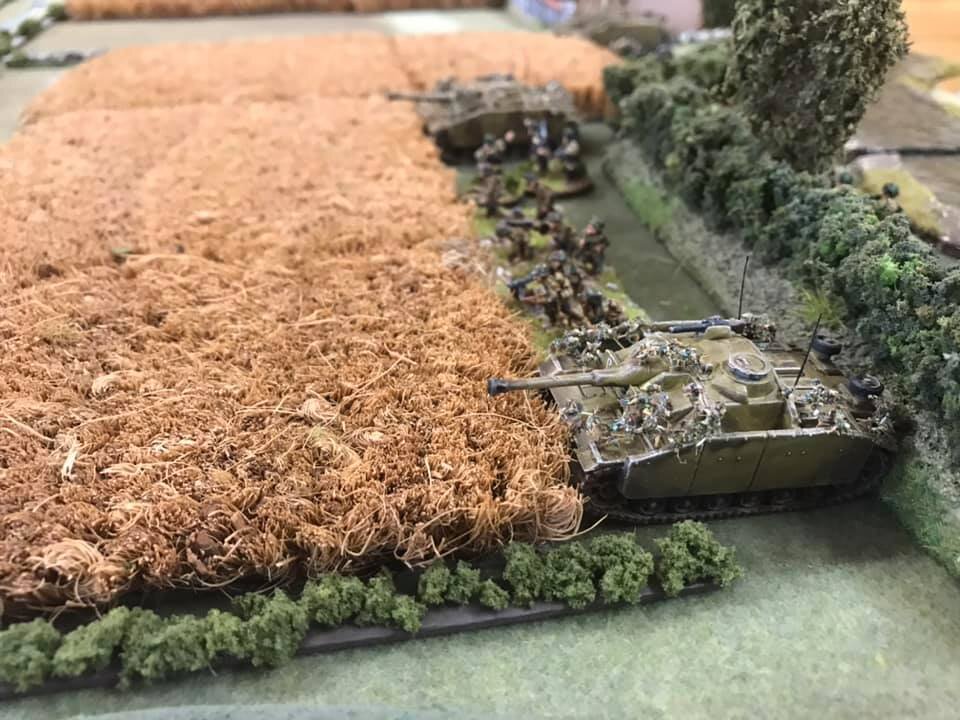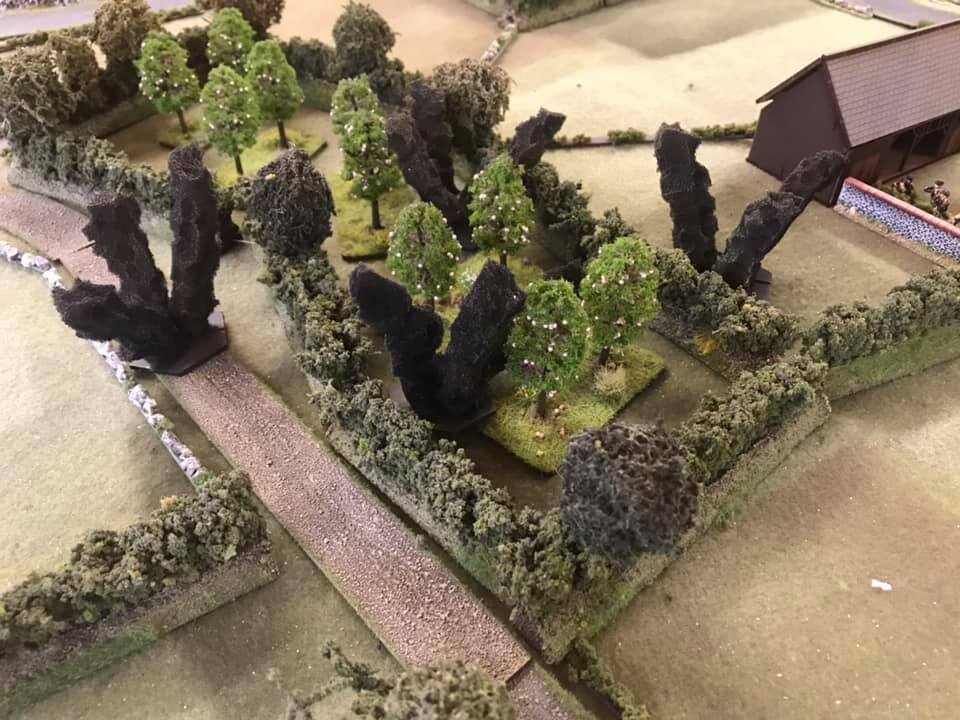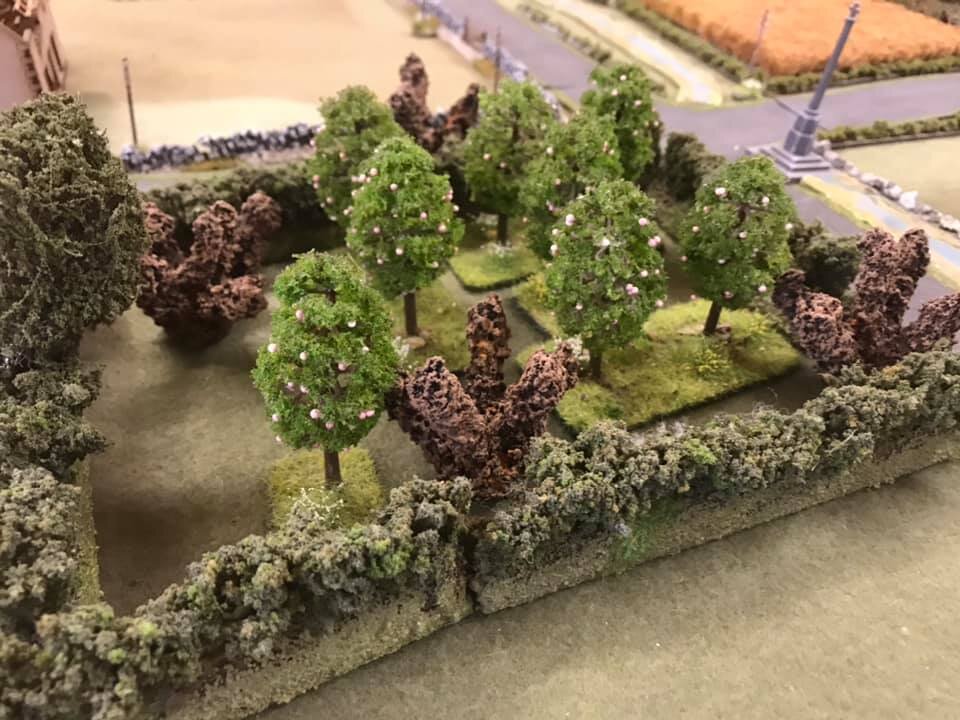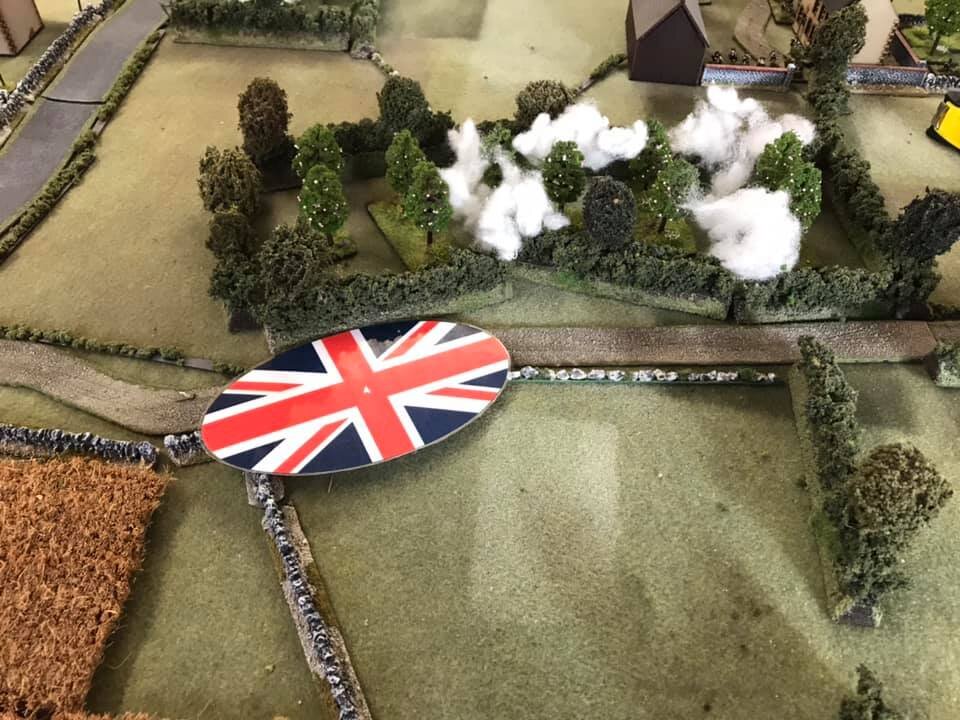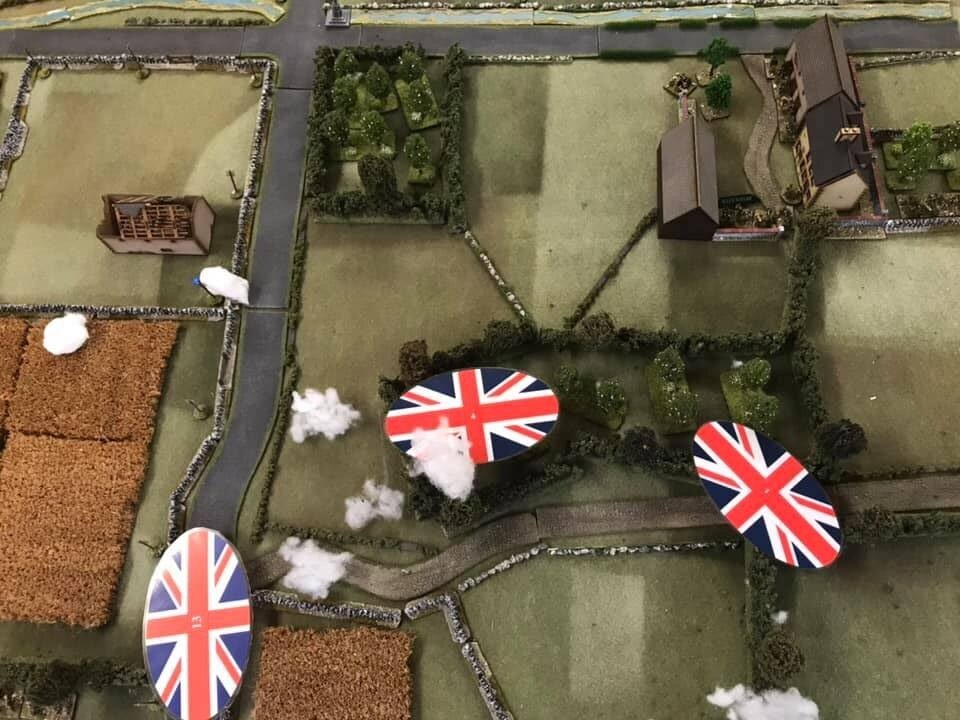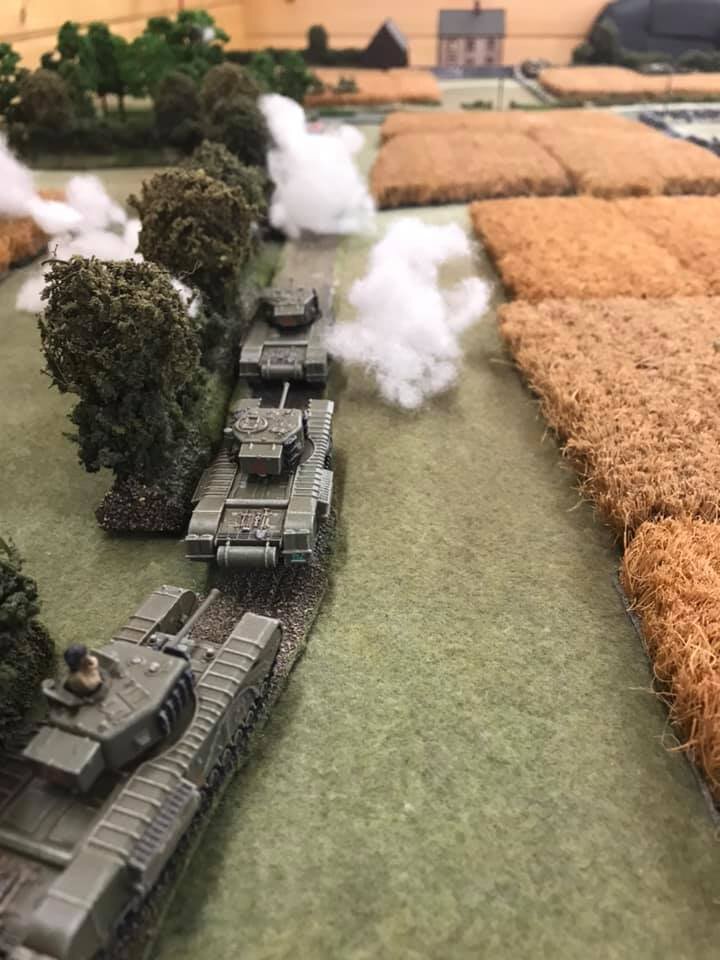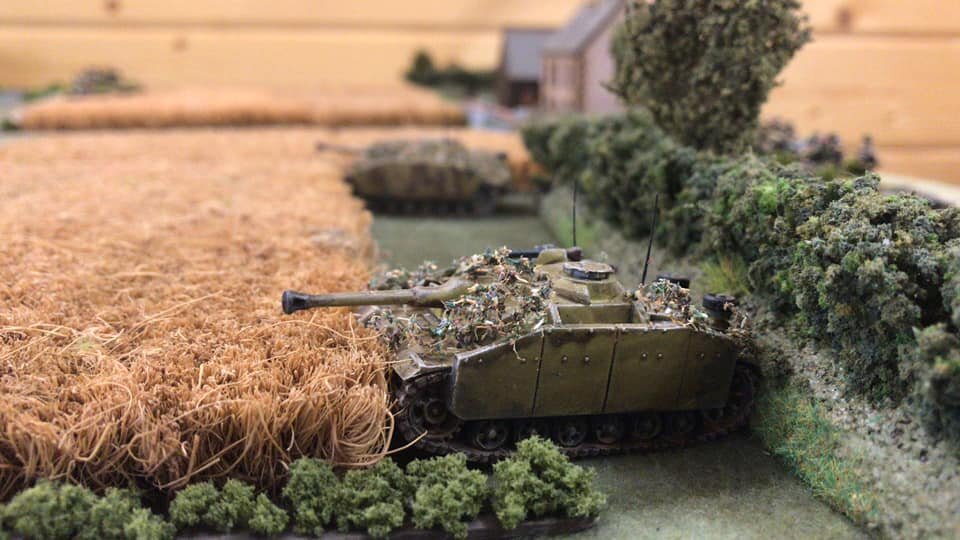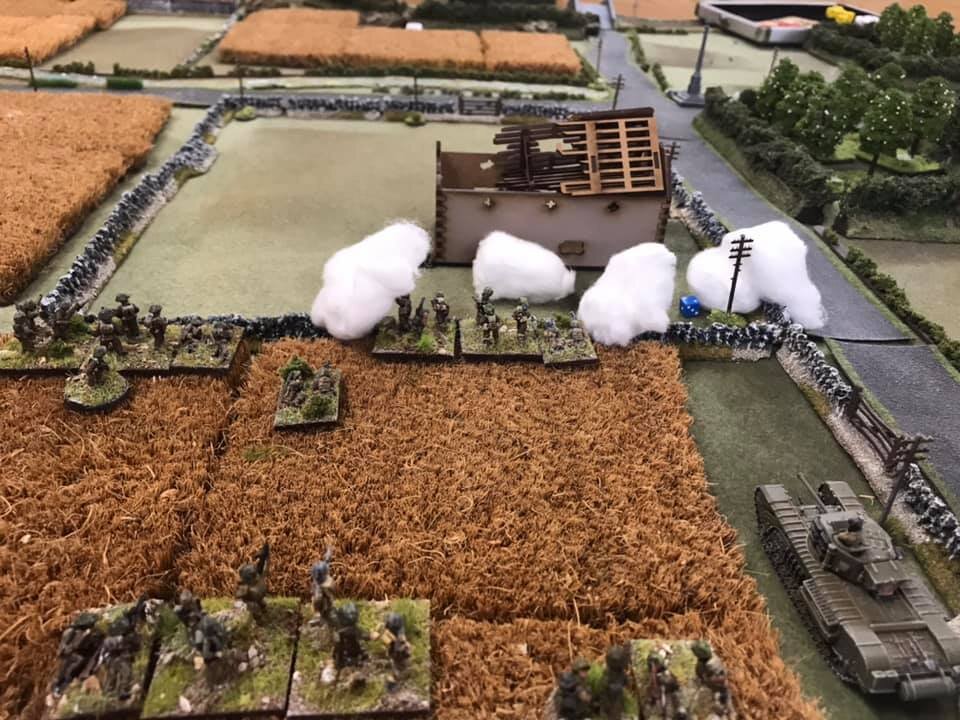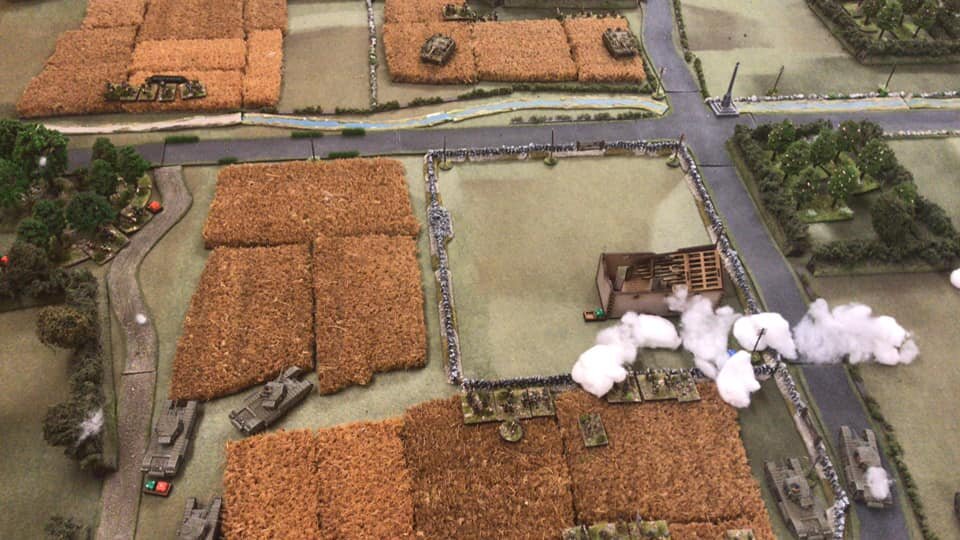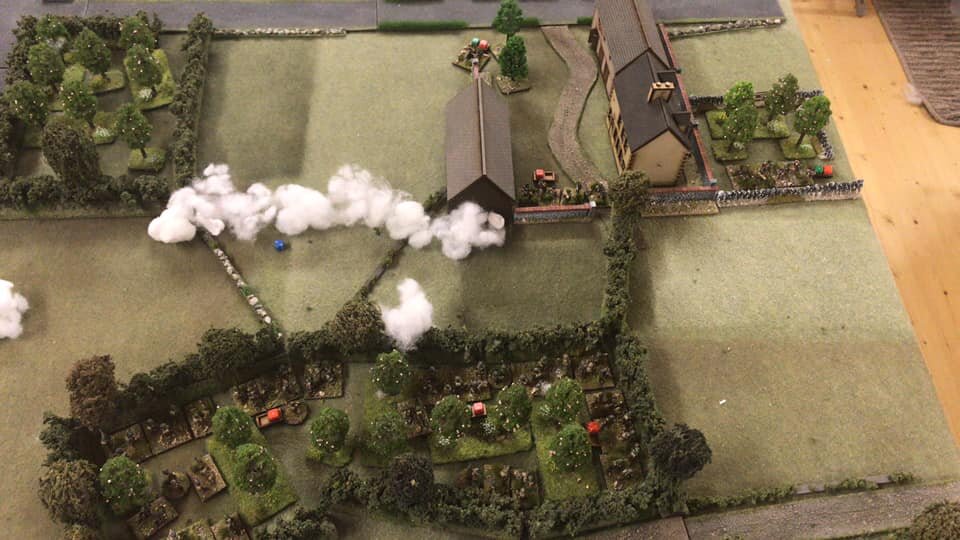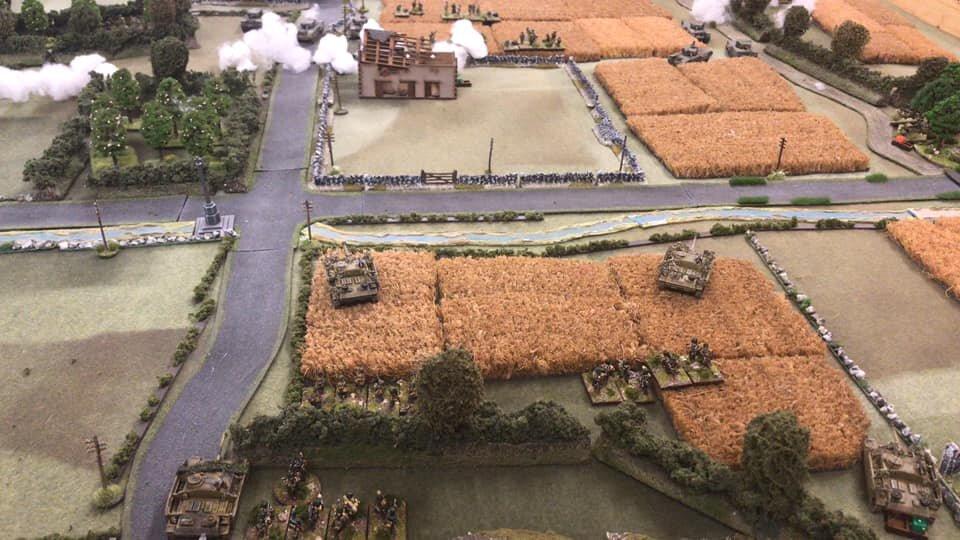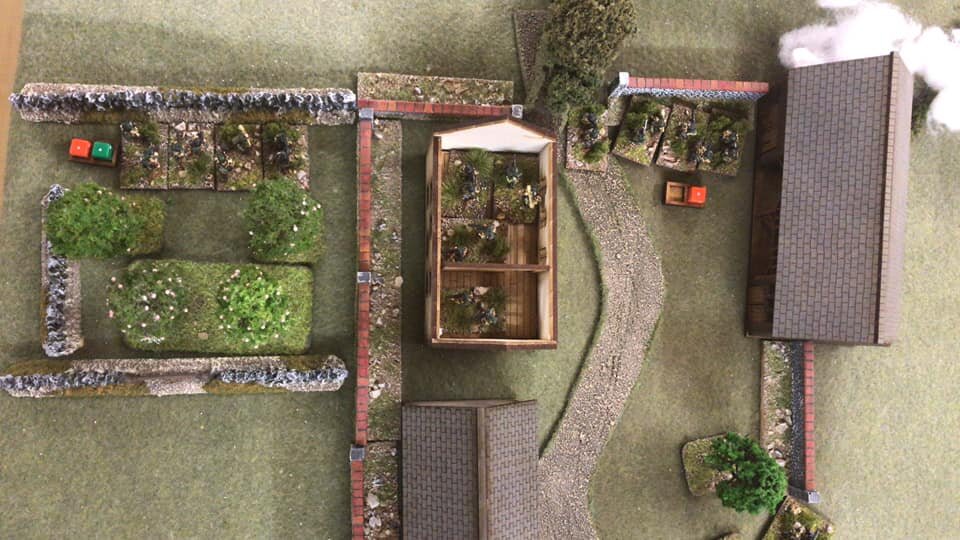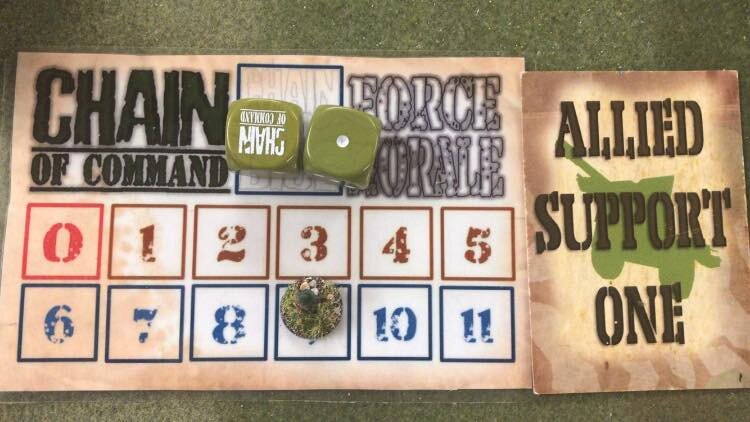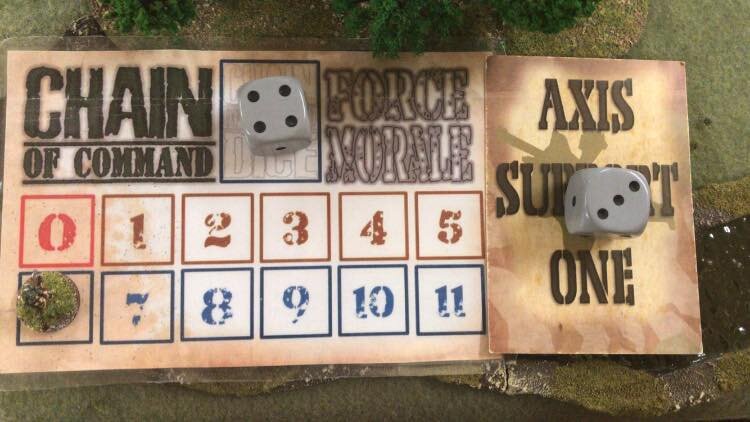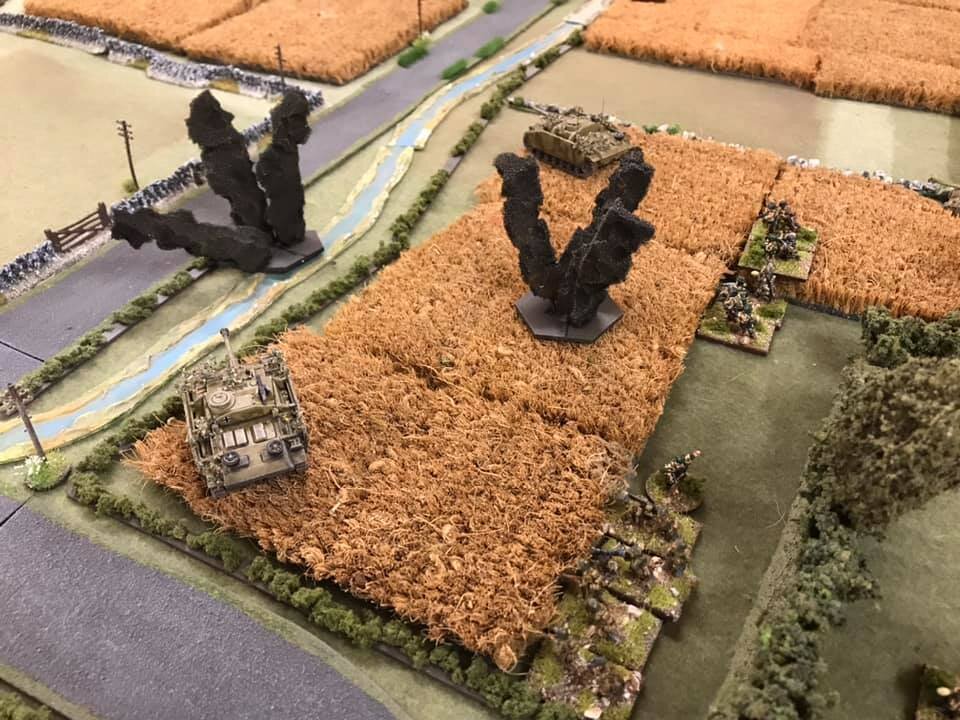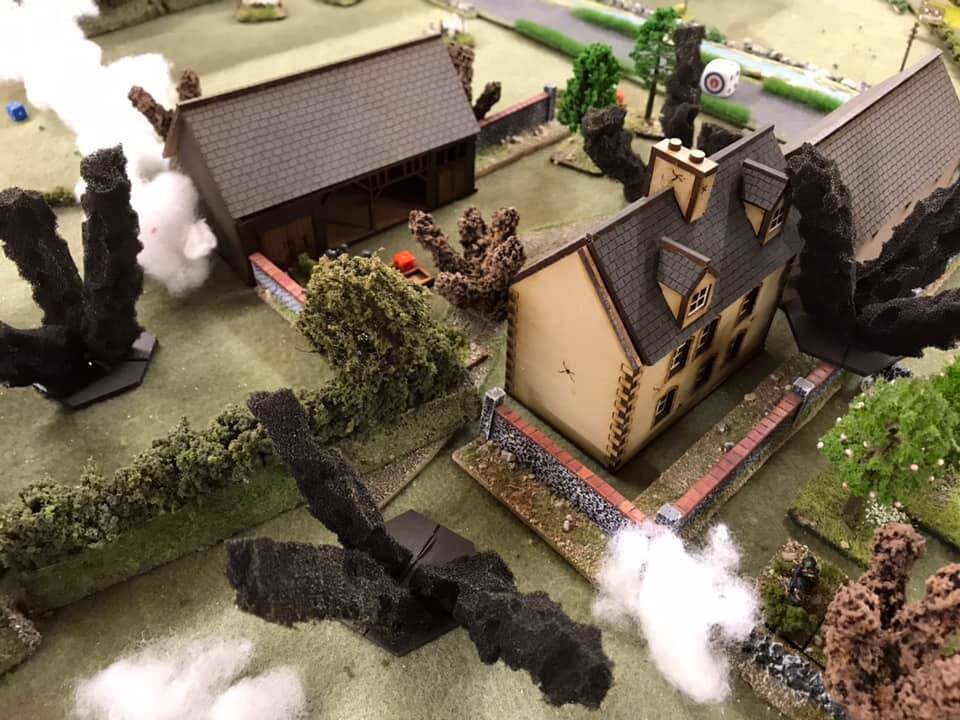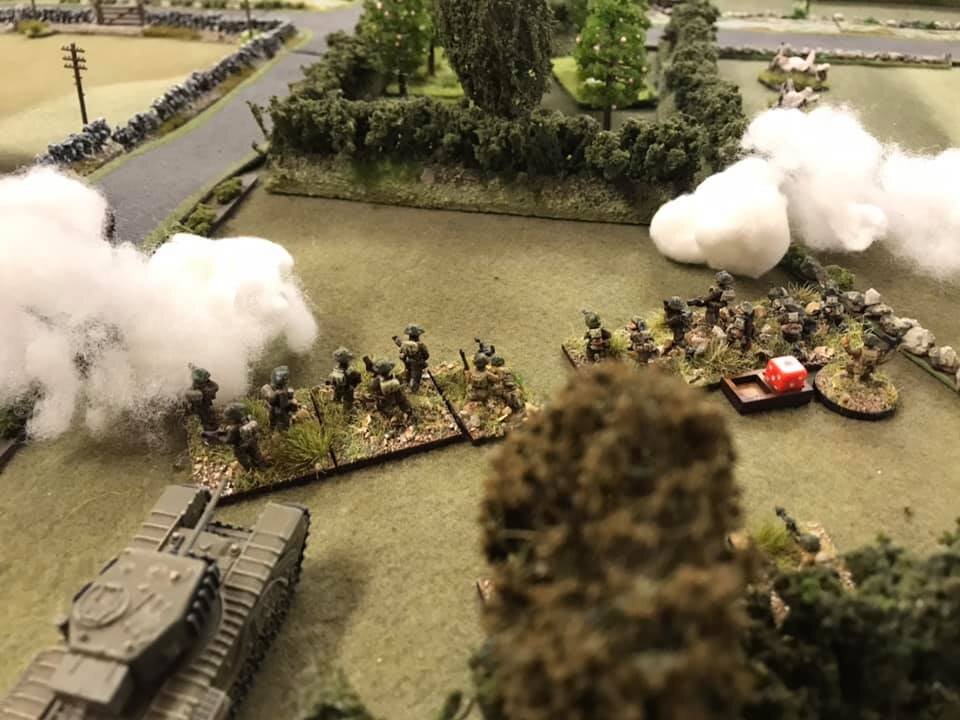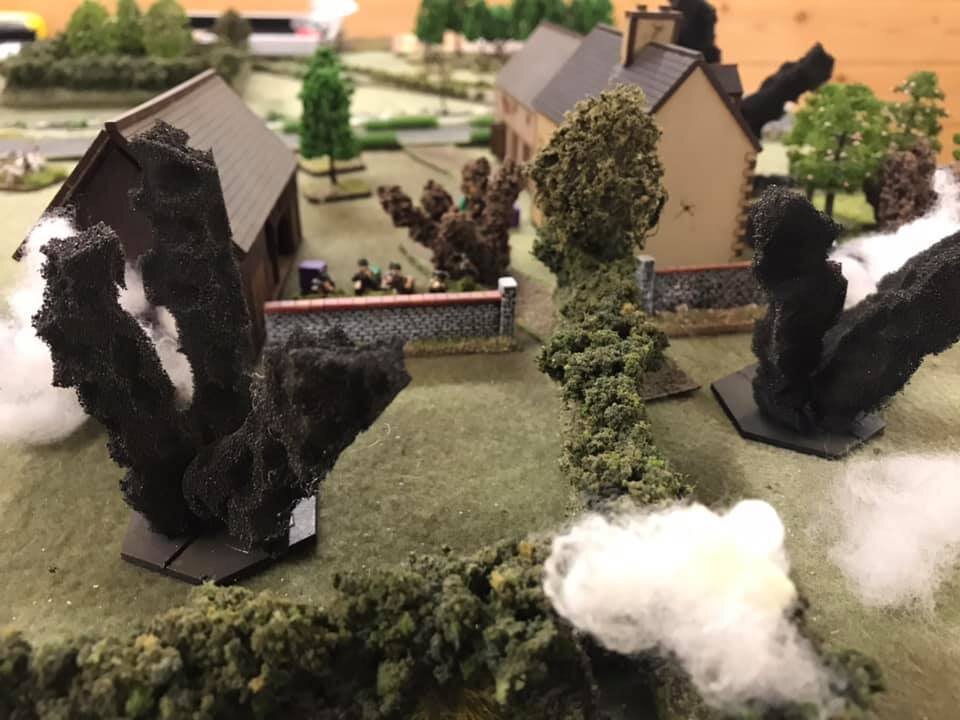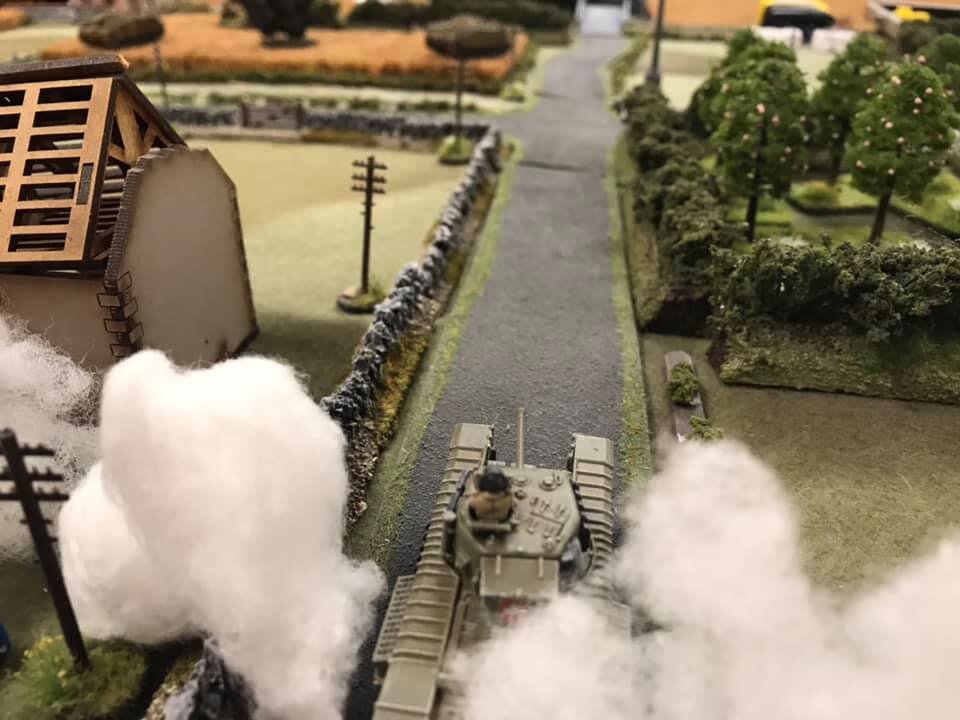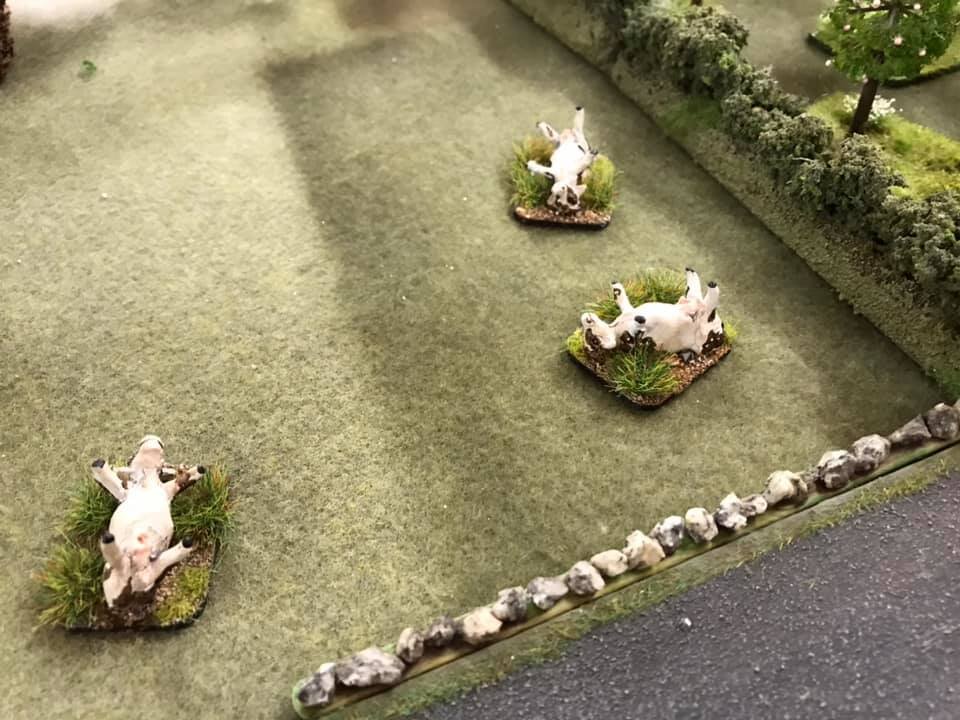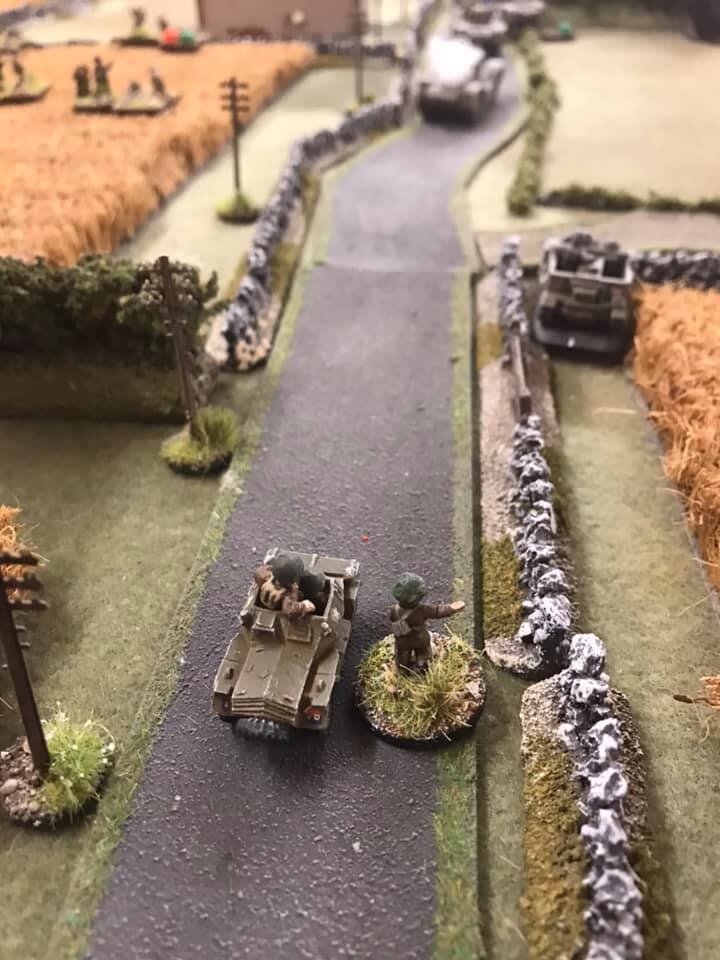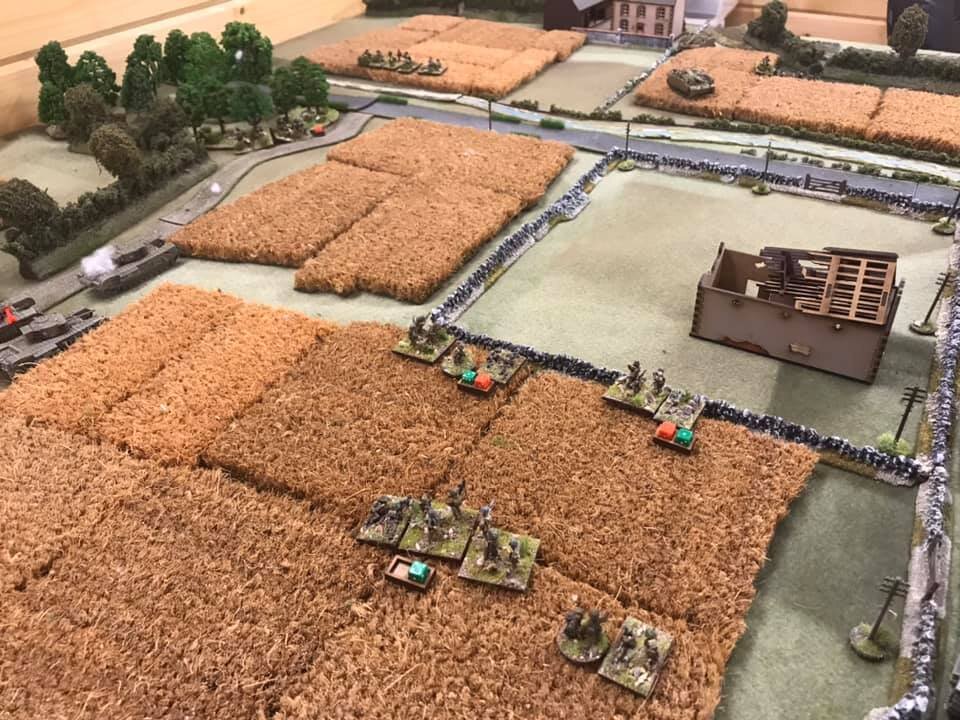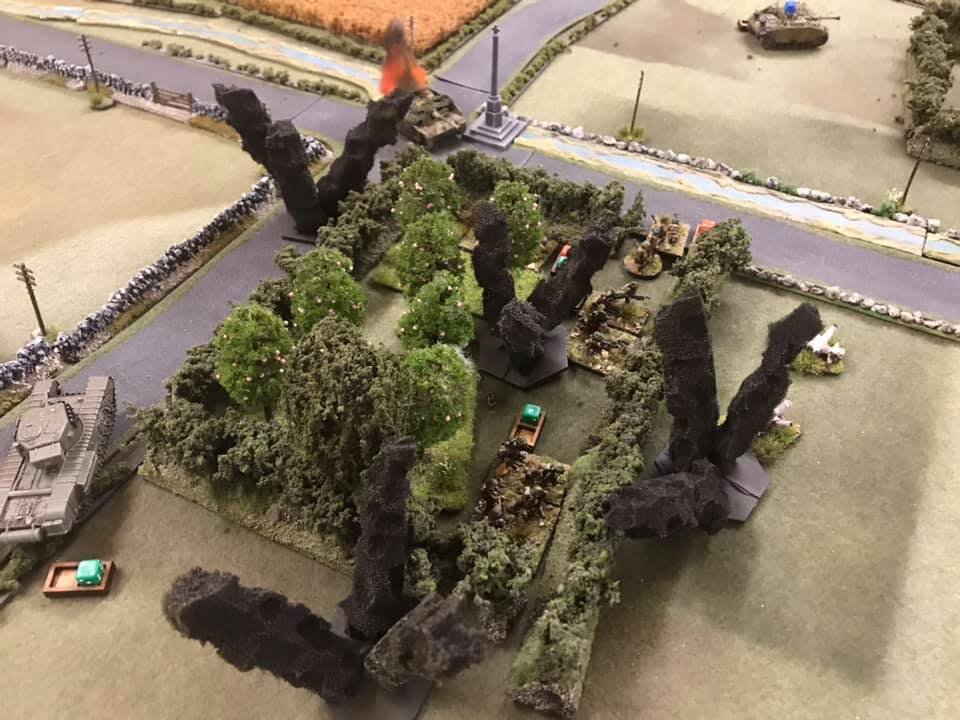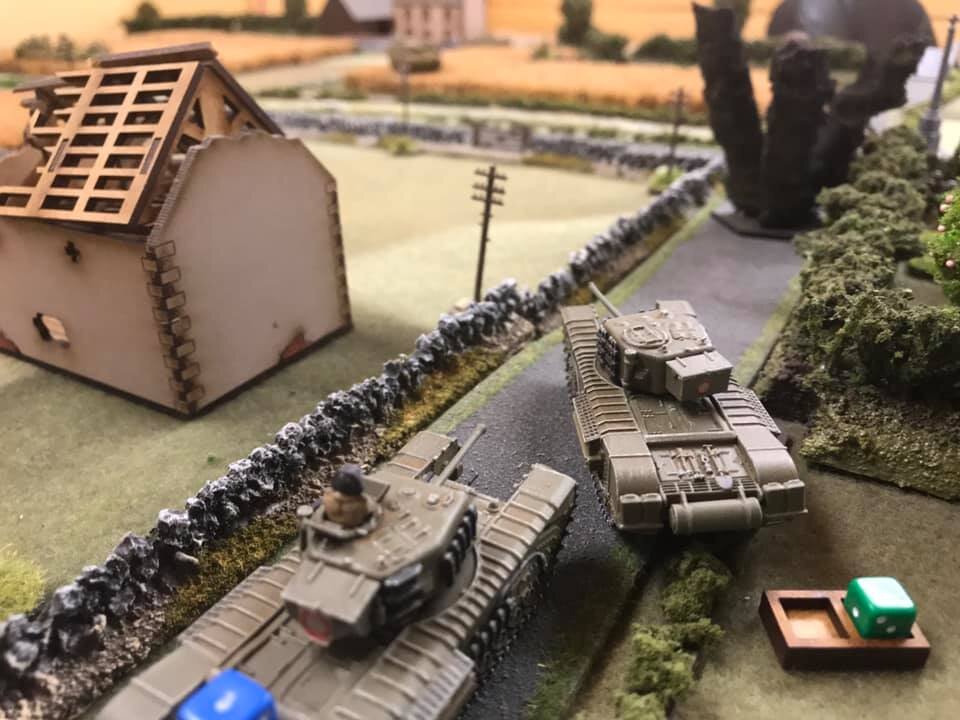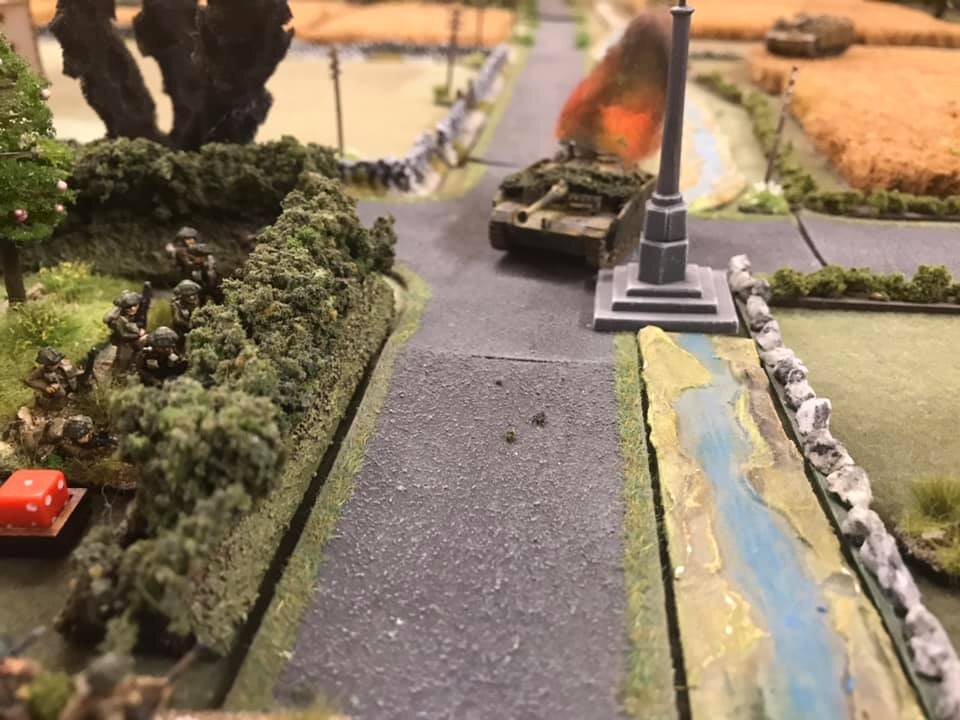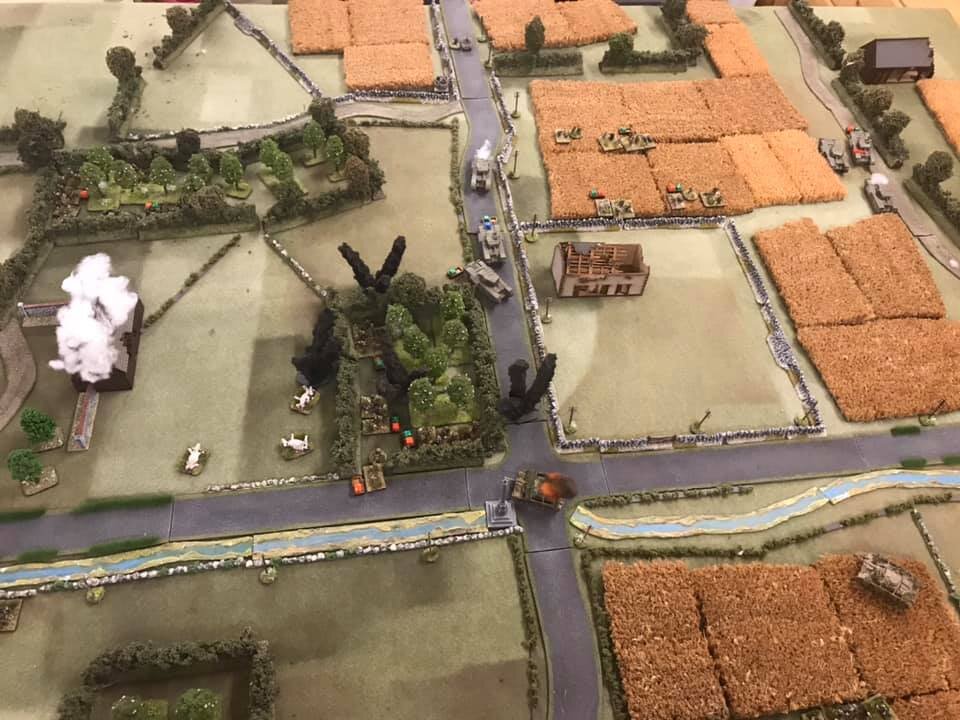Off to Dave’s for my first face to face game of I Ain’t Been Shot, Mum since before lockdown!
The scenario was set on the Eastern Front in 1943, and based on an historical encounter. Elements of the Soviet 5th Guards Tank Army (played by me) had to advance onto the table and take a village, Prokhorovka, defended by German armour. Yes, unusually for IABSM, this was to be an armour versus armour game with no infantry present.
I had what looked like an overwhelming force: a first wave of an HQ element, two platoons of three t-34s each, and a third platoon of three BT-17s. Following that, I had six more platoons of armour split into two more waves for a total of six more T-34s, three venerable KV-1s, three SU-76s, two SU-76is and, the piece de resistance, two SU-152 big beast tank killers.
If that’s what I had, I was a little nervous about what I was going to face. I’d been told to watch out for the new German Tiger tank: presumably I’d be facing about 20 of them!
The Field
The field was good tank country: flat and open. I was coming off the end of a road just where it hit a ridge. In front of me was a dried out stream crossed by a couple of bridges and, on the other side, Prokhorovka itself.
The few bits of woodland on either side of my axis of advance were negligible: so it was effectively a bowling green bisected by a ditch all the way to the buildings.
A Pre-Game Stonk
The game began with a pre-action stonk from my off-table artillery. I centered it on the village itself (our comrades there being either willing to sacrifice themselves for the good of the Motherland or deserving to die for being collaboraters) and was lucky enough to hit three Blinds, but we’d have to wait to see the effect until after they were revealed.
The Battle
With that out of the way, I drove confidently onto the table. As far as I was concerned, my first wave were a scouting party designed to draw the fire from the enemy so that my second and third waves could kill them.
That said, there was no point in being stupid about this. My T-34s manoeuvred into a hull-down position on top of the ridge, whilst my BT-7s on the left and HQ platoon on the right, went forward shouting “shoot at me, shoot at me”!
Well the Germans did just that: all German tanks came off their Blinds and opened fire.
Right in front of the bridge was a platoon of three Panzer IVs. Behind the ditch to the right were another three Panzer IVs. In the centre was some AA and HQ elements and, gulp, a Tiger I. Off to the left were a couple of low-lying StuGs. Effectively nine serious AFVs and a couple of APCs, so I outnumbered the Germans 3:1.
Death from Above
Before we resolved the German shooting, however, it was time to work out the effects of the pre-game stonk.
It did rather well!
One Panzer IV had its main gun knocked completely out of alignment so was left with only harsh language and an MMG to resist the approaching red wave and, even better, a shell had obviously landed almost on top of the Tiger: four points of Shock and a permanent minus to its firing.
Dave was not too happy!
The Opening Volley
He was a lot happier, however, once he’s fired his opening volley.
Five Panzer IVs and the two StuGs opened fire on my first wave. This could have been very nasty but, fortunately, Dave took the bait and chose to shoot at my BT-7s and HQ platoon, out in the open as they were. Two of my BT-7s, a T-26 and one T-34 exploded immediately: very much one shot, one kill.
Ouch: down to 2.5:1 odds!
Now, however, it was my turn.
My six T-34s, hull-down behind the ridge, opened fire in return. Two tanks in each platoon concentrated their fire on the three Panzer IVs in front of the bridge, the other two tanks fired at one StuG and one of the other Panzer IVs.
The platoon by the bridge was fairly well knocked out. Two main guns out and the other with lots of damage: they weren’t really a threat any more. One StuG and another Panzer IV also went up in flames: good shooting!
The Germans returned fire again, and although my one remaining BT-7 unbelievably sailed through unscathed, I did lose one of my T-34s (to the Tiger, I believe).
The Second Wave
Now, however, my second wave arrived: three KV-1s, the two SU-152s and two SU-76s for a bit of covering fire.
Almost immediately, a Stuka swooped down from overhead and narrowly missed one of the KV-Is: a narrow escape! My one remaining BT-7 lost its main gun, but then the cards fell for me, and it was my turn to shoot again. The other StuG lost its main gun, the crew from a Panzer IV from the rear platoon had to bail, and I even managed to have one of the SU-152s permanently immobilise the Tiger by blowing one of its tracks off! A few more shots forced the crew to bail from their immobile pillbox.
It was now really all over bar the shouting.
A couple of amusing incidents: one of my KV-1 moved ponderously forward and attempted to drive over the dry stream. With some glee, Dave told me that actually it wasn’t a dry stream but a Soviet-built anti-tank ditch that my KV had just fallen into, putting it out of action for the remainder of the game! This apparently really happened at the real Prokhorovka: anyone on the Soviet side who knew about the anti-tank ditch had been killed in fighting on the previous day, so the Guards blithely rolled forward and nineteen of their tanks ended up kaput in their own ditch! I bet the Commisars had a field day!
The my BT-7, main gun out, shot forward and attempted to machine gun the battered Panzer IVs on the bridge into submission. No damage done, but most amusing!
Conclusion
An interesting scenario. If I hadn’t held back my T-34s and just steamed forward, then it would have been a very different story, especially if I hadn’t been lucky enough to give the Tiger four Shock with my initial stonk. As it was, with my main body hull down, it was me conducting the duck shoot rather than the Germans.
Losing five tanks in the opening volley was painful, but they were my crappy tanks and well worth it as I then knew where all the Germans were.
I think the forces I had were easily enough to overwhelm the Germans: the only thing that might have made a difference is if they had had hull down positions as well. Then, I think, I would have need all three waves and possibly a fourth!
A great game of IABSM: ideal for getting me back into the swing of things.
Robert Avery




























